inbox and environment news: Issue 546
July 17 - 23, 2022: Issue 546
Seabirds Being Blown Off Course
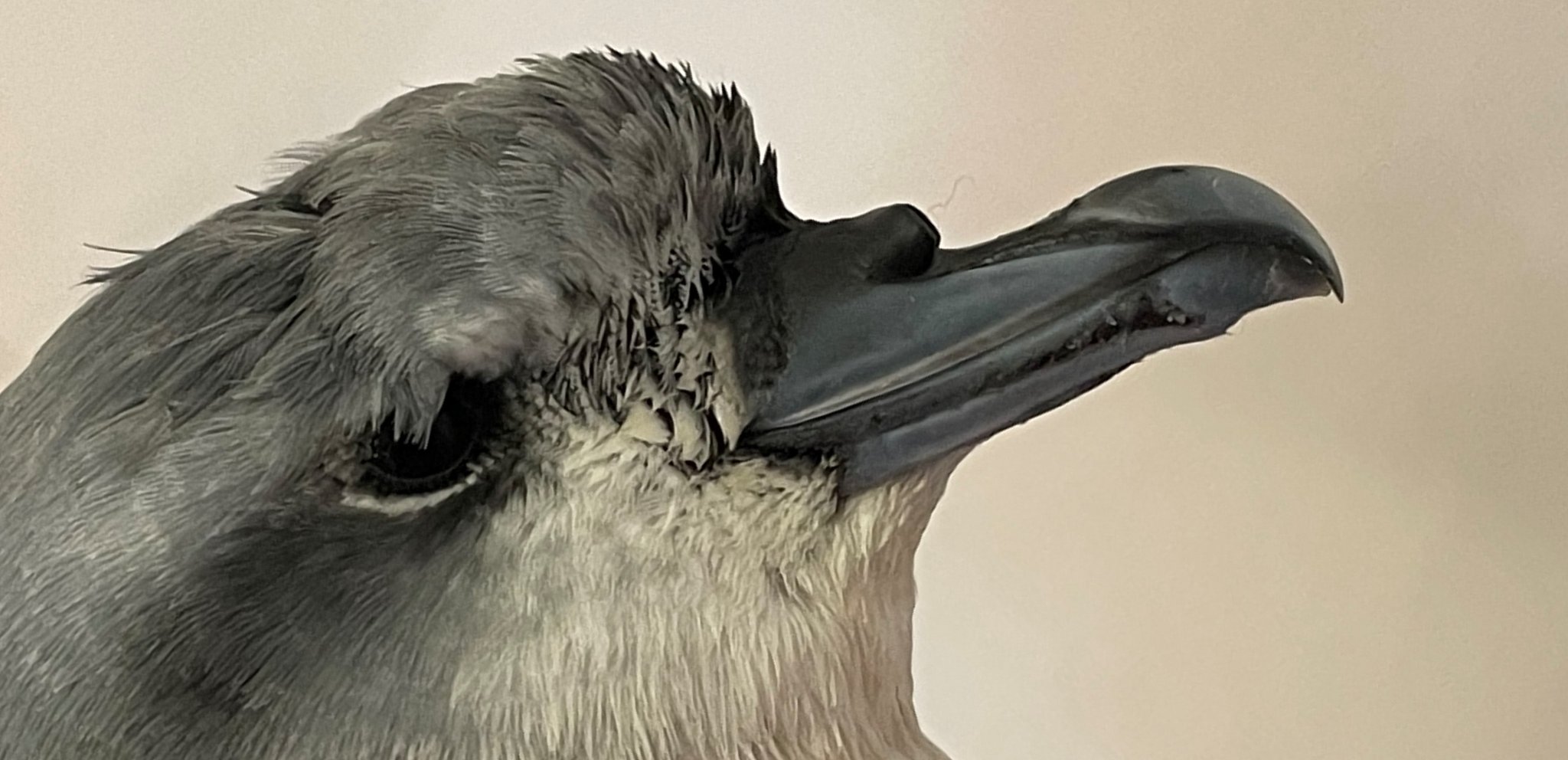
Wildlife Car Rescue Kits Now Available
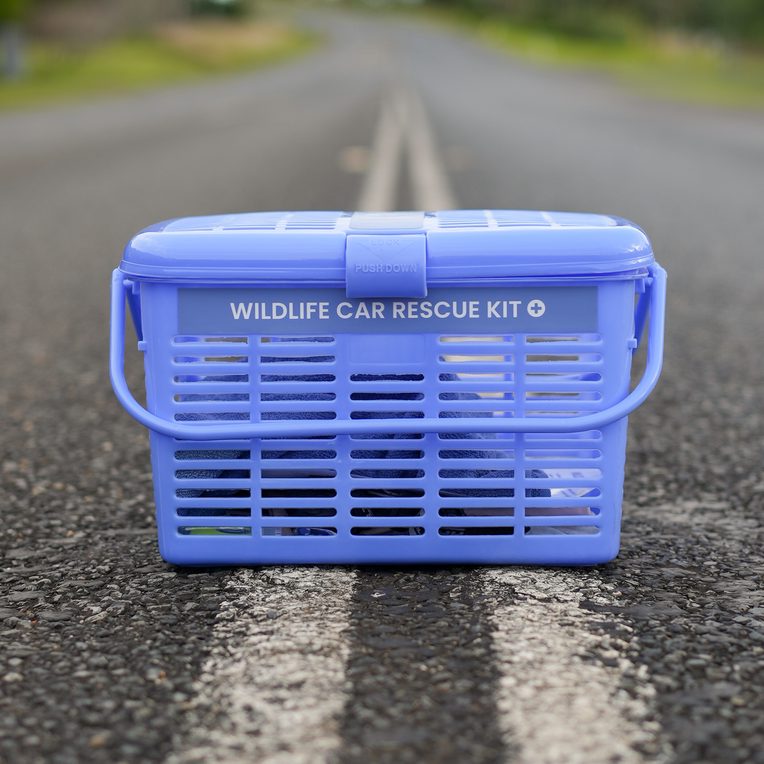
Seal At Careel Bay
Wanted: Photos Of Flies Feeding On Frogs (For Frog Conservation)
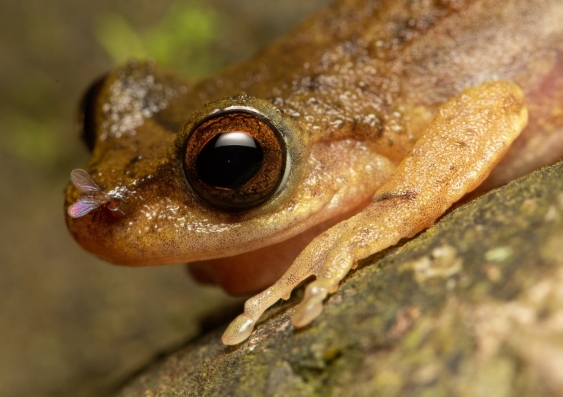
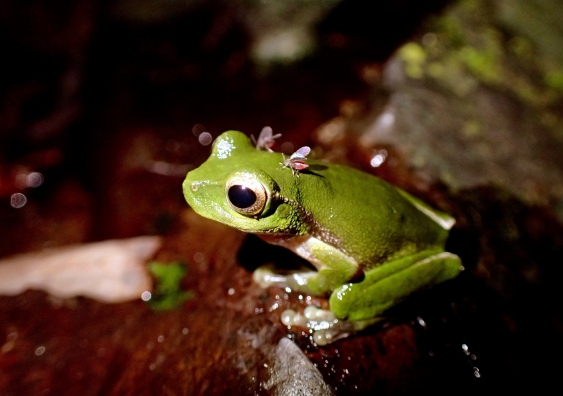
Stop It And Swap It This Plastic Free July
 To mark the beginning of Plastic Free July, the NSW Government is partnering with 17 organisations to help communities around the state stop using single-use plastic.
To mark the beginning of Plastic Free July, the NSW Government is partnering with 17 organisations to help communities around the state stop using single-use plastic.- Girl Guides NSW
- Green Connect
- Green Music Australia
- KU Children's Services
- Meals on Wheels NSW
- Men’s Shed Association
- NSW Environment & Zoo Education Centres
- OzGreen
- Plastic Free July
- Southern Cross University
- Surfing NSW
- TAFE NSW/Addison Road Community Organisation
- Take 3
- The Great Plastic Rescue
- University of New England
- University of Newcastle
- University of Wollongong
Northern Beaches Clean Up Crew: Whale Beach - Sunday July 31st
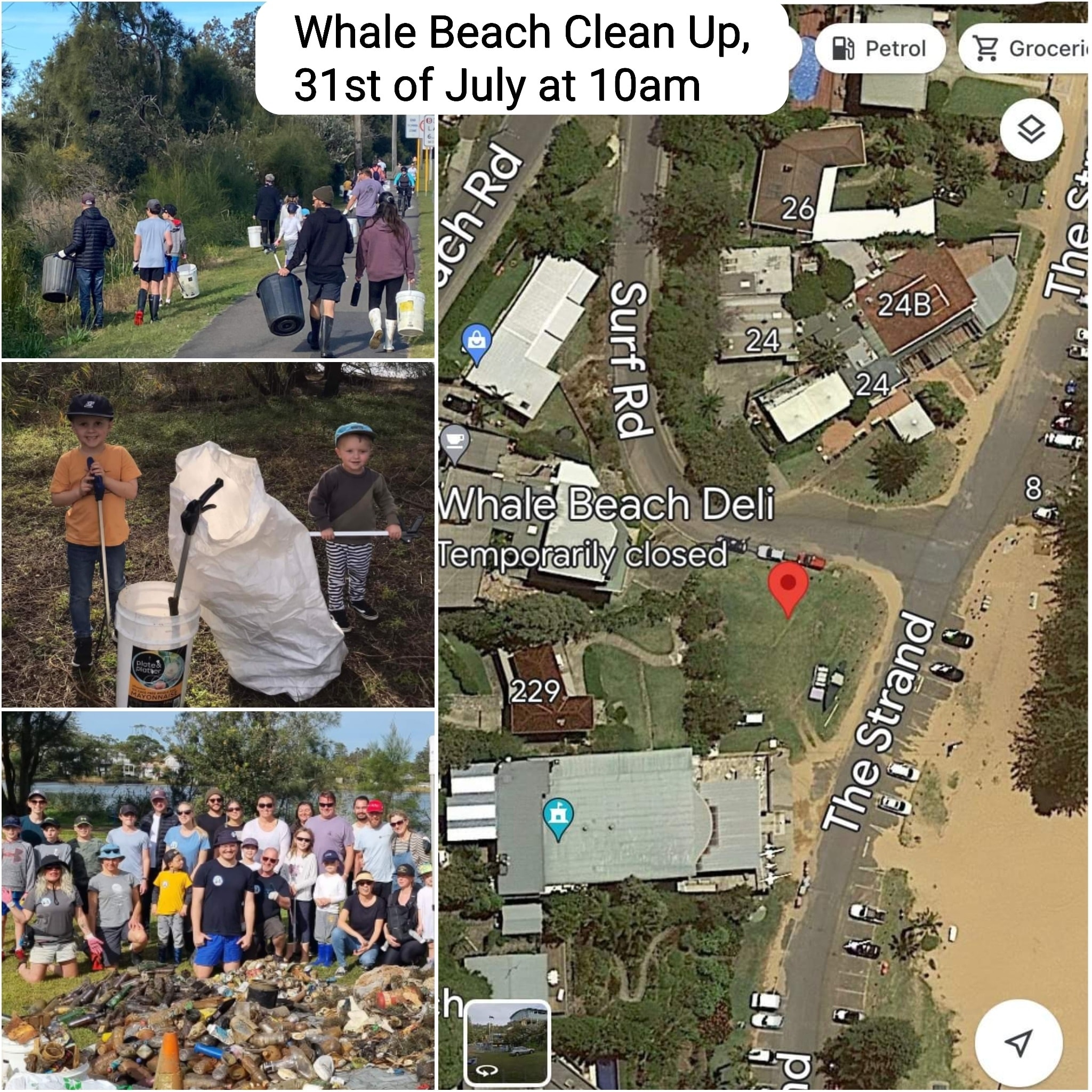
Possums In Your Roof?: Do The Right Thing

Pelicans Heading To The Coast Now: Winter Migrations
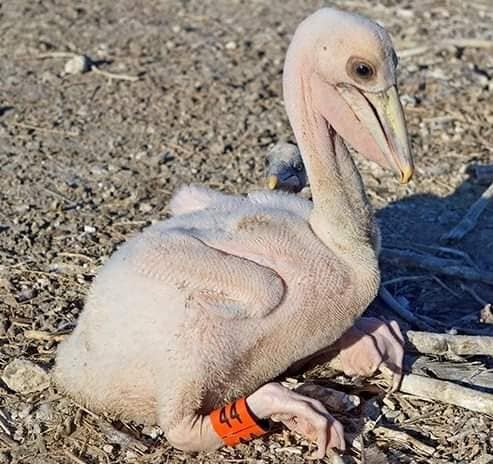
Barrenjoey Lighthouse Tours
Local Wildlife Rescuers And Carers State That Ongoing Heavy Rains Are Tough For Us But Can Be Tougher For Our Wildlife:
- Birds and possums can be washed out of trees, or the tree comes down, nests can disintegrate or hollows fill with water
- Ground dwelling animals can be flooded out of their burrows or hiding places and they need to seek higher ground
- They are at risk crossing roads as people can't see them and sudden braking causes accidents
- The food may disappear - insects, seeds and pollens are washed away, nectar is diluted and animals can be starving
- They are vulnerable in open areas to predators, including our pets
- They can't dry out and may get hypothermia or pneumonia
- Animals may seek shelter in your home or garage.
You can help by:
- Keeping your pets indoors
- Assessing for wounds or parasites
- Putting out towels or shelters like boxes to provide a place to hide
- Drive to conditions and call a rescue group if you see an animal hit (or do a pouch check or get to a vet if you can stop)
- If you are concerned take a photo and talk to a rescue group or wildlife carer
There are 2 rescue groups in the Northern Beaches:
Sydney Wildlife: 9413 4300
WIRES: 1300 094 737
Please be patient as there could be a few enquiries regarding the wildlife.
Generally Sydney Wildlife do not recommend offering food but it may help in some cases. Please ensure you know what they generally eat and any offerings will not make them sick. You can read more on feeding wildlife here
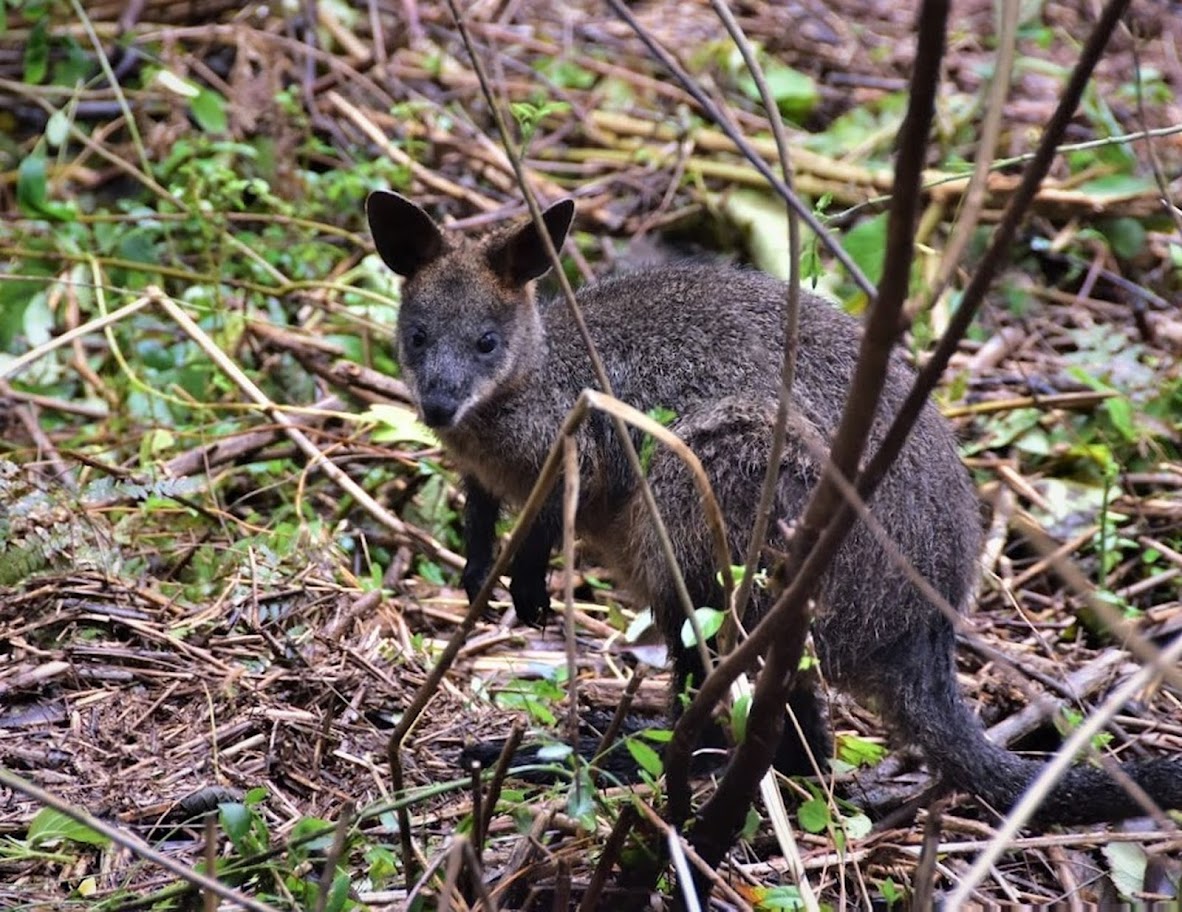
Information courtesy Ed Laginestra, Sydney Wildlife volunteer. Photo: Warriewood Wetlands Wallaby by Kevin Murray, March 2022.
Aviaries + Possum Release Sites Needed

Sydney Wildlife Rescue: Helpers Needed
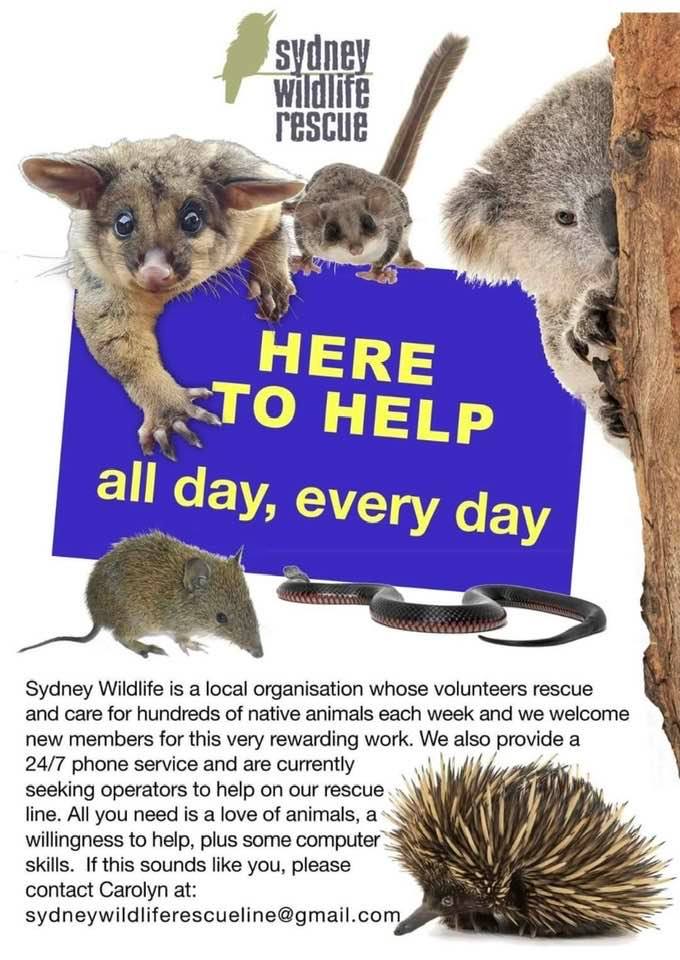
Bushcare In Pittwater
Where we work Which day What time
Avalon
Angophora Reserve 3rd Sunday 8:30 - 11:30am
Avalon Dunes 1st Sunday 8:30 - 11:30am
Avalon Golf Course 2nd Wednesday 3 - 5:30pm
Careel Creek 4th Saturday 8:30 - 11:30am
Toongari Reserve 3rd Saturday 9 - 12noon (8 - 11am in summer)
Bangalley Headland 2nd Sunday 9 to 12noon
Bayview
Winnererremy Bay 4th Sunday 9 to 12noon
Bilgola
North Bilgola Beach 3rd Monday 9 - 12noon
Algona Reserve 1st Saturday 9 - 12noon
Plateau Park 1st Friday 8:30 - 11:30am
Church Point
Browns Bay Reserve 1st Tuesday 9 - 12noon
McCarrs Creek Reserve Contact Bushcare Officer To be confirmed
Clareville
Old Wharf Reserve 3rd Saturday 8 - 11am
Elanora
Kundibah Reserve 4th Sunday 8:30 - 11:30am
 Mona Vale
Mona Vale Mona Vale Beach Basin 1st Saturday 8 - 11am
Mona Vale Dunes 2nd Saturday +3rd Thursday 8:30 - 11:30am
Newport
Bungan Beach 4th Sunday 9 - 12noon
Crescent Reserve 3rd Sunday 9 - 12noon
North Newport Beach 4th Saturday 8:30 - 11:30am
Porter Reserve 2nd Saturday 8 - 11am
North Narrabeen
Irrawong Reserve 2nd Saturday 2 - 5pm
Palm Beach
North Palm Beach Dunes 3rd Saturday 9 - 12noon
Scotland Island
Catherine Park 2nd Sunday 10 - 12:30pm
Elizabeth Park 1st Saturday 9 - 12noon
Pathilda Reserve 3rd Saturday 9 - 12noon
Warriewood
Warriewood Wetlands 1st Sunday 8:30 - 11:30am
Whale Beach
Norma Park 1st Friday 9 - 12noon
Western Foreshores
Coopers Point, Elvina Bay 2nd Sunday 10 - 1pm
Rocky Point, Elvina Bay 1st Monday 9 - 12noon
Gardens And Environment Groups And Organisations In Pittwater
Research reveals fire is pushing 88% of Australia’s threatened land mammals closer to extinction
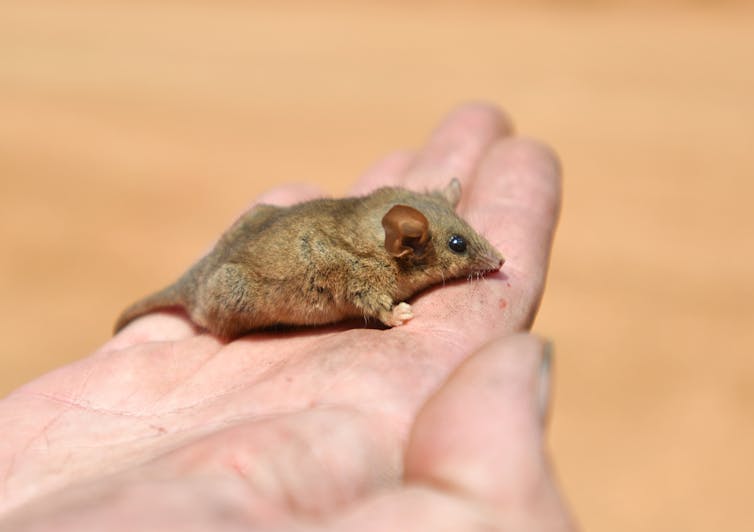
About 100 of Australia’s unique land mammals face extinction. Of the many threats contributing to the crisis, certain fire regimes are among the most pervasive.
In a new paper, we reveal how “inappropriate” fire patterns put 88% of Australia’s threatened land mammals at greater risk of extinction – from ground-dwelling bandicoots to tree-climbing possums and high-flying microbats.
Our research also identifies what type of fires are most damaging to threatened mammals, and shows some mammals are suffering due to a lack of fire.
A better understanding of how inappropriate fire regimes damage mammal populations is crucial to addressing biodiversity loss and improving conservation efforts.
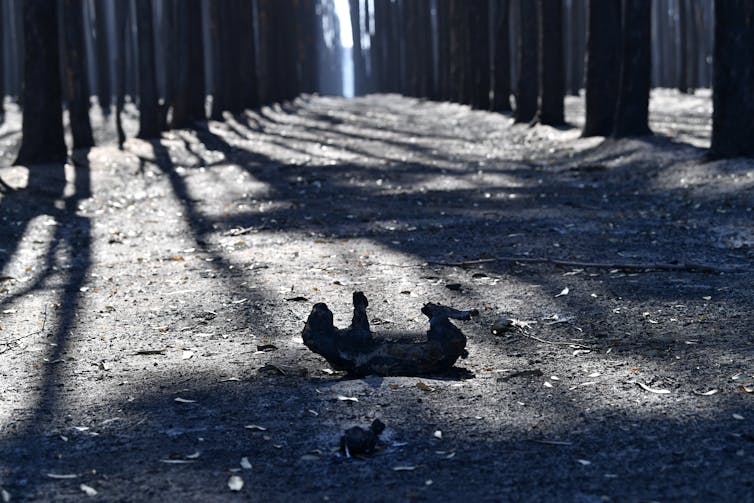
Understanding Patterns Of Fire
Fire is an important ecological process. Yet human actions – such as global heating, forestry and agriculture – are transforming fire activity in ways that challenge nature’s ability to cope.
“Inappropriate” fire regimes are those with patterns that drive biodiversity decline.
Fire patterns are made up of various components, including frequency, intensity, seasonality and size. But to date, there’s been no Australia-wide assessment of which components make a fire regime inappropriate for threatened species.
Our research set out to close this knowledge gap. It involved a comprehensive review of more than 400 research articles and policy documents on fires and mammals, and taking a close look at the evidence linking the two.
To start, we identified whether land mammals of conservation concern – those listed as critically endangered, endangered or vulnerable – were at risk from fire-related threats. We found that fire threatens 88% of these mammals.
Then we assessed the scientific evidence, such as field studies and expert opinion, to find out which fire components were in play. Contributing most to population declines were fires that are: intense and severe; large and extensive; and frequent.
Such a result might be expected. But significantly, we discovered these fire patterns are threatening species across the continent – from the arid interior to temperate forests in the south and tropical savannas to the north.
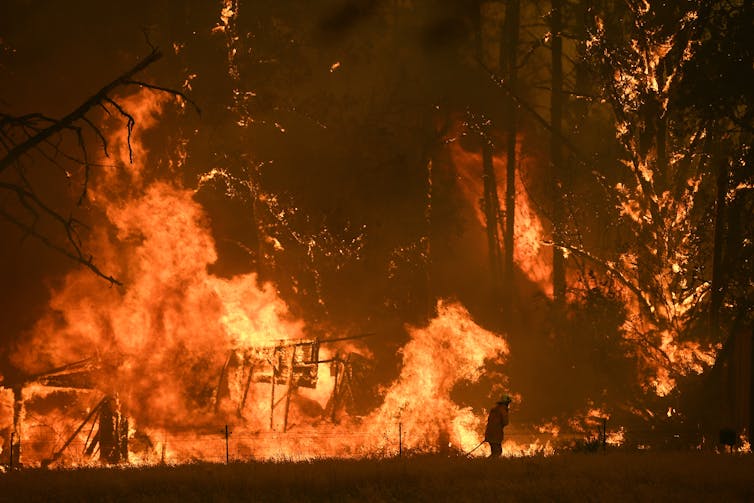
And our analysis went further, by identifying how these fire patterns may kill individual mammals and drive down populations.
Intense and severe fires usually generate a lot of heat and smoke, which can kill animals immediately or shortly afterwards. Such deaths are probably the cause of a decline in koala populations after intense and severe bushfires in temperate forests, as well as the western ringtail possum and numbat.
Animals may also die in the weeks and months after a fire due to a lack of food and shelter – especially when large and extensive fires destroy habitat over a wide area.
This was likely the case for a species of antechinus – a small mammal reliant on vegetation cover. Populations of swamp antechinus were considered extinct in some places after the large and severe Ash Wednesday fires in 1983 burned 40,000 hectares of heathy woodlands in southeast Australia.
In tropical savannas, frequent and intense fires affect reproduction of northern quolls, by reducing nesting resources and killing young in the pouch.
And some animals can suffer due to a lack of fire. For example, declines in some populations of northern bettongs may be due to long periods without fire which led to a decline in the grasses they eat.

Fires Are Not The Only Threat
But why do fires pose a threat to species that have evolved in a fire-prone landscape such as Australia? We believe it’s because several threatening processes, on their own and in combination, have reduced the size of mammal populations and affected their capacity to cope with fire.
For example, habitat loss and fragmentation means smaller populations of mammals are restricted to increasingly narrow geographic areas. This makes them more likely to be harmed by intense and large fires.
And when fire destroys vegetation cover, native animals are more vulnerable to being hunted by introduced species such as foxes and feral cats.
Climate change, grazing activity and weed invasion can also interact with fire to exacerbate mammal declines.
Importantly, fire regimes are also changing rapidly. The Black Summer fires of 2019-2020 – a disaster intensified by climate change – were unprecedented in terms of size and area severely burnt.
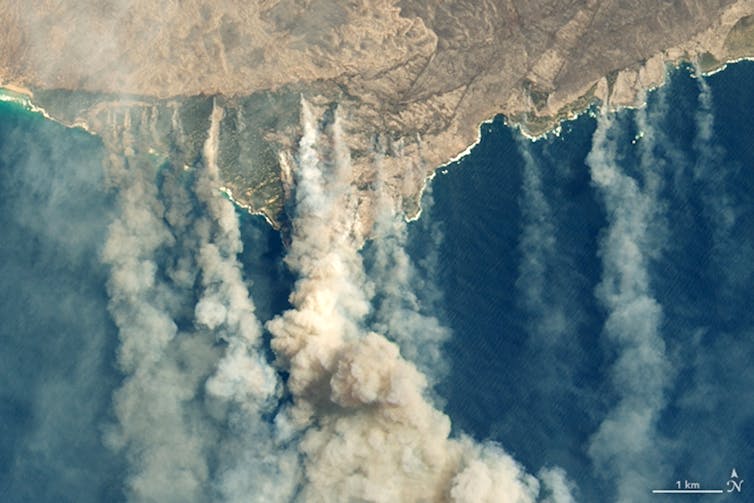
Towards Better Conservation
Linking changes in mammal populations to the characteristics of fire regimes will help develop more effective conservation actions and policies.
For example, restoring Indigenous fire practices is likely to promote cooler, patchier fires that retain habitat refuges and boost food resources for ground-dwelling animals such as bilbies and bettongs.
And controlling foxes and feral cats, particularly in areas burned by large and severe fires, will likely increase mammal survival in post-fire environments.
Other actions will be needed to manage fire for mammal conservation. These include:
- habitat restoration
- strategic planned burning
- rapid recovery teams that assist wildlife after fire
- reintroductions of threatened mammals
- targeted fire suppression
- reducing greenhouse gases.
To explore whether these actions might be effective, models can simulate the impact of management strategies and fire regimes on species and ecosystems.
Finally, our research highlighted considerable uncertainty in the evidence for fire-related declines of many threatened mammals. Fires influence animal survival, reproduction and movement in many ways, and more research into threatened species ecology is needed to address Australia’s biodiversity crisis.
Julianna Santos, PhD candidate, The University of Melbourne; Holly Sitters, Senior Ecologist, The University of Melbourne, and Luke Kelly, Senior Lecturer in Ecology, The University of Melbourne
This article is republished from The Conversation under a Creative Commons license. Read the original article.
Greater gliders are hurtling towards extinction, and the blame lies squarely with Australian governments
Darcy Watchorn, Deakin University and Luke Emerson, Deakin UniversityThe southern and central greater glider, the world’s largest gliding marsupial, was officially listed as “endangered” this week, with the species facing a very high risk of extinction.
In just six years, the number of greater gliders has declined at a staggering rate, going from no conservation listing at all, to “vulnerable”, and now to “endangered”. During this time, the destruction of their forest habitat in eastern Australia has continued.
Greater gliders are among thousands of native species under threat of extinction. Already this year, for example, the yellow-bellied glider was listed as vulnerable nationally, and koala populations across Queensland, New South Wales and the Australian Capital Territory were listed as endangered.
A key reason is that Australia’s environmental laws and practices are outdated and offer little meaningful protection to threatened plants and animals. To avoid a future in which greater gliders are nothing more than a memory, we must immediately stop destroying their habitat.
The Plight Of The Greater Glider
Greater gliders are beautiful, fluffy, cat-sized possums with large ears, long tails and claws. They have fur-covered membranes that enable them to glide up to 100 metres between trees.
Like koalas, greater gliders feed almost exclusively on eucalypt leaves. But, unlike koalas, greater gliders require mature forests with tree hollows to sleep in and rear young.
In 2020, scientists discovered there are actually three species of greater glider: the northern greater glider (now vulnerable), as well as the central and southern greater gliders, although these two are not officially recognised by the federal government as separate species yet.
The conservation advice following this uplisting to endangered indicates an overall rate of population decline exceeding 50% over a 21-year period – that’s just three generations of greater gliders.
Greater gliders were once abundant along Australia’s east coast. However, 200 years of forest clearing and logging has steadily reduced their habitat and numbers. This legacy of disturbance has amplified the impact of recent bushfires on remaining forest and glider populations.
For those who have stood on bare ground in recently logged or burnt forest, you know the silence of a once thriving ecosystem is chilling. The sense of loss is overwhelming.
The Last Six Years
In 2016, before we knew three species existed, the greater glider was listed as “vulnerable” under Australia’s key environment law: the Environment Protection and Biodiversity Conservation (EPBC) Act.
The conservation advice back then stated that stopping their decline required a recovery plan, and “existing mechanisms are not adequate to address these needs”. However, no such plan has ever been developed and implemented.
Logging and land clearing continued unabated. In fact, our recent study found that after this listing, destruction of greater glider habitat actually increased in Queensland and NSW, and remained consistently high in Victoria.
Then, in the summer of 2019 and 2020, the catastrophic Black Summer bushfires struck, razing around 30% of greater glider habitat. Still, logging and land clearing continued.
A NSW government report revealed that in 2020, 51,400 hectares of woody vegetation was cleared.
So, it’s not terribly surprising that only six years on from the 2016 “vulnerable” listing, central and southern greater gliders have been nationally listed as endangered.
Controllable Threats Continue
Climate change also poses a considerable threat to the greater glider, in terms of both the increasing risk of fire and rising temperatures, particularly in NSW and Victoria.
While the impacts of these threats will be ongoing and are challenging to mitigate, they can be addressed by urgently and significantly reducing greenhouse gas emissions.
Cutting down forests, however, is a threat that could be stopped immediately.
Unfortunately, native forest logging continues in NSW and Victoria. And in Queensland, a new coal mine will destroy thousands of hectares of greater glider and koala habitat.
It’s clear the EPBC Act is ineffective at protecting forest-dwelling species. One reason is due to so-called “regional forest agreements” established in the mid-1990s as a compromise between warring environmentalists and the forestry industry.
Under these agreements, a range of logging operations around Australia are exempt from federal environment laws. They need only comply with state regulations, removing a layer of potential protection for threatened species.
Failure to implement legislation that protects our biodiversity is incredibly shortsighted.
Not only does it mean many essential ecological processes on which we depend will be irreversibly disrupted, but the joy of encountering unique wildlife - shaped by millions of years of evolution - may be lost forever too.
What Needs To Change?
Being listed as endangered does nothing to boost protection for Australian species unless meaningful policies and legislated protection measures are actually implemented in response.
The failure of state governments to act appropriately on the recommendations of the 2016 vulnerable listing is evidence of this.
Often, attempts to conserve greater gliders and other forest mammals take the form of artificial hollow provisioning (including nest boxes) or reforestation. While these measures can be valuable, they are far from silver bullets.
It’s not possible to provide nest boxes across the 5 million hectares of greater glider habitat that burned in the Black Summer fires. Nor can they replace the thousands of hectares of habitat logged each year.
At best, nest boxes are a localised stopgap. At worst, they can be completely ineffective, and can even be used to greenwash environmentally destructive projects or delay appropriate action.
Similarly, reforestation will do little in the short term for a species that depends on old-growth forest. It can take well over 100 years for trees to form hollows in which greater gliders can shelter.
Rather than band-aid solutions that don’t address the cause of decline, meaningful legislated change is required to protect our biodiversity. Australia must strengthen its environment laws and transition towards a timber supply from certified plantations.
Western Australia has already committed to end native forestry by 2024. The Victorian and NSW governments must do better, and end native forest logging immediately, or see more greater gliders, koalas and other endangered forest mammals perish.
We cannot wait until they’re listed as critically endangered to take serious action.
We’ve been lucky enough to share peaceful, cool nights in an ancient forest, surrounded by greater gliders, their bright yellow eyes shining, before they launch into the night and glide out of view. We want future generations to experience this too.
The authors are grateful for the contributions of Kita Ashman, an ecologist at the World Wildlife Fund, to this article.![]()
Darcy Watchorn, PhD Candidate, Deakin University and Luke Emerson, PhD Candidate, Deakin University
This article is republished from The Conversation under a Creative Commons license. Read the original article.
‘Patently ridiculous’: state government failures have exacerbated Sydney’s flood disaster
Jamie Pittock, Australian National UniversityFor the fourth time in 18 months, floodwaters have inundated homes and businesses in Western Sydney’s Hawkesbury-Nepean Valley. Recent torrential rain is obviously the immediate cause. But poor decisions by successive New South Wales governments have exacerbated the damage.
The town of Windsor, in the Hawkesbury region, has suffered a particularly high toll, with dramatic flood heights of 9.3 metres in February 2020, 12.9m in March 2021 and 13.7m in March this year.
As I write, flood heights at Windsor have reached nearly 14m. This is still considerably lower than the monster flood of 1867, which reached almost 20m. It’s clear that standard flood risk reduction measures, such as raising building floor levels, are not safe enough in this valley.
We’ve known about the risk of floods to the region for a long time. Yet successive state governments have failed to properly mitigate its impact. Indeed, recent urban development policies by the current NSW government will multiply the risk.
We Knew This Was Coming
A 22,000 square kilometre catchment covering the Blue Mountains and Western Sydney drains into the Hawkesbury-Nepean river system. The system faces an extreme flood risk because gorges restrict the river’s seaward flow, often causing water to rapidly fill up the valley after heavy rain.
Governments have known about the flood risks in the valley for more than two centuries. Traditional Owners have known about them for millennia. In 1817, Governor Macquarie lamented:
it is impossible not to feel extremely displeased and Indignant at [colonists] Infatuated Obstinacy in persisting to Continue to reside with their Families, Flocks, Herds, and Grain on those Spots Subject to the Floods, and from whence they have often had their prosperity swept away.
Macquarie’s was the first in a long line of governments to do nothing effective to reduce the risk. The latest in this undistinguished chain is the NSW Planning Minister Anthony Roberts.
In March, Roberts reportedly revoked his predecessor’s directive to better consider flood and other climate risks in planning decisions, to instead favour housing development.
Roberts’ predecessor, Rob Stokes, had required that the Department of Planning, local governments and developers consult Traditional Owners, manage risks from climate change, and make information public on the risks of natural disasters. This could have helped limit development on floodplains.
Why Are We Still Building There?
The Hawkesbury-Nepean Valley is currently home to 134,000 people, a population projected to double by 2050.
The potential economic returns from property development are a key driver of the lack of effective action to reduce flood risk.
In the valley, for example, billionaire Kerry Stokes’ company Seven Group is reportedly a part owner of almost 2,000 hectares at Penrith Lakes by the Nepean River, where a 5,000-home development has been mooted.
Planning in Australia often uses the 1-in-100-year flood return interval as a safety standard. This is not appropriate. Flood risk in the valley is increasing with climate change, and development in the catchment increases the speed of runoff from paved surfaces.
The historical 1-in-100 year safety standard is particularly inappropriate in the valley, because of the extreme risk of rising water cutting off low-lying roads and completely submerging residents cut-off in extreme floods.
What’s more, a “medium” climate change scenario will see a 14.6% increase in rainfall by 2090 west of Sydney. This is projected to increase the 1-in-100 year flood height at Windsor from 17.3m to 18.4m.
The NSW government should impose a much higher standard of flood safety before approving new residential development. In my view, it would be prudent to only allow development that could withstand the 20m height of the 1867 flood.
No Dam Can Control The Biggest Floods
The NSW government’s primary proposal to reduce flood risk is to raise Warragamba Dam by 14m.
There are many reasons this proposal should be questioned. They include the potential inundation not just of cultural sites of the Gundungarra nation, but threatened species populations, and part of the Blue Mountains World Heritage Area.
The cost-benefit analysis used to justify the proposal did not count these costs, nor the benefits of alternative measures such as upgrading escape roads.
Perversely, flood control dams and levee banks often result in higher flood risks. That’s because none of these structures stop the biggest floods, and they provide an illusion of safety that justifies more risky floodplain development.
The current NSW transport minister suggested such development in the valley last year. Similar development occurred with the construction of the Wivenhoe Dam in 1984, which hasn’t prevented extensive flooding in Brisbane in 2011 and 2022.
These are among the reasons the NSW Parliament Select Committee on the Proposal to Raise the Warragamba Dam Wall recommended last October that the state government:
not proceed with the Warragamba Dam wall raising project [and] pursue alternative floodplain management strategies instead.
What The Government Should Do Instead
The NSW government now has an opportunity to overcome two centuries of failed governance.
It could take substantial measures to keep homes off the floodplain and out of harm’s way. We need major new measures including:
- preventing new development
- relocating flood prone residents
- building better evacuation roads
- lowering the water storage level behind Warragamba Dam.
The NSW government should help residents to relocate from the most flood-prone places and restore floodplains. This has been undertaken for many Australian towns and cities, such as Grantham, Brisbane, and along major rivers worldwide.
Relocating residents isn’t easy, and any current Australian buyback and relocation programs are voluntary.
I think it’s in the public interest to go further and, for example, compulsorily acquire or relocate those with destroyed homes, rather than allowing them to rebuild in harm’s way. This approach offers certainty for flood-hit people and lowers community impacts in the longer term.
It is patently ridiculous to rebuild on sites that have been flooded multiple times in two years.
In the case of the Hawkesbury-Nepean Valley, there are at least 5,000 homes below the 1-in-100-year flood return interval. This includes roughly 1,000 homes flooded in March.
The NSW government says a buyback program would be too expensive. Yet, the cost would be comparable to the roughly $2 billion needed to raise Warragamba Dam, or the government’s $5 billion WestInvest fund.
An alternative measure to raising the dam is to lower the water storage level in Warragamba Dam by 12m. This would reduce the amount of drinking water stored to supply Sydney, and would provide some flood control space.
The city’s water supply would then need to rely more on the existing desalination plant, a strategy assessed as cost effective and with the added benefit of bolstering drought resilience.
The flood damage seen in NSW this week was entirely predictable. Measures that could significantly lower flood risk are expensive and politically hard. But as flood risks worsen with climate change, they’re well worth it.![]()
Jamie Pittock, Professor, Fenner School of Environment & Society, Australian National University
This article is republished from The Conversation under a Creative Commons license. Read the original article.
To stop risky developments in floodplains, we have to tackle the profit motive – and our false sense of security
Brian Robert Cook, The University of Melbourne and Tim Werner, The University of MelbourneIn the aftermath of destructive floods, we often seek out someone to blame. Common targets are the “negligent local council”, the “greedy developer”, “the builder cutting corners”, and the “foolish home owner.” Unfortunately, it’s not that simple, as Sydney’s huge floods make clear.
In flood risk management, there’s a well-known idea called the “levee effect.” Floodplain expert Gilbert White popularised it in 1945 by demonstrating how building flood control measures in the Mississippi catchment contributed to increased flood damage. People felt more secure knowing a levee was nearby, and developers built further into the flood plains. When levees broke or were overtopped, much more development was exposed and the damages were magnified. “Dealing with floods in all their capricious and violent aspects is a problem in part of adjusting human occupance,” White wrote.
The levee effect shows why it’s so hard to reduce flood risk, even in areas hit hardest by this year’s record-breaking floods. The NSW town of Lismore had a 10 metre levee, experience dealing with many floods, and a flood risk management plan. It was devastated regardless.
To tackle flood risk, we have to respond to the social, political, economic, and environmental factors that drive development and occupation of floodplains.
Social Factors: We Love Living Near Water
Around the world, people like to live near water – even if it might flood. Waterfront properties and those with river views command significantly higher prices. In addition, Australians view home ownership as a rite of passage, a key marker of adulthood as well as an economic investment. People will prioritise home ownership over concerns about living in a floodplain – especially when the house is part of a government approved development.
Political Economy Factors: Money Can Drive Decision Making
Developing flood-prone areas generates profits, not just in monetary terms, but also through social and political capital. When developments are proposed, flood risk is assessed using the 1% annual exceedance probability line. This line, colloquially known as the 100-year flood event, defines land with a 1% chance of experiencing a flood each year.
The act of drawing this line creates more valuable and less valuable lands. Land owners on the boundary have an incentive to argue for change, sometimes based on how the 1% line is modelled. Developers can – and have – argued certain blocks should be acceptable for development. This can be appealing to local councils eager to encourage economic development and expand their tax base. When boundaries shift and less valuable land is converted into residential land, developers are rewarded with higher profits – while communities and future homeowners take a step closer to the next flood.
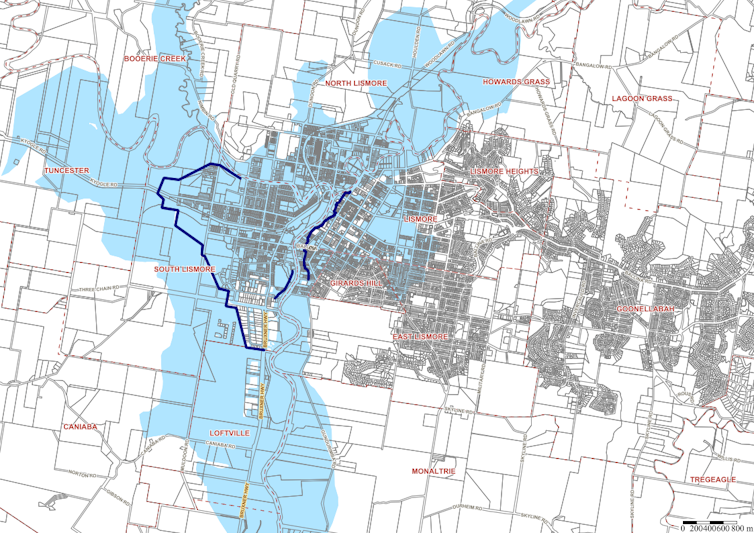
In some cases, like Lismore, developers building inside the 1% line are permitted to install mitigation measures, such as by infilling land, raising floor levels, building embankments, and installing large pumps. They are usually required to also build an additional 500 mm of freeboard above the 1% flood level.
Job done? Not quite. When a developer successfully argues for the redesignation of ‘flood-prone’ to ‘developable’, this sets a precedent that strengthens future development proposals. More developments create more risk, causing new flood control measures to be proposed, which are justified on the basis of encouraging more investment and development. The cycle continues.
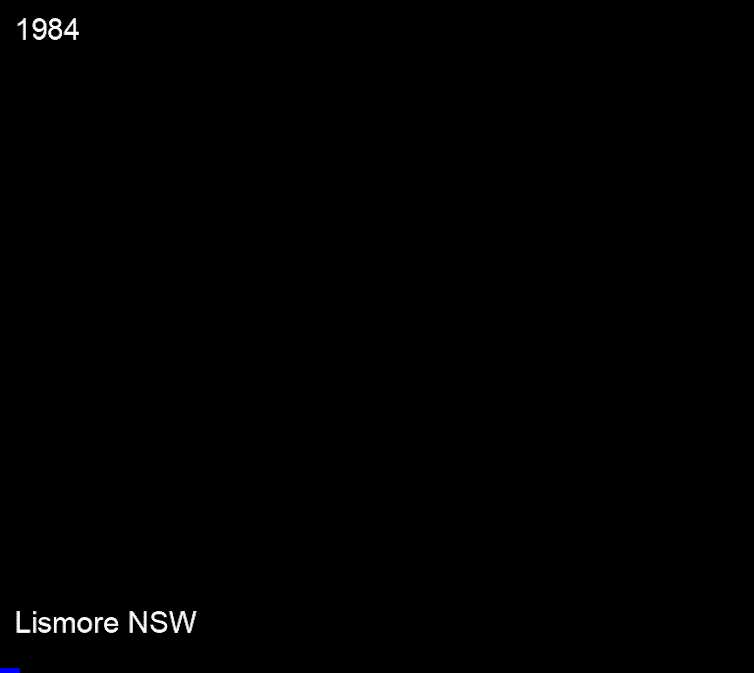
When a developer converts flood-prone land into homes, they own the consequences a flood might bring to them. But when that building is sold, liability for flood damages is transferred to the new owner. It is common to portray such owners as naive or irresponsible, but they’re purchasing a home approved by the council on the basis of expert modelling.
The home owner pays their rates, like everyone else, and has every right to assume professionals have determined the safety of the development. When large-scale floods hit, those owners are as entitled as anyone to government assistance and relief.
This final act of goodwill – extremely difficult for any government to refuse – effectively shifts the costs of disaster mitigation, relief, and recovery to the Australian taxpayer. As John Handmer has argued, “flood risk is characterised by private sector profit while the costs are borne by the public sector, individuals and small business.”
Environmental Factors: Warping Nature Means More Reliance On Engineering
Floods are valuable, natural processes. In many farming regions, a bumper crop follows floods due to additional moisture and deposited nutrients.
But when parts of the environment are turned to concrete, the ability of the land to absorb flood waters drops and engineering protections become even more necessary.
Dams, embankments, storm drains, and pumps which protect developments are only effective to a point. Such structures effectively eliminate small scale floods, which would have otherwise helped to recharge aquifers, raise the level of “green water” stored in soils, deposit sediments, aid soil fertility, and prevent compaction and subsidence.
As a result, engineering solutions stop small-scale flooding and its accompanying benefits, while failing to prevent large-scale floods – and giving a false sense of security to floodplain residents.
What Can Be Done?
To some degree, we’re all implicated in a system encouraging some people to profit by building flood-prone housing. When houses flood, it is the public who subsidises these developments with disaster relief and structural flood mitigation.
As climate change shifts the traditional boundaries of flood-prone areas, we face the pressing need to confront the forces driving us to develop floodplains.
A key first step is to harden boundaries and limit opportunities to ‘nibble’ into floodplains. Holding developers and builders accountable to home owners even after the sale would be beneficial, though such arrangements are virtually unprecedented.
Evacuation or abandonment of floodplains is inevitable. Lismore’s voluntary house purchase scheme is aimed at removing flood-prone structures inside the area prone to 1 in 20 year floods. Despite efforts like this, floodplain withdrawal has only succeeded a handful of times – and those gains are often quickly erased.
For now, Australians living in flood-prone areas should consider making their homes more flood-resilient to limit the impacts of small and medium floods, given these are likely to expand geographically due to climate change.
Nationally, Australia must tackle the hidden incentives causing encroachment if we are to avoid settling in areas where we cannot safely live.![]()
Brian Robert Cook, Associate professor, The University of Melbourne and Tim Werner, ARC DECRA Fellow, School of Geography, Earth and Atmospheric Sciences, The University of Melbourne
This article is republished from The Conversation under a Creative Commons license. Read the original article.
Department Of Planning Approves Plan For Up To 450 In Flood Prone South Kiama - Instructs Kiama Council To Implement Its Plan
- Further master planning
- Preparing a development control plan
- Developing a development application assessment process
EPA Launches Yet Another FCNSW Prosecution For Alleged Forestry Breaches In Koala Habitat
New Plan To Allow Pollination Movements
- Alcohol washing a proportion of their hives and recording the results to prove they are free from varroa mite; and,
- Checking their records are up to date and that none of their hives has been in an eradication, notification or surveillance zone within the past 24 months.
What’s causing Sydney’s monster flood crisis – and 3 ways to stop it from happening again
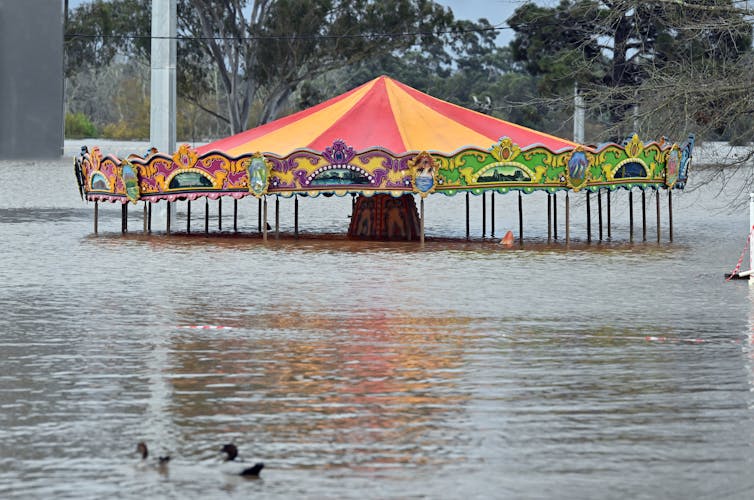
Again, thousands of residents in Western Sydney face a life-threatening flood disaster. At the time of writing, evacuation orders spanned southwest and northwest Sydney and residents of the Hawkesbury-Nepean Valley were being warned the crisis was escalating.
It’s just over a year since the region’s long-suffering residents lived through one of the largest flood events in recent history. And of course, earlier this year floods devastated the Northern NSW town of Lismore.
Right now, attention is rightly focused on helping those immediately affected by the disaster. But as the floodwaters subside, we must urgently act to avert a repeat of this crisis.
Obviously, nature is a major culprit here. But there’s plenty humans can do to plan for major flooding and make sure we’re not sitting in the path of disaster.
So What’s Caused The Current The Flood Problem?
The first driver of this disaster is nature and geography.
For many months now, much of New South Wales has experienced significant rain and associated flooding.
There’s a reason both the Hawkesbury-Nepean and Lismore flood the way they do – geography. Both areas sit in low-lying bowl-like depressions in the landscape.
Lismore sits at the confluence of several large rivers that each drain significant catchments – and so can deliver large floods.
And in the Hawkesbury-Nepean, huge rivers have to pass through a very tight “pinch point” known as the Sackville Bathtub. This slows the flow, causing water to back up across the floodplain.
The NSW government wants to raise the wall of the Warragamba Dam to help alleviate this problem. But as others have argued, this controversial proposal might not work. That’s because raising the wall will control only about half the floodwater, and won’t prevent major floods delivered by other rivers feeding the region.
The second factor making the current floods so bad is the exposure of infrastructure and housing. In the Hawkesbury-Nepean region, lots of stuff people care about – such as homes, businesses and schools – is in the path of floodwaters.
In an ideal world, nothing would be built on a floodplain. But due to Sydney’s growing population and the housing affordability crisis, local governments in Western Sydney have been under pressure to build more and more homes, despite the known flood risk.
In 2018, more than 140,000 people lived or worked on the Hawkesbury-Nepean floodplain. Due to this large population and the region’s geography, the area has the most significant and unmitigated community flood exposure in Australia.
What’s worse, the region’s population is expected to double over the next 30 years. At the same time, climate change will change rainfall patterns and make severe flooding more likely.
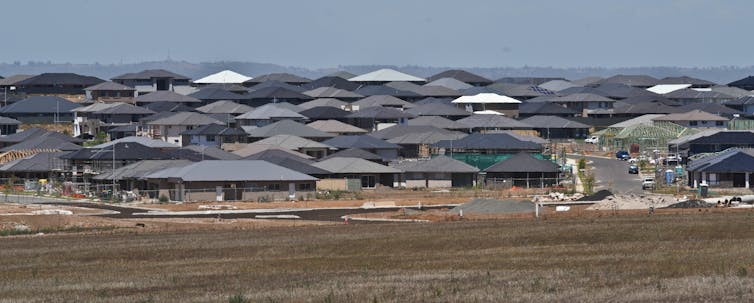
Being Prepared
The third contributing factor to this flood disaster is a lack of preparedness.
The NSW government has a strategy to manage the flood risk in the Hawkesbury-Nepean. It includes improved flood warning and emergency response measures, upgraded evacuation routes, recovery planning and a regional floodplain management study.
But given the region’s big, growing population and massive flood exposure, these three bolder and more urgent measures are needed:
1. Get better at urban planning
Local governments, developers and communities must collaborate to agree on smarter land-use zoning – basically, deciding what infrastructure and activities go where. Because let’s be honest: some land just should not be built on.
This is a lesson Lismore has learned the hard way. There’s now a broad-ranging discussion underway about whether the town’s central business district should be moved entirely, and flood-prone riverside land turned over to other uses.
If we must build on flood-exposed land, better building codes and designs are needed. This may mean accepting higher construction costs. It will certainly require tough rules requiring developers and homeowners to comply with planning measures.
And when building new suburbs in flood-prone areas, several best-practice building standards should be adopted. They include:
- raising floor heights above, say, a one in 500 year flood level
- improving drainage
- reducing hard surfaces that don’t absorb water.
2. Prepare infrastructure and people
All too often, flooding cuts off vital access roads and prevents or limits evacuations. More emergency routes in and out of flood-prone areas are needed.
More designated evacuation shelters – accessible to all – are also required.
And it’s crucial people living in flood-exposed areas are aware of, understand and prepare for the risk. This requires community education and engagement – undertaken regularly (such as once a year) and in multiple languages.
For those in the Hawkesbury-Nepean region who want to better understand the flood-risk, check out this valuable resource provided by the NSW State Emergency Service (SES).
Even for those who understand the risks, insuring themselves against the damage may be difficult or impossible. Rising premiums mean insurance is already out of reach for many Australians – and the problem is set to worsen.
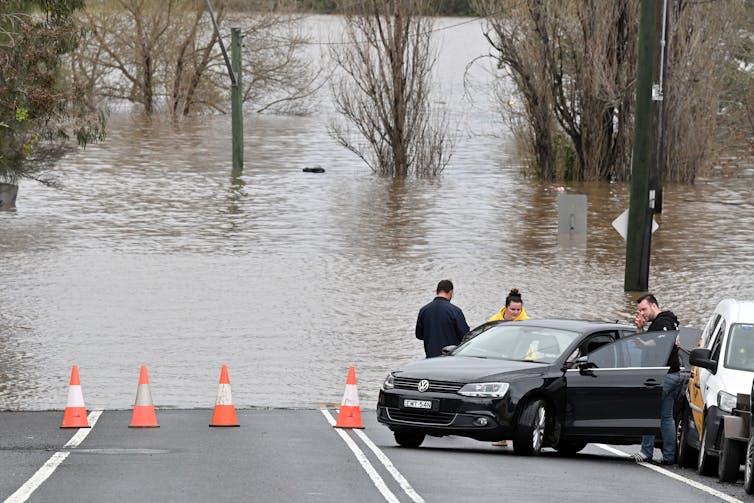
3. Equip the SES properly
The SES is responsible for flood and storm response, and it does exceptional work. But like most government agencies, the SES is being asked to do more with ever tighter budgets.
The organisation is largely made up of volunteers – and that workforce is very stretched.
As a society, we must ask how the SES can be better funded and supported to do the job we ask of them. For example, is it still appropriate to rely on a mostly volunteer-run service to provide such a challenging disaster response – especially as climate change worsens? Or should the SES’s paid workforce be greatly expanded?
Looking Ahead
Unfortunately, the wet conditions we’re now seeing may persist for some time. Recent climate modelling suggests Australia may face a third consecutive La Nina this spring and summer.
This extra rain will fall on already soaked landscapes, further increasing the likelihood of flooding. And the ramifications will extend far beyond affected communities.
Disruptions will be felt in agriculture, supply chains, transport routes and broader state and national economies.
In the longer term, of course, climate change is projected to bring far worse extreme rain events than in the past. The current flood crisis will recede, but the need to plan for future flooding disasters has never been more pressing.![]()
Dale Dominey-Howes, Honorary Professor of Hazards and Disaster Risk Sciences, University of Sydney
This article is republished from The Conversation under a Creative Commons license. Read the original article.
A New South Wales First! New Species Of Legless Lizard Discovered In The Hunter Valley

Climate change is white colonisation of the atmosphere. It’s time to tackle this entrenched racism
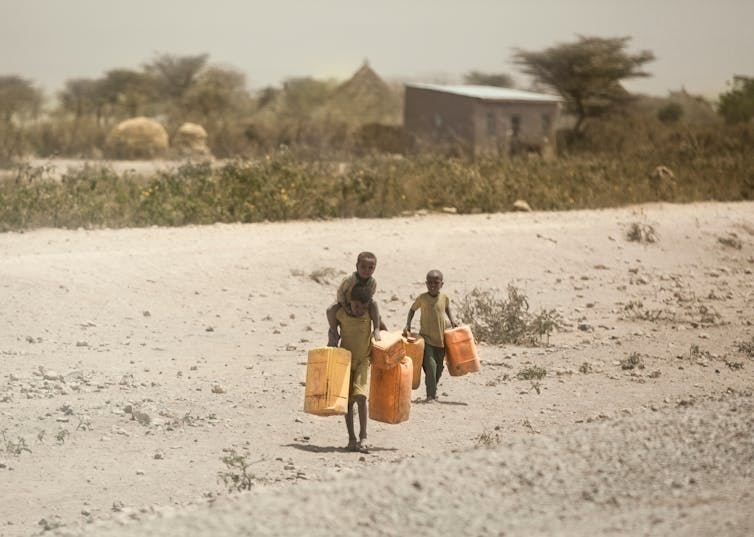
“Climate change is racist”. So reads the title of a recent book by British journalist Jeremy Williams. While this title might seem provocative, it’s long been recognised that people of colour suffer disproportionate harms under climate change – and this is likely to worsen in the coming decades.
However, most rich white countries, including Australia, are doing precious little to properly address this inequity. For the most part, they refuse to accept the climate debt they owe to poorer countries and communities.
In so doing, they sentence millions of people to premature death, disability or unnecessary hardship. This includes in Australia, where climate change compounds historical wrongs against First Nations communities in many ways.
This injustice – a type of “atmospheric colonisation” – is a form of deeply entrenched colonial racism that arguably represents the most pressing global equity issue of our time. Several upcoming global talks, including the Pacific Islands Forum this week, offer a chance to urgently elevate climate justice on the global agenda.

‘Not Borne Equally’
The effects of climate change are not borne equally between everyone on the planet, and this problem will only worsen. Black people, people of colour and Indigenous people often face the most dire consequences in a warming world.
For example, research suggests global warming of 2℃ would leave more than half of Africa’s population at risk of undernourishment, due to reduced agricultural production. This is despite Africa having contributed relatively little to greenhouse gas emissions.
Climate injustice also manifests closer to home. The Lowitja Institute, Australia’s national body for Aboriginal and Torres Strait Islander health research, says climate change:
disrupts cultural and spiritual connections to Country that are central to health and wellbeing. Health services are struggling to operate in extreme weather with increasing demands and a reduced workforce.
All these forces combine to exacerbate already unacceptable levels of ill-health within Aboriginal and Torres Strait Islander populations.
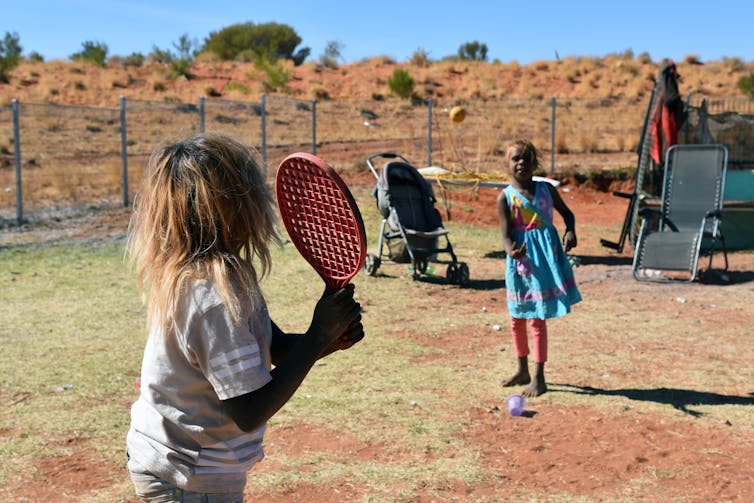
Failure At Bonn
Last month, the continued failure on the part of rich white countries to take responsibility for this injustice was on full display at the United Nations climate meetings in Bonn, Germany.
There, governments failed to make any significant progress towards compensation for “loss and damage”. According to Oxfam, loss and damage collectively refers to:
the consequences and harm caused by climate change where adaptation efforts are either overwhelmed or absent.
At Bonn, the G77 (a coalition of 134 developing countries) and China wanted financing for a so-called “loss and damage facility” put on the official agenda at the COP27 climate conference in Egypt in November this year. This facility would comprise a formal body to deliver funding to developing nations to cope with the consequences of climate change.
But the United States and the European Union opposed the move, fearing they would become liable for billions of dollars in damages.
Concerns around “loss and damage” have been long plagued global climate negotiations.
In 2013, the Warsaw International Mechanism for Loss and Damage was established at COP19. Climate activists hoped it would usher in a new era of climate justice. But almost a decade on, there’s still no clear path to the financing required.
And rich white countries continue to distance themselves from all language of compensation or reparation for both historic and contemporary emissions.
This refusal continues long histories of European racism, including the deeply racialised processes of large-scale extraction that fuelled and sustained the Industrial Revolution from the outset.
Sugar plantations throughout the Caribbean were worked for generations by Africans who were enslaved, generating massive profits for Europeans that were then invested and reinvested in energy-intensive industrial infrastructure. This infrastructure helped fuel the global emissions that remain in the atmosphere today.
British industrialisation would simply not have been possible without the stolen land and uncompensated labour acquired through colonisation and slavery. Compensation for this plunder was never provided.
And today, the emissions it initiated are doubling back on those whose land and labour made them possible.
Climate Change At The Centre Of Reparations
Calls for reparations for colonialism and slavery have grown rapidly over the past few years – particularly as a result of the Black Lives Matter movement in the US and UK.
Some European states have begun to take responsibility and provide redress for colonial theft, violence and displacement.
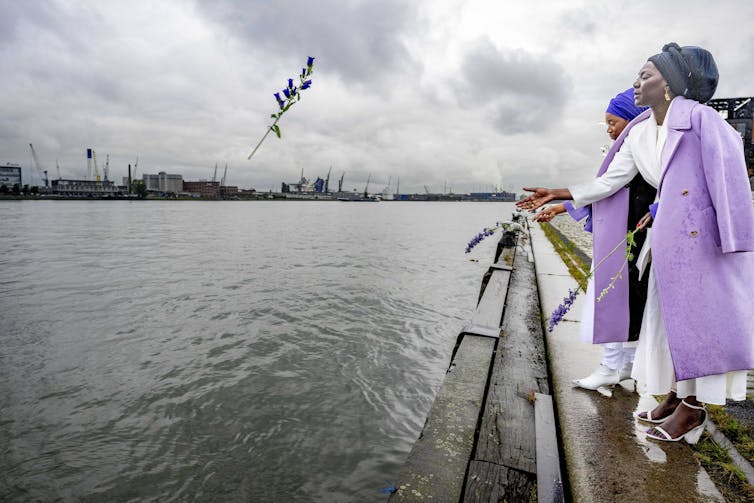
These efforts are laudable. But there’s an urgent need to focus this sentiment on climate change – and in particular, to supercharge demands for climate reparations.
The Pacific Islands forum this week provides an opportunity for Australia to undertake climate reparation, by committing new finance for the loss and damage incurred by poorer Pacific nations under climate change.
UN Special Rapporteur Philip Alston recently said the world risks a new era of “climate apartheid”. In this scenario, tens of millions of people will be impoverished, displaced and hungry, while the rich buy their way out of hardship.
Going into COP27 in November, negotiators from the US, the EU and Australia must prioritise loss and damage finance. Failing to do so will only further solidify climate injustice.![]()
Erin Fitz-Henry, Deputy Coordinator - Anthropology, Development Studies & Social Theory, The University of Melbourne
This article is republished from The Conversation under a Creative Commons license. Read the original article.
Global Energy And Climate Leaders Meet In Sydney To Strengthen Clean Energy Technology Supply Chains
- High-level discussions among Ministers from Australia, Japan, India, Indonesia, Samoa, US and other countries are informed by new IEA reports on supply chains for technologies such as solar panels and batteries.
Bomb Detectors Picking Up More Blue Whale Songs In Indian Ocean
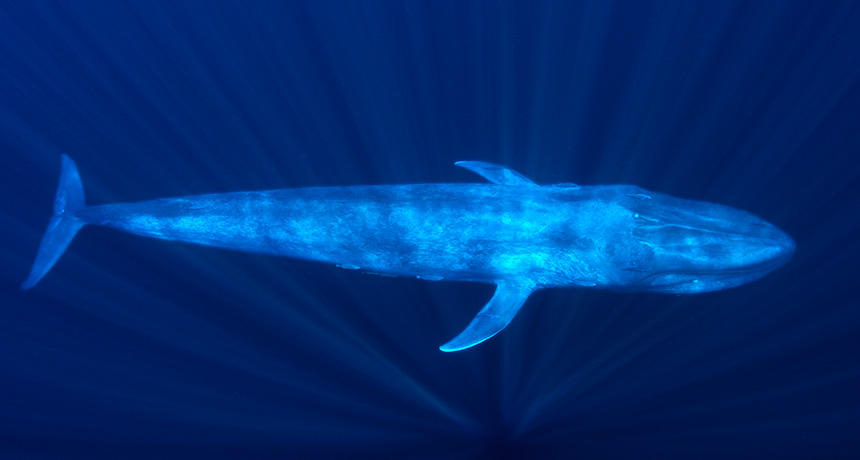
New Research Finds Deep-Sea Mining Noise Pollution Will Stretch Hundreds Of Miles
Albanese just laid out a radical new vision for Australia in the region: clean energy exporter and green manufacturer
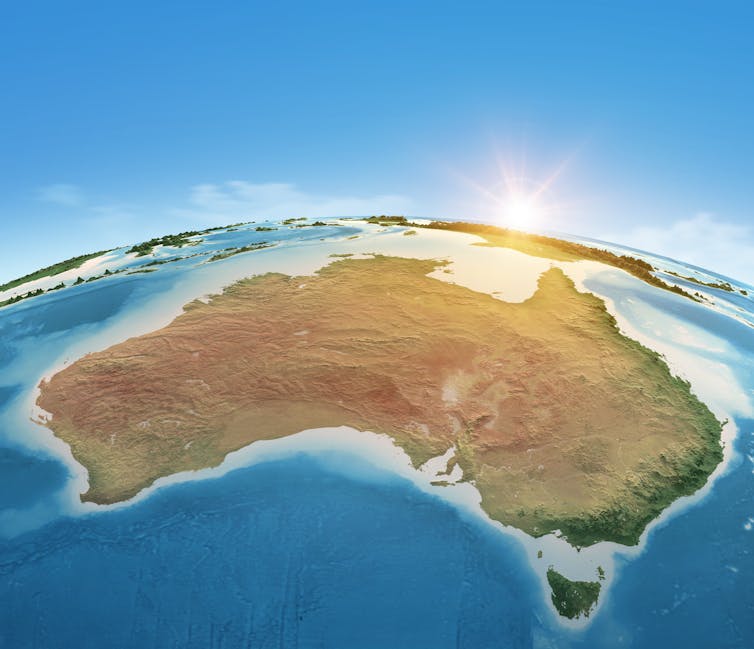
Gone are the days when the federal government would cheer on Australia’s fossil fuel exports to the exclusion of all else, while seemingly doing everything in its power to hold back the switch to renewables.
Now we have a new government, the clean energy transition is accelerating. Labor is framing the transition not just as decarbonisation but as a green economic boom through manufacture of electrolysers, green steel, green cement and green fertiliser. If successful, this will amount to a green industrial revolution.
This radical new vision was laid out in Prime Minister Anthony Albanese’s speech this week to the Sydney Energy Forum. He proposed a new era for Australian energy industries and exports as well as using our wealth of renewables to drive deeper involvement in our region.
It makes good commercial and climate sense for the federal government to target the Indo-Pacific for this green industrial revolution, since the region is already the world’s leader in clean energy investments.
As of 2021, our region accounts for over 80% of the world’s private investment in clean energy. India, China, Japan, Korea, Indonesia and Pacific nations are natural partners for Australia in this new green push as well as leaders creating the market for clean energy and green products.
What Does This Actually Look Like?
For a sign of what’s to come, look to the massive Sun Cable project, launched four years ago with early funding by Australian billionaires Mike Cannon-Brookes of Atlassian and Andrew Forrest of Fortescue Minerals Group.
The project’s ambitious goal is to become the first intercontinental exporter of renewables, by generating massive amounts of energy from solar farms in the Northern Territory and transmitting it to energy-hungry Singapore through a 4,200 km-long high voltage undersea cable. Government backing will help it progress faster.
The project has gained strong support from both territory and federal governments, and is now attracting support from the Indonesian and Singaporean governments. Indonesia’s government has given in principle approval for the cable’s undersea route through its national waters and has approved the undersea survey permit. There will be spillover benefits, such as $A1.5 billion earmarked for a marine repair base in Indonesia.
Sun Cable and other renewable megaprojects, such as Western Australia’s proposed Asian Renewable Energy Hub, show the move away from reliance on fossil fuel exports is actually happening. The Albanese government has signalled its intention to promote clean energy exports as well as green industrial development across the Indo-Pacific.
Our research project on the clean energy shift in north-east Asia has captured the progress made by major regional economies China and Korea in powering ahead with their own green transitions since the 2000s. These ongoing transitions offer major opportunities, such as exporting Australian-made green hydrogen to fuel cars in these countries.
Our Clean And Green Transition Is Bigger Than Just Renewables
Since Labor took office, we’ve heard a lot about our future as a renewables superpower. Often overlooked is the fact this would mean not just generating renewable electricity and green hydrogen at vast scale but also investing in new industries and processes to grasp as many opportunities as we can.
This would mean investing in upstream industries such as solar array fabrication and electrolyser manufacture, as well as downstream industries such as green steel, green cement and green fertiliser. These new green products would be produced using locally generated supplies of green hydrogen and cheap clean renewable power, as economist Ross Garnaut has outlined.
Green energy is no longer a niche concern. Australia’s largest companies are leading the way.
Andrew Forrest’s new spin-off company, Fortescue Future Industries, has begun constructing a $1 billion project building green hydrogen manufacturing components, cabling and renewable generation in central Queensland. This single project is expected to double the global production capacity of green hydrogen. It will make Queensland home to a new green hydrogen fuel and components export industry.
If our new government can pull this off and turn vision to reality, we could embrace a new green growth economy and begin our own green industrial revolution.
Better yet, Australia could finally make full use of its abundant land and renewable resources to fast-track the clean economic development of our Indo-Pacific neighbours.

Green Energy Comes With Security And Geopolitical Benefits
For decades, Pacific nations have seen climate change as the single greatest threat to their people. As a result, Australian investment in exportable renewables will become a key diplomatic tool as geopolitical competition between China and the US intensifies in our region.
China isn’t standing still either. Until recently, China focused its regional aid and investment on traditional infrastructure projects such as airports, roads and stadiums. Now Beijing is ramping up its climate responses to the region, with climate change issues at the top of the agenda at the China-Pacific Islands forum held in 2019.
In light of China’s growing green activism in the Pacific, the Australian government has a lot of ground to make up.
It should start with a major rethink of Australia’s traditional approach to financing energy projects, which has seen us support fossil fuel power in the region.
We can no longer keep propping up fossil fuels, with the costs of this support not only environmental, but geostrategic as well. Partnering with China on Pacific projects, as Pacific minister Pat Conroy has flagged, could also help.
Albanese’s speech this week was promising. He laid out a very different role for Australia in our region – one where our regional engagement policy is in line with a new domestic policy on climate goals, and where renewable energy provides a means of deepening regional cooperation on tangible investment projects. Now comes the hard part: delivery. ![]()
John Mathews, Professor Emeritus, Macquarie Business School, Macquarie University; Elizabeth Thurbon, Scientia Associate Professor in International Relations / International Political Economy, UNSW Sydney; Hao Tan, Associate Professor, Newcastle Business School, University of Newcastle, and Sung-Young Kim, Senior Lecturer in International Relations, Discipline of Politics & International Relations, Macquarie School of Social Sciences, Macquarie University
This article is republished from The Conversation under a Creative Commons license. Read the original article.
Times have changed: why the environment minister is being forced to reconsider climate-related impacts of pending fossil fuel approvals
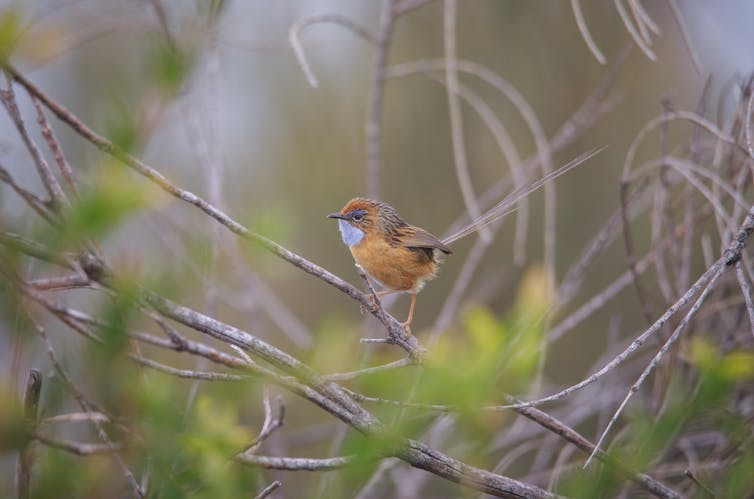
A non-profit group is imploring the new federal environment minister Tanya Plibersek to consider the climate change impacts of 19 fossil fuel projects currently pending approval, drawing on a rarely used legal provision that will require her to reconsider the findings of her predecessors.
The minister will be forced to either confirm or revoke previous decisions that the fossil fuel projects – which propose to extract new coal or gas – aren’t likely to have a significant impact on Australia’s protected species and places.
The group that issued the 19 requests, the Environment Council of Central Queensland, argues the projects will contribute to climate change. This will, in turn, harm the threatened and migratory species, wetlands, heritage sites, and marine areas protected under Australia’s environmental law, the EPBC Act.
So what makes this intervention important?
The Environment Is Changing Rapidly
The legal term for the type of request issued by the environment council is a “reconsideration request”. Made under section 78A of the EPBC Act, reconsideration requests depend on “substantial new information”.
Here, this includes the latest climate science and evidence about how Australian species and places are responding to climate change.
For example, the situation for a species like the Eyre Peninsula southern emu-wren, whose habitat has been decimated by bushfire is more dire than it was just a few years ago, making any new impact more significant.
Similarly, the Great Barrier Reef has now suffered its fourth mass bleaching event since 2016. Further climate change could bring this iconic ecosystem closer to collapse.
The environment council and its team argue that essentially all matters protected under the EPBC Act are vulnerable to the effects of fossil fuel projects, not just species and areas next door to mine sites.
Their logic is that every project unearthing new fossil fuels to be extracted and burned over a long period of time will make an important contribution to climate change. As we transition toward net-zero emissions, every tonne of emissions counts.
In turn, climate change will significantly impact Australia’s heritage and biodiversity. The environment council want to make sure this is factored into any final approval decision.
What Happens Now?
Now the requests have been made, the minister is legally obliged to reconsider the projects in light of climate change.
If the minister confirms the previous decisions that there aren’t likely to be significant impacts on protected species and places, despite the new information, she can go ahead and approve or reject the projects based on the information she already had. However, this could then be challenged in the Federal Court.
So, what might the court say? Would it find that climate-related impacts to protected species and places are relevant to fossil fuel approvals?
This depends on the interpretation of key terms “likely”, “significant”, and “impact”.
Under the EPBC Act, the word “likely” means “a real and not remote chance or possibility”. It doesn’t equate to a probability over 50%.
“Impact” can include an indirect impact, which might occur at a different place and time to the project, including in the future. An impact doesn’t have to be wholly caused by a project to be relevant.
That said, there hasn’t yet been an authoritative judicial interpretation of the definition of this term. This means we don’t know if the court would find that climate-related impacts to biodiversity and heritage are impacts of fossil fuel projects. Arguably, it certainly could.
What we do know is that the word “significant” calls for the courts to consider the context of an impact. The context here is an extinction crisis that’s being exacerbated by a climate crisis.
If the minister does decide the projects are likely to significantly impact Australia’s threatened species and protected places, she’ll revoke the original decisions. This would trigger a process to procure sufficient information to better inform a final approval decision.
What Does This Mean For The Law And For Future Approvals?
The EPBC Act came into force more than two decades ago, without any reference to climate change. Yet, it’s the law we’ve got to protect the environment.
Recognising that fossil fuel projects are likely to harm the Australian environment would mean climate change would need to be taken into account for new extraction proposals in future.
Specifically, the plight of threatened species and protected places would be broadly relevant to all final coal and gas approval decisions. The minister could still approve new projects, but she’d have to be mindful of the broad-ranging impacts to biodiversity and heritage.
Whatever the ultimate result, this challenge will help elucidate a potential link between the EPBC Act and climate change.
This includes clarifying the responsibility fossil fuel projects have over climate-related harm to the environment, now climate change is well and truly manifest.![]()
Laura Schuijers, Deputy Director, Australian Centre for Climate and Environmental Law and Lecturer in Law, University of Sydney
This article is republished from The Conversation under a Creative Commons license. Read the original article.
Will Australia’s new climate policy be enough to reset relations with Pacific nations?

Prime Minister Anthony Albanese is hoping his government’s more ambitious climate policy will help reset Pacific relations when he meets with island leaders next week.
Hosted by Fiji, this year’s Pacific Islands Forum will be the first in-person leaders summit since the 2019 Pacific Islands Forum in Tuvalu, which saw Albanese’s predecessor Scott Morrison try to water down a Pacific regional climate declaration. In the aftermath of that bruising summit, Fijian Prime Minister Frank Bainimarama told waiting media partnering with China was preferable to working with Morrison.
Since then, geo-strategic competition between China and the United States has intensified. This contest looms over this year’s Pacific Islands Forum. China is seeking new security arrangements with island countries, while the US and its allies are stepping up their engagement with Pacific nations.
But while Australia worries about China, most Pacific nations are more worried about climate change on their doorstep. A new Climate Council report endorsed by a group of prominent Pacific leaders says committing to more ambitious climate action is key to Australia’s claim to be the Pacific’s security partner of choice.
Security Will Be High On The Agenda
Why is security suddenly important? Because the Pacific has become a region of geo-strategic competition for the first time in decades.
China has become more powerful. That’s seen it invest in an ocean-going navy and seek new security arrangements with Pacific countries. Australian security officials have been particularly worried Beijing could use infrastructure loans to secure a Chinese naval base in the Pacific.
In April, Solomon Islands signed a security deal with China which – if it is anything like the draft leaked online – contains provisions that allow for Chinese military presence and ship resupply.
The deal has changed the dynamic of a region long aligned with the West (notwithstanding Pacific concerns about decolonisation and the impact of nuclear testing).

While Solomon Islands leaders say they have no intention of allowing a Chinese base or an ongoing security presence in the country, concerns remain.
Australia’s Foreign Minister Penny Wong – who meets with Pacific foreign ministers today to iron out the final agenda for the forum meeting – wants leaders to discuss the controversial security deal. She says Pacific security should be a matter for the “Pacific family”.
In May, China’s foreign minister Wang Yi toured the Pacific hoping to secure a regional security deal with island countries. The proposal was politely declined by island leaders, who explained there was no regional consensus on the deal. Undeterred, Wang Yi proposed a meeting with Pacific foreign ministers next week, on exactly the same day Albanese meets island leaders at the Pacific Islands Forum.
Tackling The Region’s Key Threat: Climate Change
Pacific island leaders argue growing tension between the US and China does little to address climate change, which they are adamant is the region’s single greatest threat.
For decades, Pacific leaders have called for recognition that climate change is a threat to their nations akin to war. During the first UN Security Council debate on climate change in 2007, Pacific Islands Forum countries argued the impacts of a warming planet for island nations were “no less serious than those faced by nations and peoples threatened by guns and bombs”.
In June this year, Fiji’s defence minister Inia Seruiratu told a regional security dialogue that
machine guns, fighter jets, grey ships and green battalions are not our primary security concern. Waves are crashing at our doorsteps, winds are battering our homes, we are being assaulted by this enemy from many angles.
Today’s report from the Climate Council backs what island leaders are saying: climate change is the single greatest threat to the region.

If the world is to have a reasonable chance of achieving the goals of the Paris Agreement, and ensuring the survival of all Pacific island countries, global greenhouse gas emissions must be halved by 2030. A wealthy country like Australia, with high emissions and vast untapped renewable resource, should be aiming to reduce emissions to 75% below 2005 levels by 2030, according to the report.
Optimism And Wariness
Australia’s new climate policies have been met by Pacific island countries with a mixture of optimism and wariness.
Albanese has pledged to cut emissions by 43% by 2030. While this brings Australia closer to the rest of the developed world, this target by no means leads the pack. Most other developed countries have promised to cut emissions by at least 50% this decade. Labor’s 43% cut should be the floor for Australia’s ambition, not a ceiling.
The new Australian government wants to co-host the annual UN climate summit with Pacific island countries, potentially as soon as 2024. While this is a positive sign, Australia cannot assume Pacific leaders will automatically support it.
Pacific island countries want Australia to do more. That includes moving beyond coal and gas and committing new finance to help island countries to deal with the growing impacts of climate change (including unavoidable loss and damage).
Albanese will have the chance to hear Pacific concerns in Suva next week. It will be the start of an ongoing conversation. If the Australian government listens carefully, and takes meaningful action on climate, it will strengthen its claim to be the Pacific’s security partner of choice.![]()
Wesley Morgan, Research Fellow, Griffith Asia Institute, Griffith University
This article is republished from The Conversation under a Creative Commons license. Read the original article.
Australia’s finally acknowledged climate change is a national security threat. Here are 5 mistakes to avoid
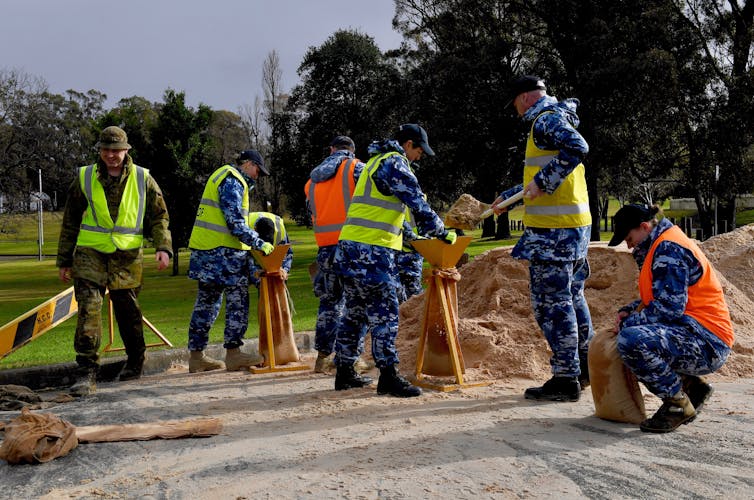
The climate policies of the former Morrison government were widely panned – largely for a weak commitment to cutting emissions and a slow transition to renewable energy. But amid all the shortcomings, arguably the biggest was the Coalition’s neglect of security threats posed by climate change.
The Albanese government has moved to address this gap. It has launched an urgent review of climate and security risk led by intelligence chief Andrew Shearer, working closely with Defence. The review team now faces a daunting task.
Climate change is a pressing and accelerating threat to global security. It will disrupt trade, displace populations, cause food and energy shortages and drive conflict between nations.
Southeast Asia, on our northern doorstep, is particularly at risk. It’s a global hotspot of overlapping climate hazards such as intensifying cyclones, sea level rise and extreme heat.
What’s more, the region is heavily populated – 275 million people live in Indonesia alone – and its social safety nets cannot support all those displaced by disasters.
The government review is a crucial first step in preparing Australia for the dangers ahead. But to be successful, it must avoid these five pitfalls.
1. Narrow Definition Of National Security
Climate change will no doubt challenge our defence force, threatening military infrastructure and readiness. It will also exacerbate tensions in military hotspots such as the South China Sea, where sea level rise and ocean warming will amplify disputes over maritime boundaries and fisheries.
But the most pressing regional security threats will come from climate change disruptions to social systems. In particular, disruptions to food, water and energy will displace large populations, undermine the legitimacy of governments and cause other social upheaval.
The issues go far beyond traditional national security portfolios such as Defence, Foreign Affairs, Home Affairs and intelligence agencies. A wide range of government departments must be involved in addressing these risks.
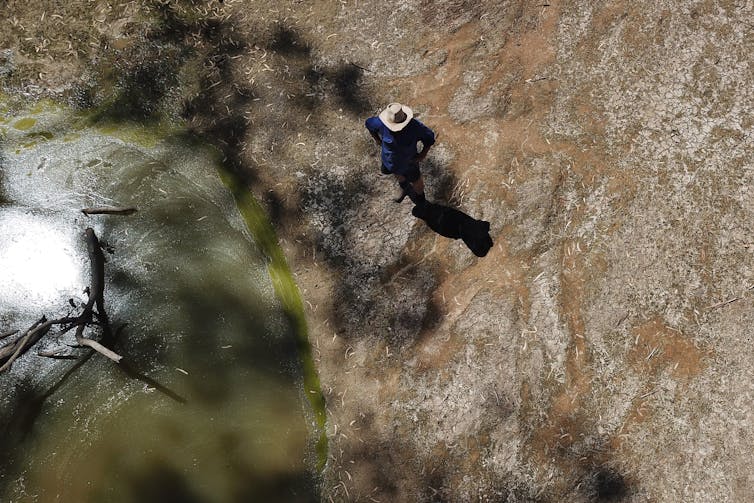
2. Focusing Too Much On Overseas Threats
The risk assessment should consider the need to both respond to climate harms within Australia while being prepared to meet overseas threats, such as military instability abroad. This will primarily require personnel to deal with both tasks.
During the election campaign, Labor mooted a new civilian national disaster response force. This force would free Defence to meet intensifying military threats abroad.
A review too heavily focused on overseas threats would miss the need for such measures.
3. Taking A Siloed View
Most analysis of climate damage tends to focus on individual, rather than system-wide, impacts.
For example, a study might examine how rising temperatures will reduce food production, but not the compounding effects of hazards happening at the same time such as floods, drought and increased pests.
It’s difficult to analyse how hazards can trigger cascades of disruptions across society. But unless the review grapples with this reality, it will fundamentally misjudge the scale of the challenge.
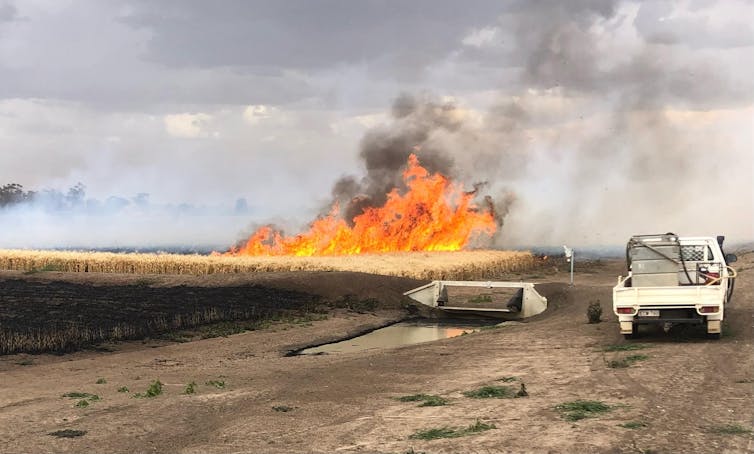
4. Underestimating The Urgency
It’s easy to assume the pace of climate impacts we’ve experienced in the recent past is what to expect in future. But in fact, these impacts are now increasing rapidly.
Extreme heat events, for example, have mushroomed 90-fold over the past decade, relative to the previous 30 years. Severe one-in-100-year flood events will soon become annual events in many parts of the world.
These changes are already visible in Southeast Asia where sea levels are rising at the fastest pace globally. Some 75 million Indonesians are now exposed to high flood risk.
So the risk assessment must avoid miscalculating how soon major disruptions to society will be felt.
5. Oversimplifying
Labor wants the review completed urgently (although it will be updated regularly). With time pressures, some shortcuts will be needed. But the assessment team should avoid oversimplifying the process.
It would be unfortunate, for example, if the review involved a series of common questions presented to government departments, with the answers collated to form the final report. This was essentially the approach of the Biden administration in the US. The result was a patchy assessment with little whole-of-government integration.
Ideally, the process should begin with consultation across government to identify the key objectives – many of which will fall within the mandates of multiple government department, such as:
- securing our borders
- ensuring energy security
- tackling transnational organised crime
- countering terrorism and violent extremism.
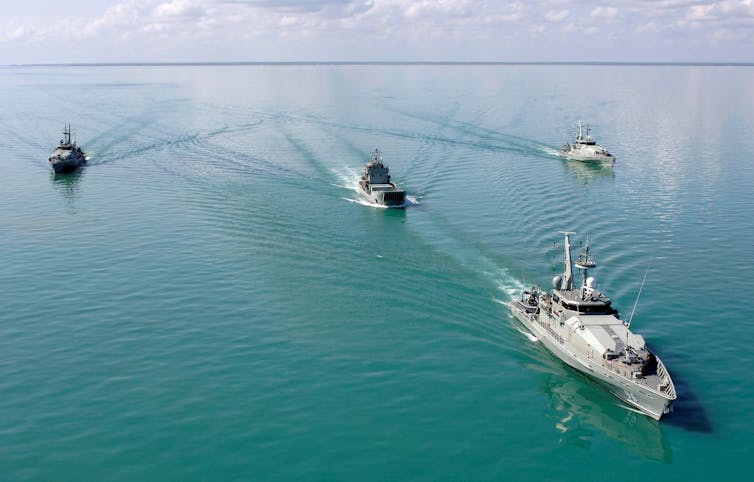
The objectives would be the reference points for the review, and relevant government agencies would work together to identify the risks and responses.
For example, China’s regional trajectory cannot be understood separately from the risks posed by climate change. Australia must develop a deep and nuanced understanding of how climate change may affect Australian efforts to compete (or cooperate) with China in the region. The review should lay the groundwork for this.
Getting It Right
Climate threats exist all at once in every direction: domestically, regionally, and internationally. This is the core challenge the review must tackle.
It will take exceptionally good judgement and execution to ensure that the risk assessment avoids becoming a platitude or, at the other extreme, mired in complexity.
Our national security, and the safety and well-being of all Australians, depends on getting it right.![]()
Robert Glasser, Honorary Professor, Institute for Climate, Energy & Disaster Solutions, Australian National University
This article is republished from The Conversation under a Creative Commons license. Read the original article.
No more excuses: restoring nature is not a silver bullet for global warming, we must cut emissions outright

Restoring degraded environments, such as by planting trees, is often touted as a solution to the climate crisis. But our new research shows this, while important, is no substitute for preventing fossil fuel emissions to limit global warming.
We calculated the maximum potential for responsible nature restoration to absorb carbon dioxide in the atmosphere. And we found that, combined with ending deforestation by 2030, this could reduce global warming 0.18°C by 2100. In comparison, current pledges from countries put us on track for 1.9-2℃ warming.
This is far from what’s needed to mitigate the catastrophic impacts of climate change, and is well above the 1.5℃ goal of the Paris Agreement. And it pours cold water on the idea we can offset our way out of ongoing global warming.
The priority remains rapidly phasing out fossil fuels, which have contributed 86% of all CO₂ emissions in the past decade. Deforestation must also end, with land use, deforestation and forest degradation contributing 11% of global emissions.
The Hype Around Nature Restoration
Growing commitments to net-zero climate targets have seen an increasing focus on nature restoration to remove CO₂ from the atmosphere, based on claims nature can provide over one-third of climate mitigation needed by 2030.
However, the term “nature restoration” often encompasses a wide range of activities, some of which actually degrade nature. This includes monoculture tree plantations, which destroy biodiversity, increase pollution and remove land available for food production.
Indeed, we find the hype around nature restoration tends to obscure the importance of restoring degraded landscapes, and conserving existing forests and other ecosystems already storing carbon.
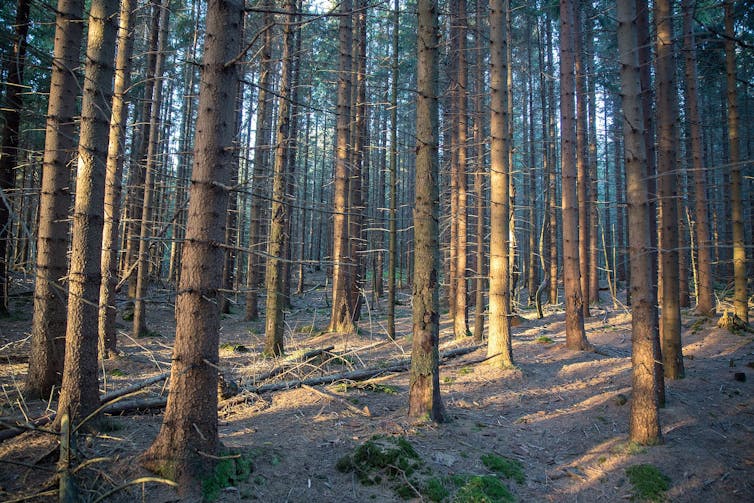
This is why we applied a “responsible development” framework to nature restoration for our study. Broadly, this means restoration activities must follow ecological principles, respect land rights and minimise changes to land use.
This requires differentiating between activities that restore degraded lands and forests (such as ending native forest harvest or increasing vegetation in grazing lands), compared to planting a new forest.
The distinction matters. Creating new tree plantations means changing the way land is used. This presents risks to biodiversity and has potential trade-offs, such as removing important farmland.
On the other hand, restoring degraded lands does not displace existing land uses. Restoration enhances, rather than changes, biodiversity and existing agriculture.
The Potential Of Nature Restoration
We suggest this presents the maximum “responsible” land restoration potential that’s available for climate mitigation. We found this would result in a median 378 billion tonnes of CO₂ removed from the atmosphere between 2020 and 2100.
That might sound like a lot but, for perspective, global CO₂ equivalent emissions were 59 billion tonnes in 2019 alone. This means the removals we could expect from nature restoration over the rest of the century is the same as just six years worth of current emissions.
Based on this CO₂ removal potential, we assessed the impacts on peak global warming and century-long temperature reduction.
We found nature restoration only marginally lowers global warming – and any climate benefits are dwarfed by the scale of ongoing fossil fuel emissions, which could be over 2,000 billion tonnes of CO₂ between now and 2100, under current policies.
But let’s say we combine this potential with a deep decarbonisation scenario, where renewable energy is scaled up rapidly and we reach net zero emissions globally by 2050.
Then, we calculate the planet would briefly exceed a 1.5℃ temperature rise, before declining to 1.25-1.5℃ by 2100.
Of course, phasing out fossil fuels while restoring degraded lands and forests must also be coupled with ending deforestation. Otherwise, the emissions from deforestation will wipe out any gains from carbon removal.
Given this, we also explored the impact of phasing out ongoing land-use emissions, to reach net-zero in the land sector by 2030.
As with restoration, we found halting deforestation by 2030 has a very small impact on global temperatures, and would reduce warming by only around 0.08℃ over the century. This was largely because our baseline scenario already assumed governments will take some action. Increasing deforestation would lead to much larger warming.
Taken together – nature restoration plus stopping deforestation – end-of-century warming could be reduced by 0.18℃.
Is This Enough?
If we enter a low-emissions pathway to limit global warming to 1.5℃ this century, we expect global temperature rise to peak in the next one to two decades.
As our research shows, nature restoration will unlikely be done quickly enough to offset the fossil emissions and notably reduce these global peak temperatures.
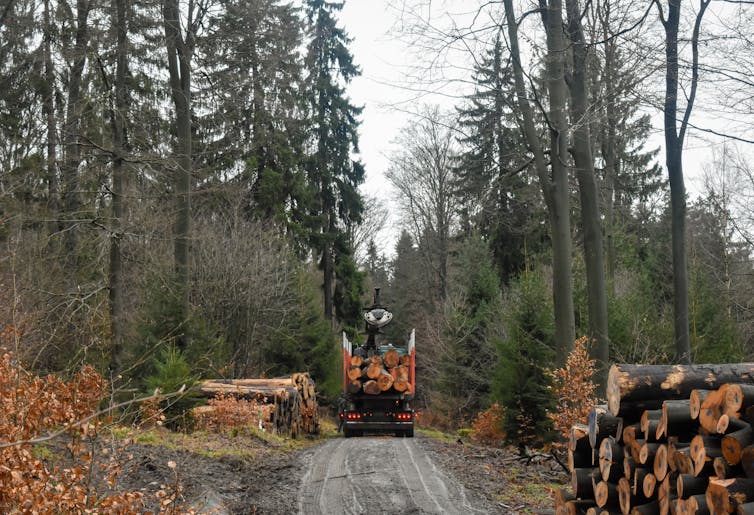
But let us be clear. We are not suggesting nature restoration is fruitless, nor unimportant. In our urgency to mitigate climate change, every fraction of a degree of warming we can prevent counts.
Restoring degraded landscapes is also crucial for planetary health – the idea human health and flourishing natural systems are inextricably linked.
What’s more, protecting existing ecosystems – such as intact forests, peatlands and wetlands – has an important immediate climate benefit, as it avoids releasing the carbon they store.
What our research makes clear is that it’s dangerous to rely on restoring nature to meet our climate targets, rather than effectively and drastically phasing out fossil fuels. We see this reliance in, for instance, carbon offset schemes.
Retaining the possibility of limiting warming to 1.5℃ requires rapid reductions in fossil fuel emissions before 2030 and global net-zero emissions by 2050, with some studies even calling for 2040.
Wealthy nations, such as Australia, should achieve net-zero CO₂ emissions earlier than the global average based on their higher historical emissions.
We now need new international cooperation and agreements to stop expansion of fossil fuels globally and for governments to strengthen their national climate pledges under the Paris Agreements ratcheting mechanism. Promises of carbon dioxide removals via land cannot justify delays in these necessary actions.![]()
Kate Dooley, Research Fellow, Climate & Energy College, The University of Melbourne and Zebedee Nicholls, PhD Researcher at the Climate & Energy College, The University of Melbourne
This article is republished from The Conversation under a Creative Commons license. Read the original article.
Why do whales keep getting tangled in shark nets? And what should you do if you see it happen?
Vanessa Pirotta, Macquarie UniversityAustralians have watched in horror this week as two separate humpback whales were tangled up in Queensland shark nets on the same day. These put the number of whales caught in Queensland shark nets to four this season – that we know about.
Worryingly, most humpback whales migrating north from Antarctica haven’t even passed Sydney yet. With more whales travelling to the warm Queensland breeding waters, this probably won’t be the last shark net entanglement we’ll hear about this year.
I’ve seen the reality of whale entanglement in shark nets firsthand, when I studied a humpback whale calf who died in a shark net a few years back. The animal autopsy (necropsy) conducted later confirmed the animal drowned. It was terrible.
So what are shark nets exactly, and how do they harm animals?
Shark Nets Don’t Just Harm Sharks
Whale entanglement in fishing gear is a global problem. In some cases nets – combined with other human-made threats such as ship collisions – limit the recovery of some whale populations since whale hunting ceased, including the North Atlantic right whale.
Fortunately, the number of Australian humpback whales has been growing post-whaling. In fact, Australia’s east coast humpback whale population has an estimated 40,000 individuals.
The bad news is, more whales means more potential interactions with humans and our fishing gear, such as shark nets.
Shark nets are dotted around Queensland to try to minimise shark interactions with swimmers. These nets are anchored by chain to the seafloor and are designed to capture sharks before they swim too close to the beach.
But the nets offer little protection. For one, they’re typically between 124 and 186 metres long, 6 metres deep and don’t cover the entire beach, which means sharks can easily swim around and under them.
Indeed, despite the use of shark nets and other shark control equipment (such as drumlines), new data released today shows the number of shark bites in Australia have actually increased since 1791. Scientists caution that we are yet to understand why.
Sadly, shark nets usually kill the sharks that swim into them as they’re unable to move. And as we’ve seen this week, these nets do not discriminate. Other marine life – turtles, dolphins as well as whales – get caught up in this problem, too.
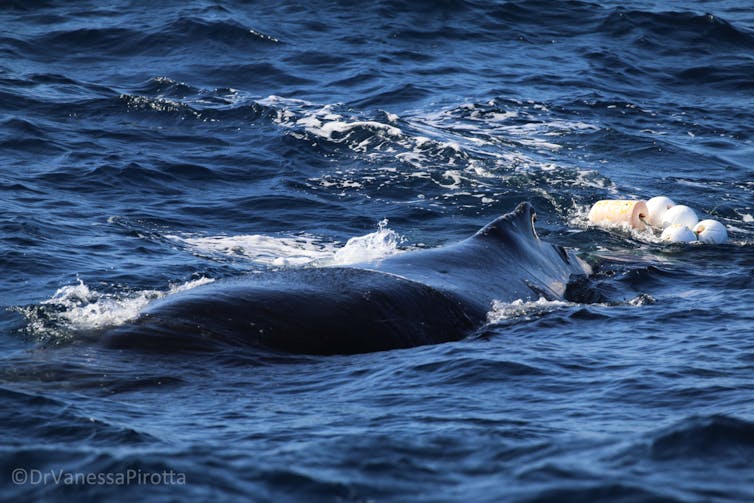
What Happens When A Whale Is Entangled?
We don’t exactly know why whales become entangled. Whales are extremely curious mammals and may investigate these dangers as they migrate, but get too close. Another reason may be that whales and other animals might simply not see the danger, and swim into it.
It’s not just shark nets, though. Whales in Australian waters get tangled up in a range of fishing gear – lobster and crab pots, longlines, gillnets and ghost nets (discarded or previously-used gear).
Whale entanglement can be an extremely stressful experience. Often, we see whales thrashing at the surface trying to free themselves. This can make the situation worse and limit their movement even further.
Depending on the entanglement and gear type, some whales may be unable to surface for air, and drown.
Alternatively, some whales might manage to get partially free, but suffer long-term consequences from dragging the nets and ropes, which can cut into their blubber.
Over time, these wounds can become infected, restrict the movement of the whale, or both. This leaves them vulnerable to predators such as killer whales and sharks, or unable to dive and dodge vessels.
Can We Use Technology To Stop Entanglements?
The reality is no one wants entanglements. Humans don’t want it to happen and I’m sure an entangled whale doesn’t enjoy the experience. It’s an unintended consequence of our attempts to protect swimmers.
So, what can we do about it? Stop swimming in the ocean? Remove the nets? Or is new technology our only answer?
Some suggest removing Queensland’s shark nets during winter when whales make their annual migration. This has yet to take place. What’s more, people often swim year-round in Queensland’s warm ocean waters.
In contrast, shark nets in New South Wales are removed during the winter to avoid the main part of whale migration. They’re deployed again later in the year, from September 1, which overlaps only with the southward migration back to Antarctica.
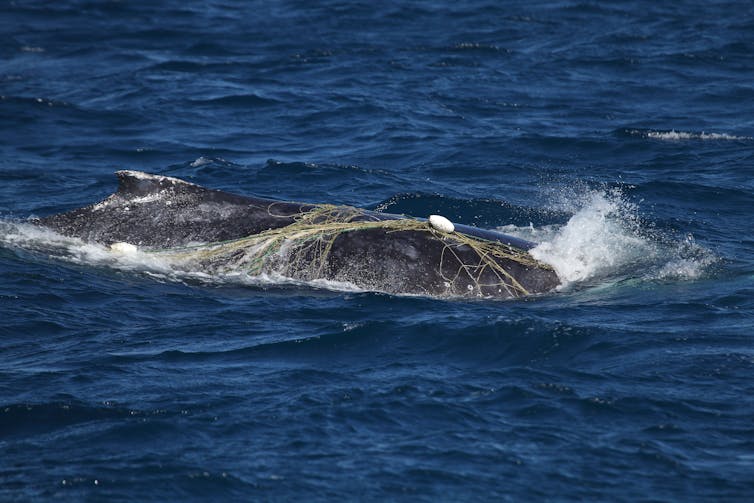
In the meantime, we can continue to trial other options. One is using SMART drumlines for a more targeted approach to capture and relocate sharks.
This is where a baited hook is placed on an anchor with two buoys and an attached satellite (GPS) technology unit. Once a shark takes the bait and is captured, authorities are alerted and can respond quickly to tag and relocate the animal offshore, away from the area of concern.
Scientists can then use shark movement data from the tag to learn more about shark habitat use.
While this isn’t a solution to whale entanglement, it does reduce the amount of netting in the water compared to shark nets. It’s also a much better option for sharks.
The Queensland government has invested in shark-control technology called “catch alert drumlines”, which are a type of SMART drumline. Trials of their use began in 2021.
Drone surveillance has also been a complimentary shark monitoring tool on Queensland beaches.
What Should You Do If You See An Entangled Whale?
Whale disentanglement should never be attempted by the general public.
Disentangling a whale requires trained personnel, specialised gear and trained vessel operators. Even experts with years of disentangling experience have been killed helping free whales from nets.
Whales are big. When they’re stressed and exhausted, they pose a serious threat to humans. Instead, if you see a whale caught in gear at the beach, tell the appropriate people about it immediately.
Authorities, such as the Queensland Government (The Department of Environment and Science) or The Sea World Foundation are key contacts in Queensland.
Other options include ORRCA (NSW based, with coverage in Queensland), which can relay important information to the people best placed to help. Social media can also be a powerful tool to alert authorities.
Queensland whale rescue crews also remain on standby during whale migration season and can deploy trained personnel to respond to entanglements swiftly, weather permitting.
As the whale migration continues north, lets hope these recent entanglements continue to prompt timely discussion about shark nets in Queensland waters.![]()
Vanessa Pirotta, Postdoctoral Researcher and Wildlife Scientist, Macquarie University
This article is republished from The Conversation under a Creative Commons license. Read the original article.
Australia’s central climate policy pays people to grow trees that already existed. Taxpayers – and the environment – deserve better
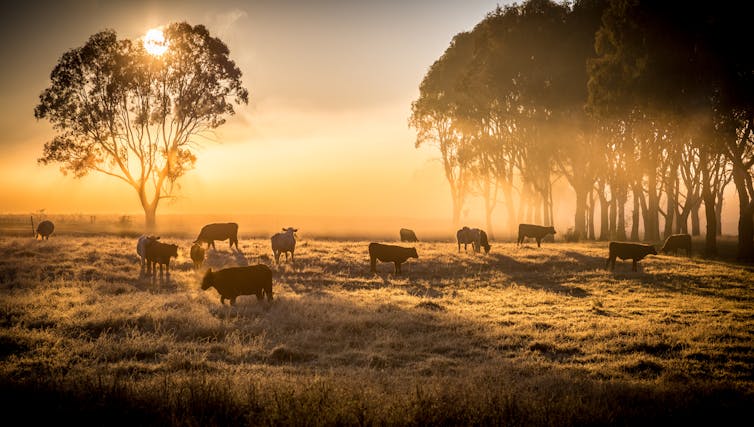
The federal government has launched an independent review of Australia’s central climate policy, the Emissions Reduction Fund, after we and others raised serious concerns about its integrity.
The review will examine, among other issues, whether several ways of earning credits under the scheme lead to genuine emissions reductions.
One method singled out for scrutiny involves regrowing native forests to store carbon from the atmosphere.
Our new analysis suggests the vast majority of carbon storage credited under this method either has not occurred, or would have occurred anyway. Here we explain why.

The Background
The Emissions Reduction Fund provides carbon credits to projects that reduce greenhouse gas emissions. For the past decade, it has been the centrepiece of Australia’s climate policy.
Under the fund, projects that reduce emissions receive carbon credits that can be sold to the federal government and private entities that are required, or choose to, offset their emissions.
We are experts in environmental law, markets and policy. The lead author of this article, Andrew Macintosh, is the former chair of the Emissions Reduction Assurance Committee, the government-appointed watchdog that oversees the Emissions Reduction Fund’s methods.
Earlier this year, we went public with details of serious integrity issues in the scheme. One main concern involves a method known as “human-induced regeneration of a permanent even-aged native forest”.
This method accounts for almost 30% of the carbon credits that have been issued, roughly 30% of registered projects, and more than 50% of carbon credits contracted for sale to the federal government.
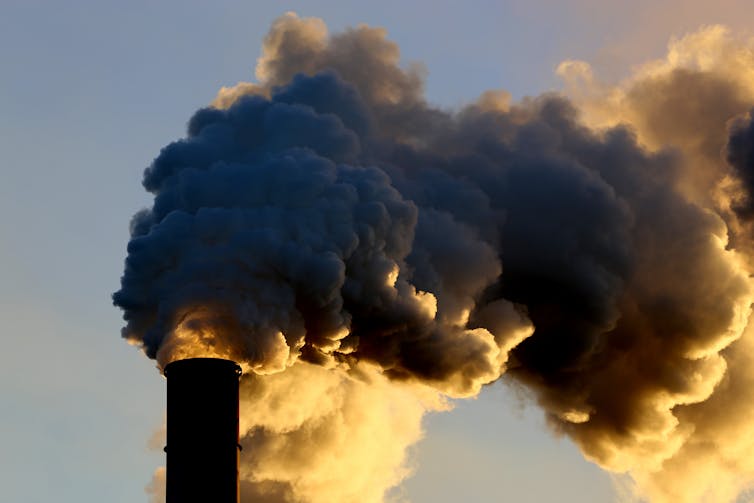
Problems With The Method
Under the method, landholders get credits for regenerating native forests by changing the way they manage their properties.
When the method was created, it was assumed projects would be located in areas where vegetation had previously been cleared, and where grazing and repeated clearing were suppressing regrowth.
But most projects have been located in parts of Australia’s arid and semi-arid rangelands where native vegetation has never been cleared (because it is not economic to do so).
There are two main problems with the method and how it’s been applied. We outline these below.

Problem 1: Trees Existed Before Projects Began
First, data published by the regulator shows proponents have been allowed to include a substantial number of mature trees in the areas for which they receive carbon credits. This has led to substantial over-crediting – in simple terms, the carbon abatement is not real.
So how has this occurred?
Under the method, proponents do not have to measure tree growth - they estimate it using a model.
The model assumes all trees in the forest begin regenerating at the same time when the project activities start. The modelled tree growth starts slowly, then accelerates to peak when the forest is young and vigorous. It then slows as the expanding trees compete with each other.
The model cannot be validly applied to estimate tree growth in areas where substantial numbers of pre-existing mature trees exist. But this is what’s happening.
As a consequence, proponents are being issued credits for growing trees that were already there when the projects started.

Problem 2: Rain Is Making Trees Grow, Not The Project Activities
The method is based on the premise that changes in land management are necessary to regenerate the forests. But our analysis shows that, where trees are regenerating, it is due mainly to rainfall.
Almost all current projects seek to regenerate forests by reducing grazing pressure. For this to make sense, grazing would need to be responsible for dramatically reducing the prevalence of trees in the rangelands. It would also have to be possible to regenerate these “lost” forests by reducing grazing pressure. Neither of these are true.
For more than 30 years, there has been a heated debate in ecological and natural resource management circles about the causes of “woody thickening” (or increasing density of native trees and shrubs) in grazing areas. The two dominant, competing hypothesis are that woody thickening is:
caused by grazing and an accompanying reduction in vegetation burning
a cyclical phenomena in which vegetation slowly accumulates over time, especially following runs of wet years, until a drought causes woody plant cover to stabilise or decline.
There’s no material evidence or support for the notion that grazing alone (in the absence of clearing) has significantly reduced tree cover over vast areas of the rangelands.
In fact, every year, between 200,000 and 400,000 hectares of land cleared for grazing is re-cleared. This demonstrates that grazing is rarely sufficient on its own to stop regrowth without mechanical or chemical interventions to kill trees.
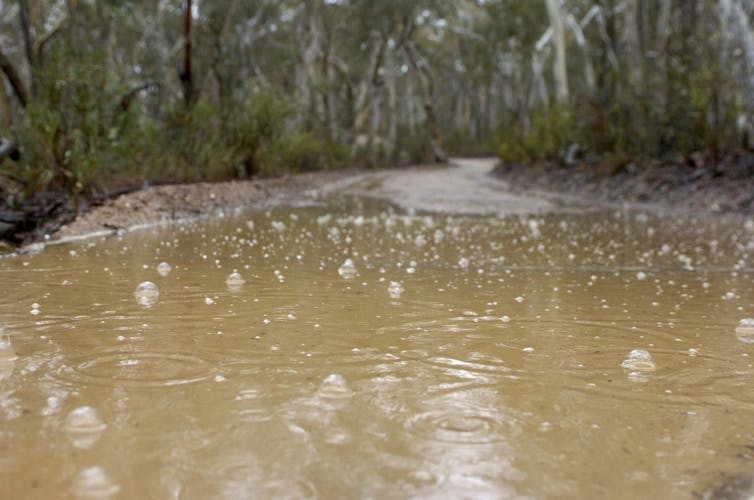
Restoring Integrity
Regeneration of native forests in cleared areas is a valid and desirable way to reduce emissions and generate carbon credits.
But the human-induced regeneration method is deeply flawed. It has led to credits being issued for tree growth that is not real, or would have occurred anyway.
The review, to be led by former chief scientist Ian Chubb, is a chance to restore integrity to this method and ensure that credits are only issued for legitimate regeneration projects.
Because as climate change worsens, Australians need to know our most important climate policy is both value for money, and delivering real environmental gains.
The Clean Energy Regulator, which operates the Emissions Reduction Fund, did not respond to The Conversation’s request for comment on the authors’ claims. However in a previous statement it said:
Prof Macintosh and his colleagues have not engaged with the substance of the ERAC’s comprehensive response papers on human induced regeneration … The government has said it will undertake a review of the ERF and details will be announced shortly. We do not wish to pre-empt the scope of the review or its findings. We welcome the review and look forward to engaging substantively with the review process once it commences.
Andrew Macintosh, Professor and Director of Research, ANU Law School, Australian National University; Don Butler, Professor, Australian National University, and Megan C Evans, Senior Lecturer and ARC DECRA Fellow, UNSW Sydney
This article is republished from The Conversation under a Creative Commons license. Read the original article.
We studied how the Antarctic ice sheet advanced and retreated over 10,000 years. It holds warnings for the future
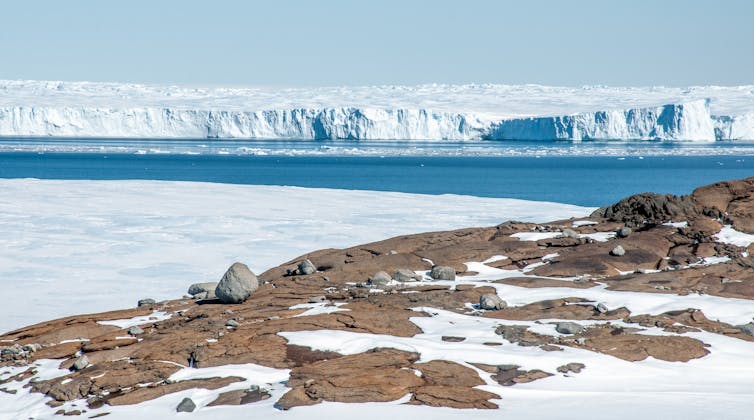
Alarming stories from Antarctica are now more frequent than ever; the ice surface is melting, floating ice shelves are collapsing and glaciers are flowing faster into the ocean.
Antarctica will be the largest source of future sea-level rise. Yet scientists don’t know exactly how this melting will unfold as the climate warms.
Our latest research looks at how the Antarctic ice sheet advanced and retreated over the past 10,000 years. It holds stark warnings, and possibly some hope, for the future.
The Current Imbalance
Future sea-level rise presents one of the most significant challenges of climate change, with economic, environmental and societal impacts expected for coastal communities around the globe.
While it seems like a distant issue, the changes in Antarctica may soon be felt on our doorsteps, in the form of rising sea levels.
Antarctica is home to the world’s largest single mass of ice: the Antarctic ice sheet. This body of glacier ice is several kilometres thick, nestled on top of solid land. It covers entire mountain ranges beneath it.
The ice sheet “flows” over the land from the Antarctic interior and towards the surrounding ocean. As a whole it remains a solid mass, but its shape slowly deforms as the ice crystals move around.
While the ice sheet flows outward, snowfall from above replenishes it. This cycle is supposed to keep the system in balance, wherein balance is achieved when the ice sheet is gaining the same amount of ice as it’s losing to the ocean each year.
However, satellites keeping watch from above show the ice sheet is currently not in balance. Over the past 40 years, it has lost more ice than it has gained. The result has been global rising sea levels.
But these historical observations span only four decades, limiting our understanding of how the ice sheet responds to climate change over much longer periods.
We wanted to look further back in time – before satellites – and even before the first polar explorers. For this, we needed natural archives.
Digging Up Antarctica’s Past
We brought together various natural archives to unearth how the Antarctic ice sheet changed over the past 10,000 years or so. These included:
- ice cores collected from Antarctica’s remote interior, which can show us how snow accumulated in the past
- rocks collected from exposed mountain peaks, which reveal how the ice sheet has thickened or thinned with time
- sediment cores collected from the seafloor, which reveal how the ice sheet margin – where the edge of the land ice meets the ocean – advanced or retreated
- lake mud and old beaches, which reveal how the coastline changed in response to the ice sheet growing or shrinking.
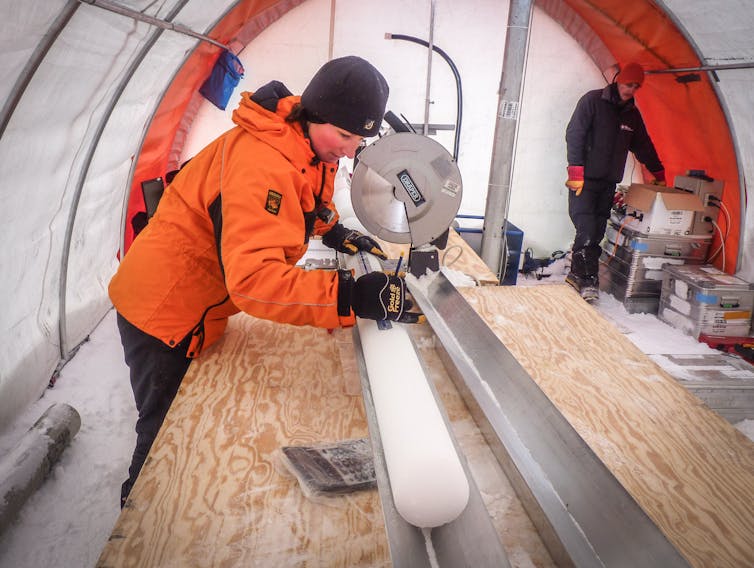
When we started our research, I wasn’t sure what to expect. After all, this period of time was long considered fairly dull, with only small changes to the ice margin.
Nevertheless, we studied the many different natural archives one by one. The work felt like a 1,000-piece jigsaw puzzle, full of irregular-shaped pieces and seemingly no straight edge. But once we put them together, the pieces lined up and the picture was clear.
Most striking was a period of ice loss that took place in all regions of Antarctica about 10,000 to 5,000 years ago. It resulted in many metres of sea-level rise globally.
In some regions of Antarctica, however, this ice loss was then followed by ice gain during the past 5,000 years – and a corresponding global sea-level fall – as the ice sheet margin advanced to where it is today.
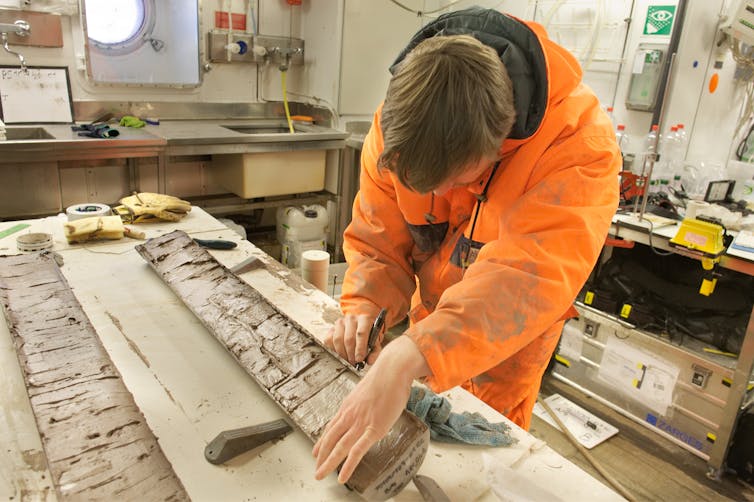
A Warning
Understanding how and why the Antarctic ice sheet changed in this fashion offers lessons for the future.
The first lesson is more of a warning. The period of ice loss from 10,000 to 5,000 years ago was rapid, occurring at a similar rate to the most dramatically changing parts of the Antarctic ice sheet today.
We think it was likely the result of warm ocean water melting the underside of floating ice shelves – something that has also happened in recent decades. These ice shelves hold back the ice on land, so once they’re removed the ice on the land flows faster into the ocean.
In the future, it’s predicted ice loss will accelerate as the ice sheet retreats into basins below sea level. This may already be under way in some regions of Antarctica. And based on what happened in the past, the resulting ice loss could persist for centuries.
Bouncing Back
The second lesson from our work may bring some hope. Some 5,000 years ago the ice sheet margin stopped retreating in most locations, and in some regions actually started to advance. One explanation for this relates to the previous period of ice loss.
Before the ice began melting away, the Antarctic ice sheet was much heavier, and its weight pushed down into the Earth’s crust (which sits atop a molten interior). As the ice sheet melted and became lighter, the land beneath it would have lifted up – effectively hauling the ice out of the ocean.
Another possible explanation is climate change. At Antarctica’s coastal fringe, the ocean may have temporarily switched from warmer to cooler waters around the time the ice sheet began advancing again. At the same time, more snowfall took place at the top of the ice sheet.
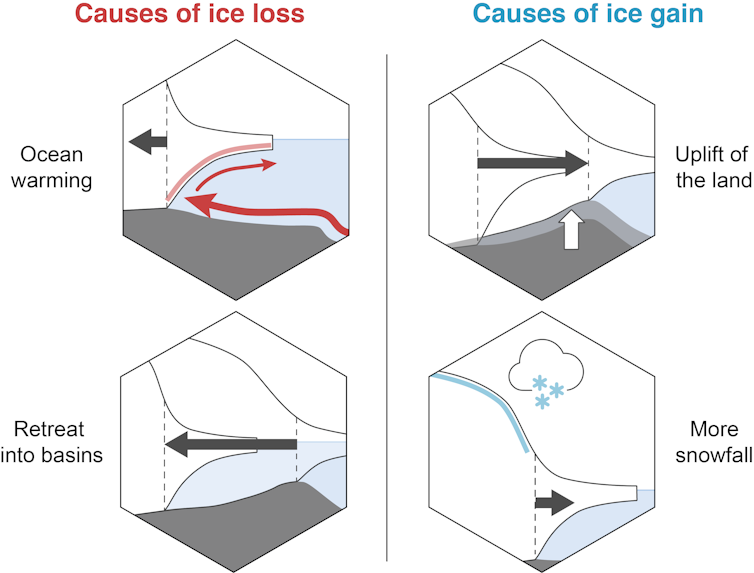
Our research supports the idea that the Antarctic ice sheet is poised to lose more ice and raise sea levels – particularly if the ocean continues to warm.
It also suggests uplift of the land and increased snowfall have the potential to slow or offset ice loss. However, this effect is not certain.
The past can never be a perfect test for the future. And considering the planet is warming faster now than it was back then, we must err on the side of caution.![]()
Richard Selwyn Jones, Research Fellow, Monash University
This article is republished from The Conversation under a Creative Commons license. Read the original article.
Australians are installing rooftop solar like never before. Who is burdened with taking care of it at home?
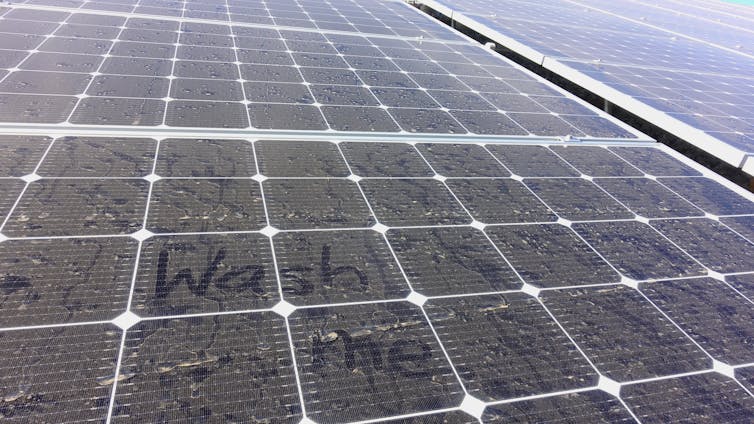
Rooftop solar panels and small batteries are driving Australia’s rapid shift towards renewable energy. Some 30% of detached homes on Australia’s national grid have these systems installed. By 2050, this proportion could reach 65%.
This means responsibility for maintaining our power supply is shifting from skilled, well-paid power station engineers to householders. Essentially, care for our energy system is becoming housework.
Our new research has found rooftop solar maintenance, as with other forms of housework, has the potential to become an equity issue. And the burden of this unrecognised work is set to worsen as the energy transition accelerates.
If our energy system relies on invisible care, we should acknowledge who the burden is falling on and whether we’re creating new inequalities.
Rooftop Solar Maintenance As Housework
The things we do to maintain our worlds – be it ourselves, others, the environment or everything else — can collectively be thought of as care. Historically, the burden of care has largely fallen on women and marginalised communities. When society does not value their care work, inequality is exacerbated.
Housework is a form of care, and it tends to be invisible, unpaid and performed only by those who notice it needs doing. In many cases, this means women. What does it mean in the case of household energy technologies?
When a householder decides to install technologies such as rooftop solar, they must determine what size and type of system will meet their needs and to research products and installers.
Once the system is installed, they then need to check it’s performing as intended and recognise when maintenance is required. When something goes wrong, they need to follow up with the relevant organisation to resolve it.
We cannot yet declare exactly who the burden of rooftop solar and battery care is falling to – more research is needed on this. But our recent study found the changing nature of household energy has the potential to reproduce existing forms of inequality across gender, cultural groups and generations.
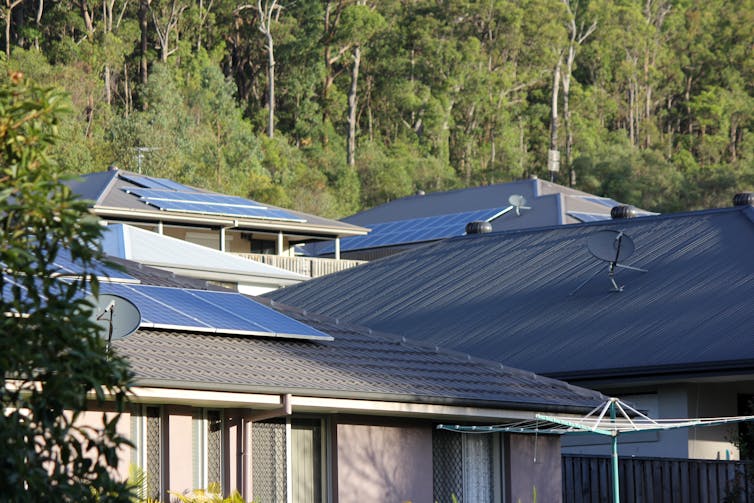
What We Found
We held interviews and focus groups with 55 Australian householders from metropolitan and rural areas who purchased energy technologies, as well as 18 people from installer businesses and community energy groups.
We found they envisage a more caring energy system - one that prioritises making sure everyone can pay their bills and facilitates sharing, rather than one that rewards individuals with the most resources and know-how.
We described the different types of care driving the energy transition, and found examples of community groups and businesses going above and beyond to provide support.
For example, some installers we spoke with took time to help householders understand what type and size system best suited them. Others performed work for free to help someone out, such as one installer who told us:
We get customers right now because the company that installed it won’t come out and help them. That’s actually something we do promote as well, is that if you’re not our customer, we’ll help you. A lot of that is volunteer work.
But according to other research participants, some installers are only interested in making the sale, leaving neglected paperwork, missing components, or systems that just don’t work. Sometimes the householder is unaware their system is not working as intended.
One woman, a disability pensioner, had been sold an expensive solar and battery system that didn’t work. As she sought electricians to fix it, she lamented they were:
so male-dominated that they don’t want you looking over their shoulder […] they’re not willing to explain things either.
This example highlighted difficulties in establishing rapport between installers and householders of different genders, ages or cultural backgrounds, a finding shared by other researchers.
Research from 2017 found technologies can be misused or ignored when optimistic assumptions are made about their user-friendliness. Other research from the United Kingdom showed developers of home technology rarely involve users in the design process, and tend to design for an idealised masculine consumer.
These different dynamics compound to the point where our energy system is designed to benefit those who understand its complexity and are able to take advantage.
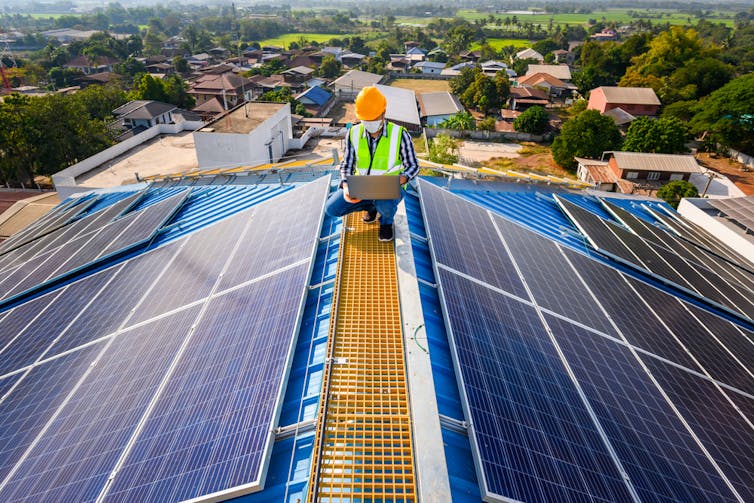
A Caring Vision For Our Energy Future
We also found our research participants wanted their caring visions for the future better represented in government policies.
For many, installing energy technology was about doing the right thing for the planet, rather than to lower their power bills or become self-sufficient in energy. But they told us how ideas based in care aren’t often taken seriously by industry and government.
Government incentive schemes that help people afford solar and batteries are important and effective. But they also give rise to opportunistic sales tactics and pitfalls for householders.
Incentive programs need to place high expectations on installers and expel operators with bad track records. More assertive regulation is needed that goes beyond simple consumer protections and puts less of an onus on householders to navigate their way alone. Governments can also support community groups that help in this task.
Policies should also accommodate caring, community-focused householders who aren’t just installing rooftop solar to benefit themselves. It might include allowing free or low-cost energy sharing at the local scale to help out neighbours and avoid spilling excess solar to the wider grid.
If we don’t recognise and act on creating a caring energy system, we could be left with one that’s partially built, unfair and rewards a race to the bottom.![]()
Kathryn Lucas-Healey, Research Fellow, Battery Storage and Grid Integration Program, Australian National University; Alice Wendy Russell, Research fellow, Battery Storage and Grid Integration Program, Australian National University; Hedda Ransan-Cooper, Research Fellow, College of Engineering and Computer Science, Australian National University, and Hugo Temby, Doctoral Researcher, Battery Storage and Grid Integration Program, Australian National University
This article is republished from The Conversation under a Creative Commons license. Read the original article.
Thousands of giant crabs amass off Australia’s coast. Scientists need your help to understand it
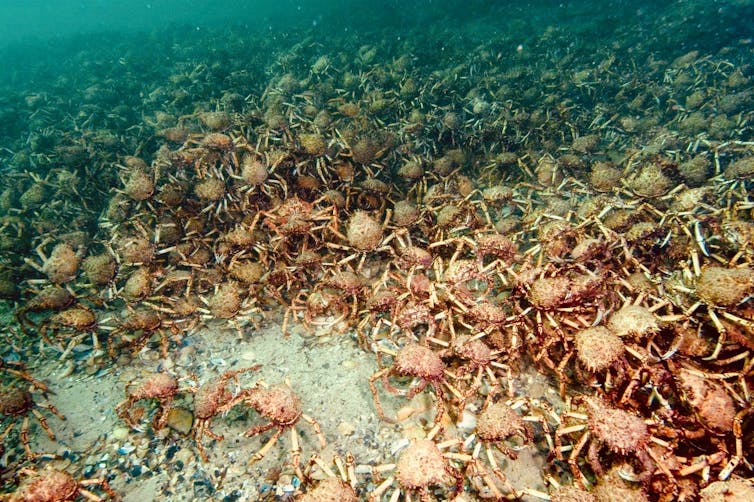
Am I not pretty enough? This article is part of The Conversation’s series introducing you to little-known Australian animals that need our help.
Every winter in shallow waters off Australia’s southern coast, armies of native spider crabs appear in their thousands. They form huge underwater piles, some as tall as a person. These fascinating crustaceans are on a risky mission – to get bigger.
Crabs cannot simply grow like humans and other soft-bodied creatures. They must break free from their shells, expand their soft flesh and harden a new shell – all while dodging hungry predators on the hunt for a soft, easy meal.
This moulting process leaves crabs clumsy and uncoordinated, making any escape tricky. That’s thought to be one reason they clump together in such big numbers – to keep each other safe.
The spectacular gatherings attract tourists from interstate and overseas and have even been featured in a BBC documentary. But despite all this attention, scientists know very little about these quirky creatures. We need your help to investigate.
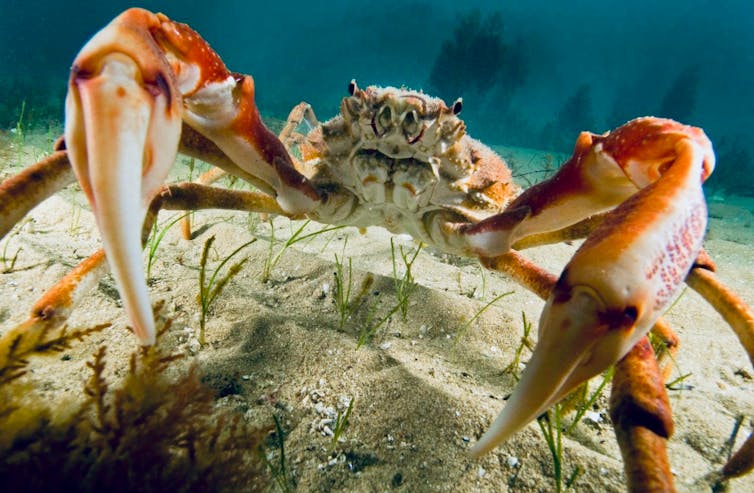
Safety In Numbers
Southern Australia’s spider crabs (Leptomithrax gaimardii) are usually orange to red-brown. They can reach 16cm across their shell and 40cm across their legs, and are commonly known as great spider crabs.
Spider crabs are believed to be widely dispersed in deeper waters. But they’re most visible to humans when they congregate near shore in winter, and occasionally at other times of year.
Once together, spider crabs shed their old shells in a synchronised act thought to take about an hour. The crabs stay together until their new hard shells form, which probably takes a few days.
The aggregation can last a few weeks. Soft crabs are thought to take refuge in the middle of the piles, protected by crabs yet to moult.
Afterwards, spider crabs return to deeper waters and their solitary lives, leaving the seafloor littered with discarded shells.

Plenty Of Mysteries To Solve
Spider crab aggregations have been officially reported along the Victorian and Tasmanian coasts. Historically, most winter sightings have been reported on the Mornington Peninsula – particularly near the Rye and Blairgowrie piers.
Anecdotal evidence suggests the gatherings can also happen elsewhere. For instance, an aggregation was reported this year on the western side of Port Phillip Bay.
But there’s still so much we don’t know about spider crabs, such as:
- how many spider crabs are out there?
- how many gather en masse?
- how long do the crabs stay?
- what signals do crabs use to know it’s time to come together?
- why do the crabs aggregate at one location in several consecutive years then not return?
Most spider crab gatherings seem to occur in winter, but they’re known to come together at other times. For example, aggregations in late spring, midsummer and early autumn have been reported in parts of Port Phillip Bay and elsewhere Victoria and Tasmania.
Those aggregations don’t seem related to moulting – in fact, we have no idea why they occur!
We Need Your Help
To better understand spider crab aggregations, a citizen science project called Spider Crab Watch has been launched.
We’re inviting everyone – including divers, fishermen, swimmers and boaters – to report where they see spider crabs, alone or in groups. We’d also love to hear from people who come across discarded spider crab shells on the beach, because that indicates an aggregation occurred nearby.
The reports will help us determine the habitats and conditions suitable for spider crab aggregations. We welcome sightings from Port Phillip Bay and across the Great Southern Reef, where spider crabs live. The reef spans the southern part of Australia from New South Wales to Western Australia and Tasmania.
Logging a sighting is a quick process. Just report the date, time and location of the spider crabs, and answer a few questions. Photos are not essential but always welcome.
We’re also using traditional research to solve these mysteries. This includes underwater surveys, spider crab tagging and the use of timelapse cameras to capture images of spider crabs and their predators at sites where aggregations are expected.
After the aggregations, the images captured will be uploaded to a web portal. Interested people from around the country (and the world) can then analyse the images to help us count spider crabs and identify their predators.
If that interests you, sign up for Spider Crab Watch updates.
This program and the broader research is supported by funding from the Victorian government.
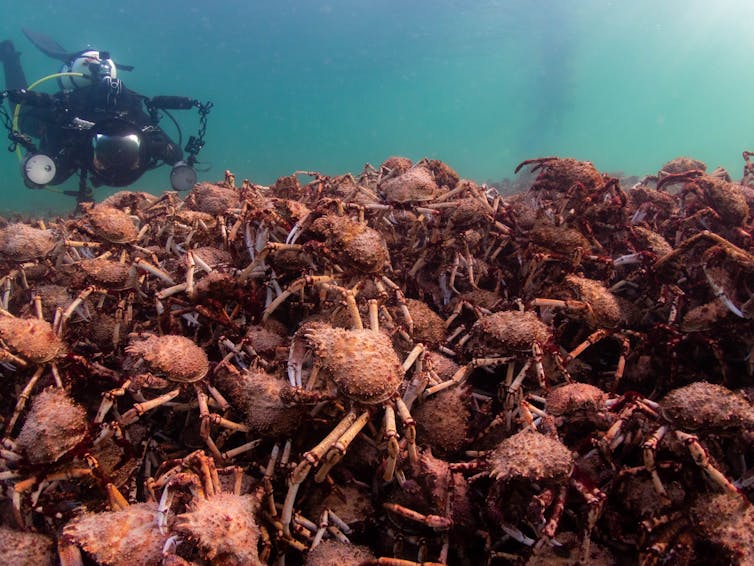
Understanding Our Oceans
The aims of this research go far beyond spider crabs. Scientists also want to know if spider crab gatherings help predators maintain healthy populations.
Huge stingrays, seals, seabirds and some sharks are often spotted near aggregation sites. But we need more information to understand how crab aggregations affect animals at the top of the food chain.
Spider crabs have captured the imagination of ocean lovers for decades – yet we know so little about their lives.
This project will help us gather information on this amazing natural spectacle and the role it plays in the marine environment. ![]()
Elodie Camprasse, Research fellow in spider crab ecology, Deakin University
This article is republished from The Conversation under a Creative Commons license. Read the original article.
Photos from the field: diving with Tasmania’s rare and elusive red handfish, your new favourite animal

Environmental scientists see flora, fauna and phenomena the rest of us rarely do. In this series, we’ve invited them to share their unique photos from the field.
On the surface, it looks like any other bay near Hobart. But beneath the calm waters live a small population of one of the rarest and most endangered fish in the world: the red handfish.
I was diving in early 2020 with a small crew of some of the best handfish hunters on the planet, people who had monitored and nurtured knowledge of this tiny creature over recent years.
We laid out a series of “swim lanes” using survey tapes, which we would then search painstakingly in our wetsuits and SCUBA gear. We would take perhaps an hour to drift along each 50 metre lane, carefully moving seaweed and peering into each little nook for elusive handfish.
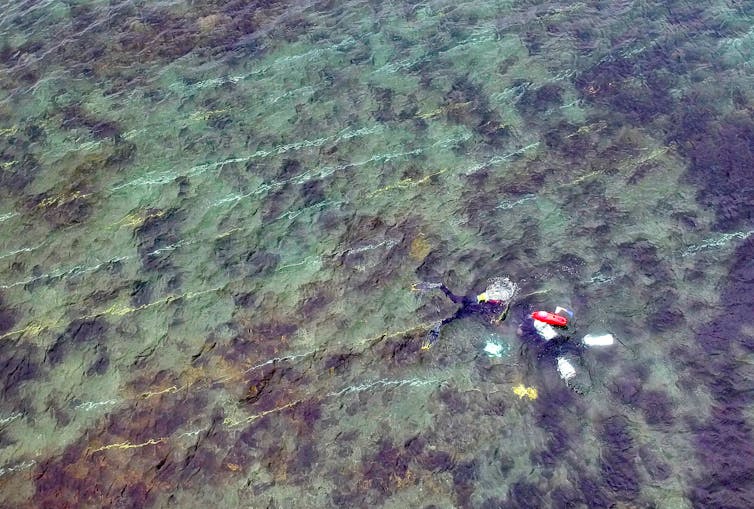
Towards the end of my first lane, I found one. Nestled between two seagrass plants, the little fish with its seemingly oversized hands stared up at me.
I marked it with a bright yellow flag so the research team could record the little critter in all its glory. This involved collecting essential scientific information, such as length and photographs of both sides of the fish, all the while avoiding disruption to it and its environment.
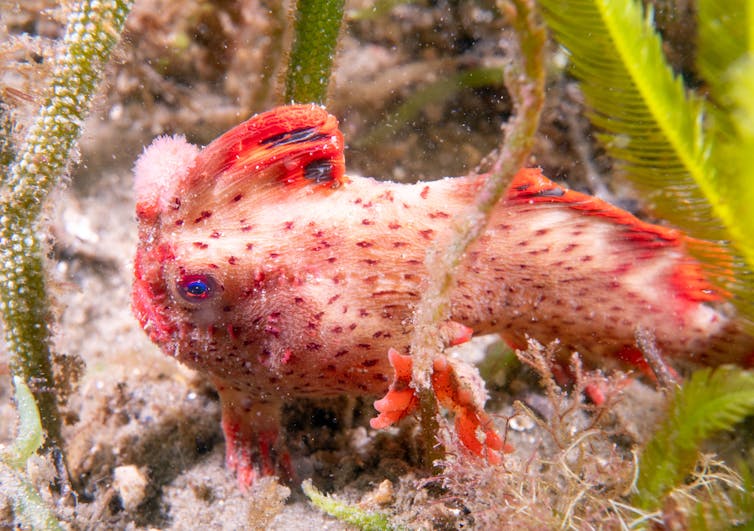
There are just two small areas near Hobart, and therefore in the world, where the red handfish is known to still live, amounting to a wild population of around 100 adults.
Earlier this year, the species was thankfully earmarked for federal conservation funding, but more must be done to stop this otherworldly creature from continuing to vanish.
Red Handfish Are Cryptic And Bizarre
Red handfish (Thymichthys politus) are a contradiction – this species is just several centimetres long, partly camouflaged yet trimmed by flashes of bright red. They are cryptic, and use their enlarged pectoral fins resembling human hands to walk across the seafloor, rather than swimming in the water column.
Handfish are a type of anglerfish. They are ambush predators, which means they prefer to sit and wait among seaweed, sponges and other cover for their prey to swim past, before they strike.
To help attract their prey – such as small fish and invertebrates – they have a fluffy lure on their forehead.
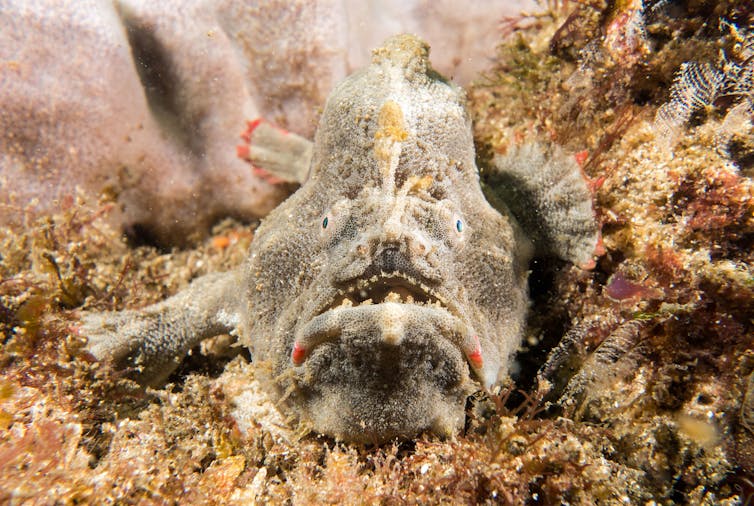
With so few left, the red handfish is extremely vulnerable to any pressures impacting the two areas it’s found in.
This includes habitat loss (driven largely by a boom in native urchins overgrazing seaweed), pollution and other urban impacts.
Direct disturbance by humans such as boating, anchoring and possibly diving are also potential threats, particularly during breeding season. And climate change impacts, such as warming waters, also play a big role in the decline of the species.
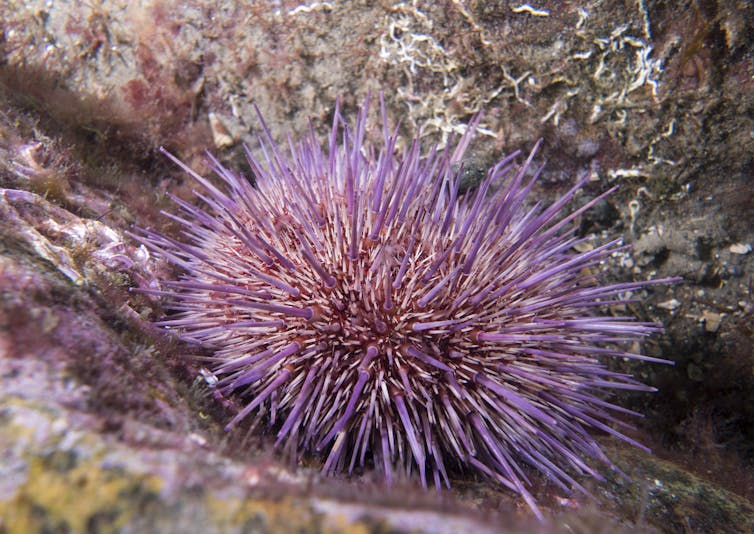
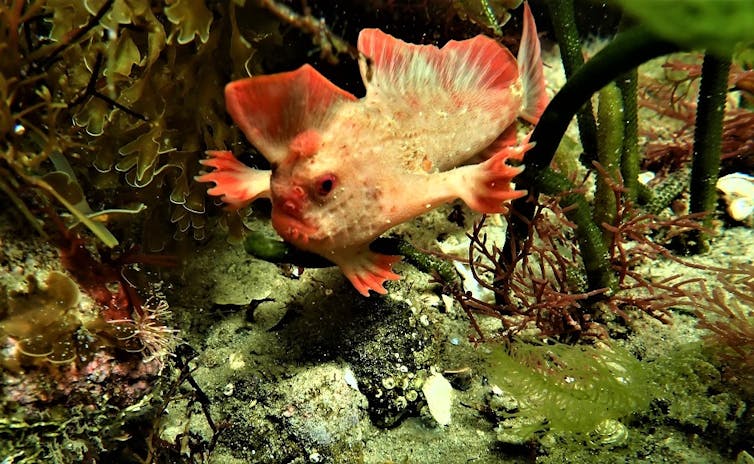
The red handfish aren’t Australia’s only handfish, with the southeast of the continent home to 14 different species.
One, the Ziebell’s handfish, lives deeper than the red handfish and we know even less about its conservation status. Another, the spotted handfish, lives in the Derwent estuary and nearby, with a population of fewer than 3,000 individuals.
Both of these species, along with the red handfish, are critically endangered.

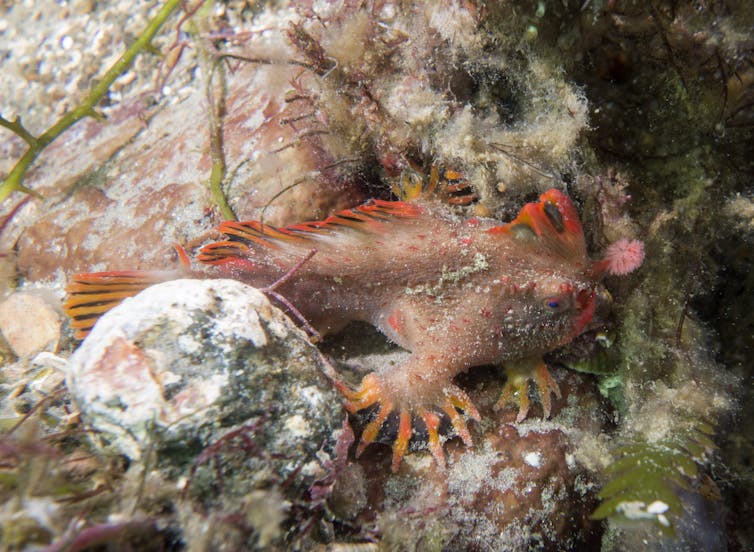
How We’re Protecting Them
Recent government funding will help build resilience against threats to wild red handfish populations. This conservation effort includes re-building wild populations through a captive-rearing and release program known as “head-starting”.
This strategy involves collecting eggs from the wild, and nurturing the young in captivity. There, they have unlimited food, and they’re protected from predators and harsh conditions.
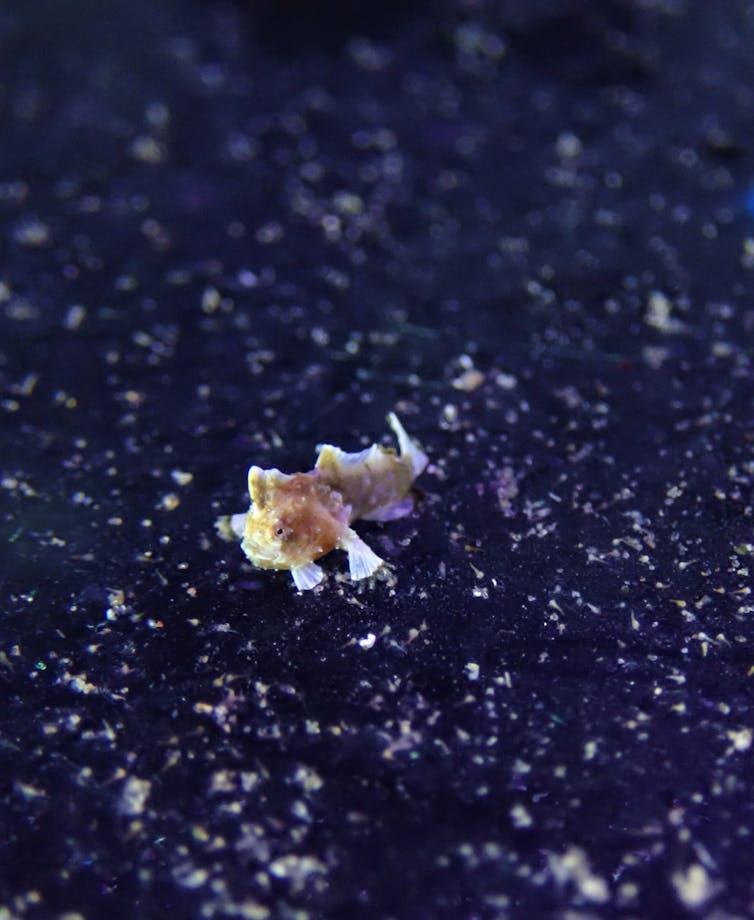
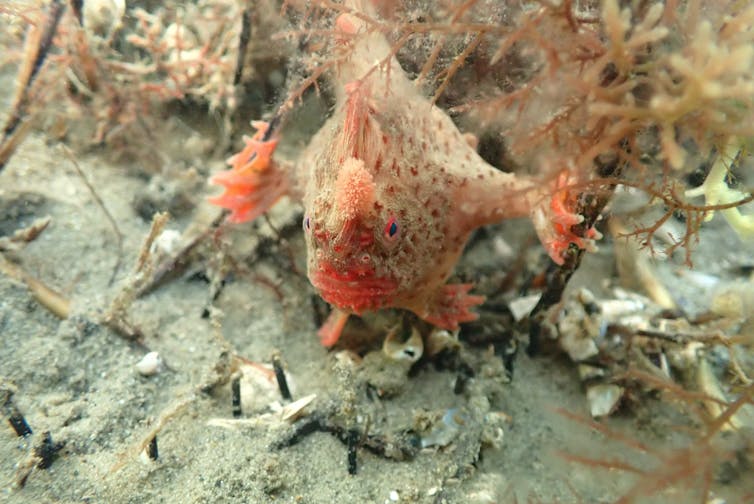
Once big enough, handfish are released back into the wild, and monitored through dive surveys which identify individual fish through their unique pattern of spots, similar to the way we use fingerprints.
As well as using this finger-printing technique, we’re also using ultra-sound to help us identify fish gender, which we’re otherwise unable to do by sight alone. This information will help us implement a captive-breeding program so we can continue our re-wilding program, and will also allow us to establish a captive insurance population.
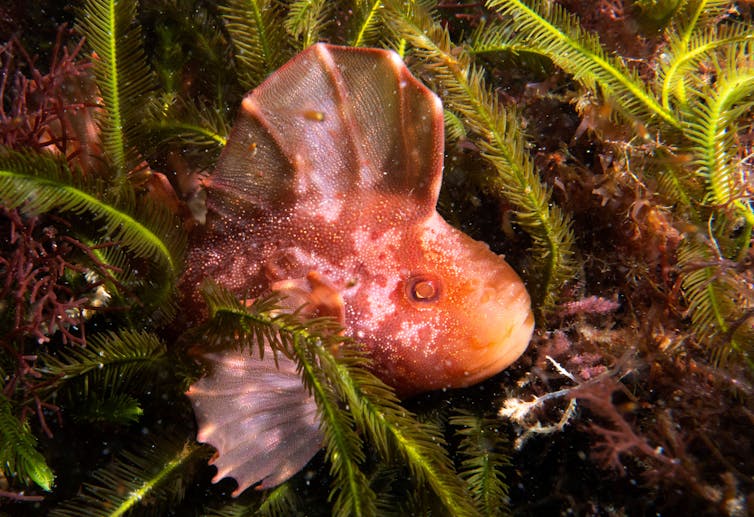
We’re also working on restoring the fish’s habitat and mitigating direct disturbances through a SCUBA diver/snorkeller education and awareness program, called Handfish Guardians.
Early habitat restoration efforts have included working with divers to remove urchins, but we now plan to couple this with seaweed restoration trials. Through these efforts, researchers hope to halt the decline of red handfish.
But to truly safeguard this species from extinction and increase their numbers, we need longer-term efforts. This includes ongoing mitigation of urban impacts and restoration of ecosystem balance that can only be achieved through improved habitat management.![]()
John Turnbull, Postdoctoral Research Associate, UNSW Sydney and Jemina Stuart-Smith, Research Fellow, University of Tasmania
This article is republished from The Conversation under a Creative Commons license. Read the original article.
Was Tricia the elephant happy? Experts on the ethics of keeping such big, roaming creatures in captivity
Jessica Turner, University of Adelaide and Alexandra Whittaker, University of AdelaideThe beloved Asian elephant Tricia died at Perth Zoo this month at the ripe old age of 65, making her one of the world’s oldest elephants.
Tricia was born in 1957 and arrived at Perth Zoo in 1963 from Vietnam. Her keeper described her as expressive, playful, and mischievous.
Tricia’s death has led to an outpouring of grief in Perth, especially among zookeepers and her fellow elephants, Putra Mas and Permai. But it has also sparked renewed debate about the ethics of keeping such long-lived, wandering animals in zoos for decades.
This is an important topic to debate as, historically, elephant welfare in captivity has been poor. So are elephants generally happy and safe in enclosures today?
The Challenges Of Keeping Elephants Captive
Animal welfare, as a concept, is complex and evolving. In broad strokes, welfare is defined as an animal’s ability to avoid suffering and sustain fitness. This requires human carers to not only provide for physical needs, but mental ones.
But animal welfare wasn’t always a priority for captive elephants. A notorious example is elephants being held captive in circuses. These elephants were separated from their mothers at an early age for training, confined for long periods and moved improperly in flatbeds and box cars from place to place.
Promoting good welfare for elephants in captivity is difficult due to their larger size, which requires greater resources such as water, space and up to 150 kilograms of food daily.
Satisfying their space and exercise needs in a captive environment is likely impossible. In the wild, elephants can roam great distances – up to 195km in a day - and are continually on the move.
These animals also have highly developed cognitive abilities, rivalling those of primates. For example, elephants can manufacture and use tools, such as manipulating and stripping branches to swat insects.
Elephants have a playful side. They splash water and mud or, in dry periods, use their trunks to entangle the trunks of others under the shade of a tree.
Various accounts suggest they can also show compassion, be cooperative, recognise themselves in a mirror, and demonstrate altruism.
They also demonstrate strong social bonds with other elephants. Emerging evidence suggests grief and comfort are displayed upon the death of a bonded family member. Management practices that disrupt these bonds lead to suffering.
Tricia became the foster mother of three elephant calves who came to Perth Zoo. Tragically in 2007, one of the elephants was euthanised due to health complications. Tricia grieved this loss for a year.
Animal Welfare In Modern Zoos
Modern Australian zoos have made animal welfare a top priority. Some key considerations in assessing welfare are the complexity of the enclosure, a varied and species-appropriate diet, behavioural enrichment and regular heath care.
Carers also keep an eye out for behaviours suggestive of fear, stress, and anxiety, such as pacing, aggression, and self-harm.
Perhaps one of the best examples of the progress of zoological parks is Tricia herself. The captivity conditions in her early days were poor, by today’s standards.
She was originally housed in a concrete enclosure. Tricia was moved to a new enclosure in 1986 that included a new barn and pool.
The current elephant enclosure at Perth Zoo has tripled in size and contains a swimming pool, mud wallow, trees, scratching posts, and a heated barn with sand floors and sleeping mounds.
Various activities aimed at improving her life quality were also available in the form of zoo walks and painting – an extension of drawing and scribbling elephants do in the wild.
As a reader you may be thinking that, sure, this sounds nice, but how could it really compare to the freedoms and space of the wild?
Unfortunately achieving good welfare in the wild is rarely a given either. Wild populations of Asian elephants are listed as endangered, with a rapidly decreasing population and a long time between generations of 22-25 years.
They face many threats such as urban encroachment, hunting and habitat decline. They’re also viewed as pests by farmers and timber loggers.
Today’s captive elephants are often part of breeding and conservation programs aimed at Asian elephants. While captive breeding programs are unlikely to make significant contributions to wild population numbers, highlighting their plight in the wild to visitors can promote the conservation message.
Some zoos also use their experience to become involved in conservation efforts in the elephants’ home countries, where success is more likely. As an example, Australia Zoo has invested funds in an Indonesian elephant hospital to rehabilitate injured animals.
The Future Of Captive Elephants
Australian zoos are recognising the challenges of keeping certain species within their walls. We’re seeing a shift away from actively adding or replacing exotic species, in favour of redeveloping larger and more complex enclosures for remaining animals. Priority is given to species part of conservation and breeding programs.
So can we re-introduce elephants who have spent most of their lives zoos, back into the wild? This would be unethical, due to their reliance on generational knowledge to find food, water and migration routes.
But there is increasing recognition of the need for stable social groups, and a resolve to house Asian elephants across fewer locations that can provide the best conditions for them.
For example, Perth Zoo is searching for a new home for their two remaining elephants where they can be integrated into a larger herd. And Melbourne zoo will house their herd at Werribee Open Range Zoo, which will expand to 21 hectares available for roaming.
Only time will tell what the future holds for elephants in zoos. But we should take heart in the progress that has been made to elephant housing and care over the last 50 years, as well as a greater recognition of any emerging issues, ensuring robust debate.![]()
Jessica Turner, PhD Candidate, University of Adelaide and Alexandra Whittaker, Senior Lecturer, University of Adelaide
This article is republished from The Conversation under a Creative Commons license. Read the original article.
Pittwater Reserves: Histories + Notes + Pictorial Walks
A History Of The Campaign For Preservation Of The Warriewood Escarpment by David Palmer OAM and Angus Gordon OAM
America Bay Track Walk - photos by Joe Mills
An Aquatic June: North Narrabeen - Turimetta - Collaroy photos by Joe Mills
Angophora Reserve - Angophora Reserve Flowers
Annie Wyatt Reserve - A Pictorial
Avalon's Village Green: Avalon Park Becomes Dunbar Park - Some History + Toongari Reserve and Catalpa Reserve
Bairne Walking Track Ku-Ring-Gai Chase NP by Kevin Murray
Bangalley Headland Bangalley Mid Winter
Banksias of Pittwater
Barrenjoey Boathouse In Governor Phillip Park Part Of Our Community For 75 Years: Photos From The Collection Of Russell Walton, Son Of Victor Walton
Barrenjoey Headland: Spring flowers
Barrenjoey Headland after fire
Bayview Baths
Bayview Wetlands
Beeby Park
Bilgola Beach
Botham Beach by Barbara Davies
Bungan Beach Bush Care
Careel Bay Saltmarsh plants
Careel Bay Birds
Careel Bay Clean Up day
Careel Bay Playing Fields History and Current
Careel Creek
Careel Creek - If you rebuild it they will come
Centre trail in Ku-ring-gai Chase National Park
Chiltern Track- Ingleside by Marita Macrae
Clareville Beach
Clareville/Long Beach Reserve + some History
Coastal Stability Series: Cabbage Tree Bay To Barrenjoey To Observation Point by John Illingsworth, Pittwater Pathways, and Dr. Peter Mitchell OAM
Cowan Track by Kevin Murray
Curl Curl To Freshwater Walk: October 2021 by Kevin Murray and Joe Mills
Currawong and Palm Beach Views - Winter 2018
Currawong-Mackerel-The Basin A Stroll In Early November 2021 - photos by Selena Griffith
Currawong State Park Currawong Beach + Currawong Creek
Deep Creek To Warriewood Walk photos by Joe Mills
Drone Gives A New View On Coastal Stability; Bungan: Bungan Headland To Newport Beach + Bilgola: North Newport Beach To Avalon + Bangalley: Avalon Headland To Palm Beach
Duck Holes: McCarrs Creek by Joe Mills
Dunbar Park - Some History + Toongari Reserve and Catalpa Reserve
Dundundra Falls Reserve: August 2020 photos by Selena Griffith - Listed in 1935
Elsie Track, Scotland Island
Elvina Track in Late Winter 2019 by Penny Gleen
Elvina Bay Walking Track: Spring 2020 photos by Joe Mills
Elvina Bay-Lovett Bay Loop Spring 2020 by Kevin Murray and Joe Mills
Fern Creek - Ingleside Escarpment To Warriewood Walk + Some History photos by Joe Mills
Iluka Park, Woorak Park, Pittwater Park, Sand Point Reserve, Snapperman Beach Reserve - Palm Beach: Some History
Ingleside
Ingleside Wildflowers August 2013
Irrawong - Ingleside Escarpment Trail Walk Spring 2020 photos by Joe Mills
Irrawong - Mullet Creek Restoration
Katandra Bushland Sanctuary - Ingleside
Lucinda Park, Palm Beach: Some History + 2022 Pictures
McCarrs Creek
McCarr's Creek to Church Point to Bayview Waterfront Path
McKay Reserve
Mona Vale Beach - A Stroll Along, Spring 2021 by Kevin Murray
Mona Vale Headland, Basin and Beach Restoration
Mount Murray Anderson Walking Track by Kevin Murray and Joe Mills
Mullet Creek
Narrabeen Creek
Narrabeen Lagoon Catchment: Past Notes Present Photos by Margaret Woods
Narrabeen Lagoon State Park
Narrabeen Lagoon State Park Expansion
Narrabeen Rockshelf Aquatic Reserve
Nerang Track, Terrey Hills by Bea Pierce
Newport Bushlink - the Crown of the Hill Linked Reserves
Newport Community Garden - Woolcott Reserve
Newport to Bilgola Bushlink 'From The Crown To The Sea' Paths: Founded In 1956 - A Tip and Quarry Becomes Green Space For People and Wildlife
Pittwater spring: waterbirds return to Wetlands
Pittwater's Lone Rangers - 120 Years of Ku-Ring-Gai Chase and the Men of Flowers Inspired by Eccleston Du Faur
Pittwater's Parallel Estuary - The Cowan 'Creek
Resolute Track at West Head by Kevin Murray
Resolute Track Stroll by Joe Mills
Riddle Reserve, Bayview
Salvation Loop Trail, Ku-Ring-Gai Chase National Park- Spring 2020 - by Selena Griffith
Stapleton Reserve
Stapleton Park Reserve In Spring 2020: An Urban Ark Of Plants Found Nowhere Else
The Chiltern Track
The Resolute Beach Loop Track At West Head In Ku-Ring-Gai Chase National Park by Kevin Murray
Towlers Bay Walking Track by Joe Mills
Trafalgar Square, Newport: A 'Commons' Park Dedicated By Private Landholders - The Green Heart Of This Community
Tranquil Turimetta Beach, April 2022 by Joe Mills
Turimetta Beach Reserve by Joe Mills, Bea Pierce and Lesley
Turimetta Beach Reserve: Old & New Images (by Kevin Murray) + Some History
Turimetta Headland
Warriewood Wetlands and Irrawong Reserve
Whale Beach Ocean Reserve: 'The Strand' - Some History On Another Great Protected Pittwater Reserve
Wilshire Park Palm Beach: Some History + Photos From May 2022
Winji Jimmi - Water Maze

New Shorebirds WingThing For Youngsters Available To Download
A Shorebirds WingThing educational brochure for kids (A5) helps children learn about shorebirds, their life and journey. The 2021 revised brochure version was published in February 2021 and is available now. You can download a file copy here.
If you would like a free print copy of this brochure, please send a self-addressed envelope with A$1.10 postage (or larger if you would like it unfolded) affixed to: BirdLife Australia, Shorebird WingThing Request, 2-05Shorebird WingThing/60 Leicester St, Carlton VIC 3053.

 Shorebird Identification Booklet
Shorebird Identification Booklet
The Migratory Shorebird Program has just released the third edition of its hugely popular Shorebird Identification Booklet. The team has thoroughly revised and updated this pocket-sized companion for all shorebird counters and interested birders, with lots of useful information on our most common shorebirds, key identification features, sighting distribution maps and short articles on some of BirdLife’s shorebird activities.
The booklet can be downloaded here in PDF file format: http://www.birdlife.org.au/documents/Shorebird_ID_Booklet_V3.pdf
Paper copies can be ordered as well, see http://www.birdlife.org.au/projects/shorebirds-2020/counter-resources for details.
Download BirdLife Australia's children’s education kit to help them learn more about our wading birdlife
Shorebirds are a group of wading birds that can be found feeding on swamps, tidal mudflats, estuaries, beaches and open country. For many people, shorebirds are just those brown birds feeding a long way out on the mud but they are actually a remarkably diverse collection of birds including stilts, sandpipers, snipe, curlews, godwits, plovers and oystercatchers. Each species is superbly adapted to suit its preferred habitat. The Red-necked Stint is as small as a sparrow, with relatively short legs and bill that it pecks food from the surface of the mud with, whereas the Eastern Curlew is over two feet long with a exceptionally long legs and a massively curved beak that it thrusts deep down into the mud to pull out crabs, worms and other creatures hidden below the surface.
Some shorebirds are fairly drab in plumage, especially when they are visiting Australia in their non-breeding season, but when they migrate to their Arctic nesting grounds, they develop a vibrant flush of bright colours to attract a mate. We have 37 types of shorebirds that annually migrate to Australia on some of the most lengthy and arduous journeys in the animal kingdom, but there are also 18 shorebirds that call Australia home all year round.
What all our shorebirds have in common—be they large or small, seasoned traveller or homebody, brightly coloured or in muted tones—is that each species needs adequate safe areas where they can successfully feed and breed.
The National Shorebird Monitoring Program is managed and supported by BirdLife Australia.
This project is supported by Glenelg Hopkins Catchment Management Authority and Hunter Local Land Services through funding from the Australian Government’s National Landcare Program. Funding from Helen Macpherson Smith Trust and Port Phillip Bay Fund is acknowledged.
The National Shorebird Monitoring Program is made possible with the help of over 1,600 volunteers working in coastal and inland habitats all over Australia.
The National Shorebird Monitoring program (started as the Shorebirds 2020 project initiated to re-invigorate monitoring around Australia) is raising awareness of how incredible shorebirds are, and actively engaging the community to participate in gathering information needed to conserve shorebirds.
In the short term, the destruction of tidal ecosystems will need to be stopped, and our program is designed to strengthen the case for protecting these important habitats.
In the long term, there will be a need to mitigate against the likely effects of climate change on a species that travels across the entire range of latitudes where impacts are likely.
The identification and protection of critical areas for shorebirds will need to continue in order to guard against the potential threats associated with habitats in close proximity to nearly half the human population.
Here in Australia, the place where these birds grow up and spend most of their lives, continued monitoring is necessary to inform the best management practice to maintain shorebird populations.
BirdLife Australia believe that we can help secure a brighter future for these remarkable birds by educating stakeholders, gathering information on how and why shorebird populations are changing, and working to grow the community of people who care about shorebirds.
To find out more visit: http://www.birdlife.org.au/projects/shorebirds-2020/shorebirds-2020-program
Aussie Bread Tags Collection Points

COVID-19 Oral Treatment Eligibility Expanded From July 11 2022
- 70 years and older, regardless of risk factors and with or without symptoms
- 50 years or older with 2 additional risk factors
- Aboriginal or Torres Strait Islander, 30 years or older and with 2 additional risk factors.
- living in residential aged care
- living with disability with multiple conditions and/or frailty (but not limited to living in supported accommodation)
- neurological conditions like stroke or dementia and demyelinating conditions e.g. multiple sclerosis, Guillain-Barre Syndrome
- chronic respiratory conditions including COPD, moderate or severe asthma
- obesity or diabetes (type I or II requiring medication)
- heart failure, coronary artery disease, cardiomyopathies
- kidney failure or cirrhosis
- living remotely with reduced access to higher level healthcare.
- blood cancer or some red blood cell disorders (thalassemia, sickle cell disease)
- transplant recipient
- primary or acquired (HIV) immunodeficiency
- chemotherapy or whole-body radiotherapy in the last 3 months
- high dose corticosteroids or pulse corticosteroid therapy in the last 3 months
- immunosuppressive treatments in the last 3 months
- rituximab in the last 12 months
- cerebral palsy or Down Syndrome
- congenital heart disease
- living with disability with multiple conditions and/or frailty.
- Find out more about Paxlovid and Lagevrio.
- PBAC Web Outcome Statement.
Chief Medical Officer’s Statement On Standard Of Care On COVID-19 Oral Antiviral Treatments In Residential Aged Care Facilities
- discussing consent options for potential treatment with the aged care resident and relevant decision-maker;
- identifying eligible aged care residents in RACF clinical management systems;
- discussing potential medicine administration with the aged care resident’s prescriber, GP, nurse practitioner and facility clinical care staff; and
- ensuring a dispensing pathway is established with community pharmacy.
Older People Must Consent: Award Changes Affect Home Care Packages

NSW Seniors Festival Grants Now Open
- NSW Seniors Christmas Concert: 13 December 2022
- NSW Seniors Festival: Wednesday 1 February to Sunday 12 February 2023
- Premier’s Gala Concerts: Thursday 2 and Friday 3 February 2023
- NSW Seniors Festival Expo: Thursday 2 and Friday 3 February 2023
UNSW Breathe Study
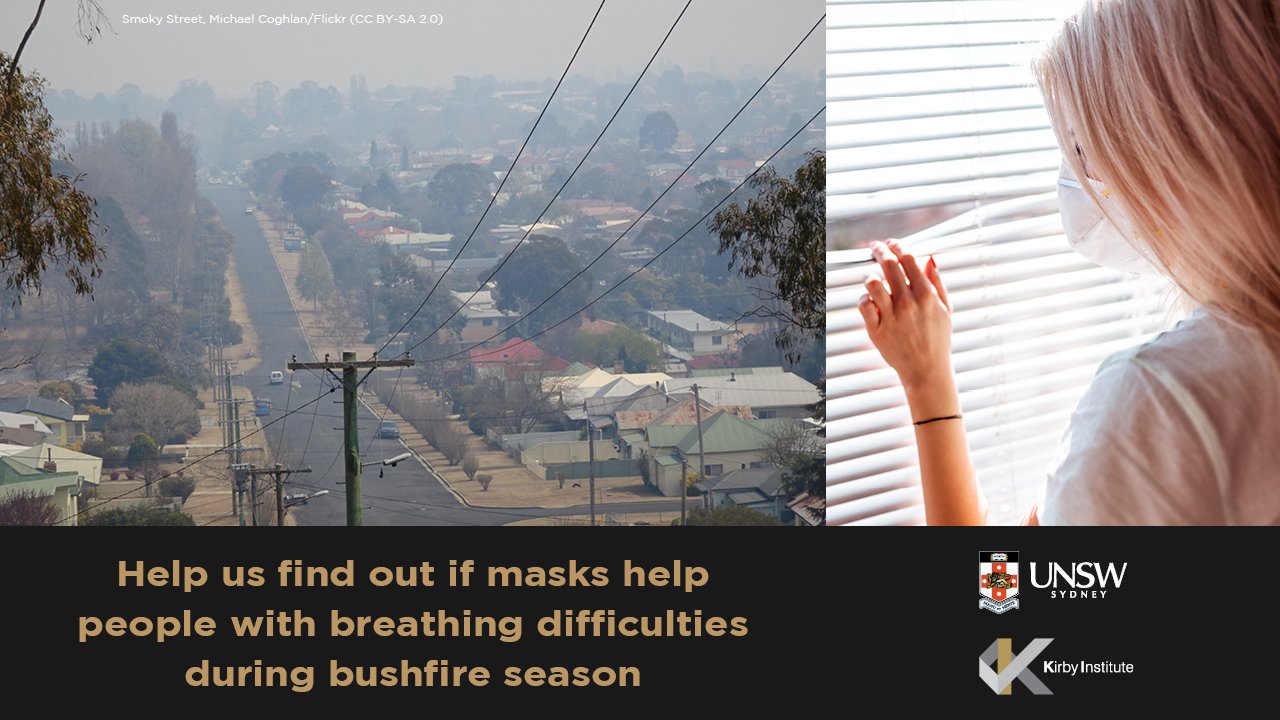
AvPals Term 3 2022: Training At Newport
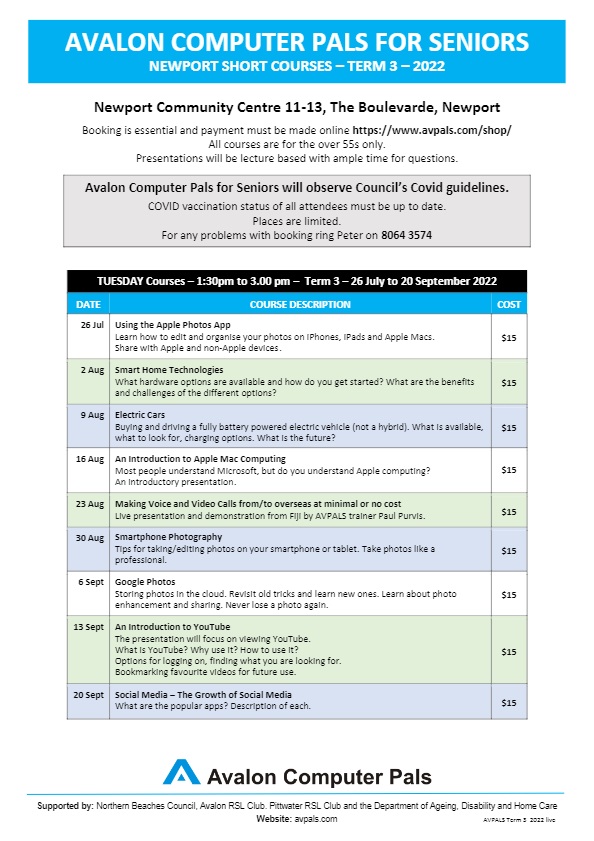
Rejoice

Virtual Reality App Trial Shown To Reduce Common Phobias

Hip flexors get weak when we sit too much – but simple stretches and strengthening exercises can leave you less stiff

I am sure you’ve been told you should stand up and move away from your work stations or use a standing desk where possible. One of the major benefits of doing this is to activate and stretch the hip flexor area.
But what are the hip flexors, and why are they so important – and what happens if we let them get weak and stiff?
What Are Hip Flexors?
Hip flexors are the powerful muscles located at the front of your hip. They include:
the psoas major and psoas minor, which connect the femur to the spine, and
the iliacus, which runs from the pelvis to the femur.

Hip flexors are activated when you draw your knee towards your chest. They are important for walking and running.
They’re also very important in sport, as they flex the hip, and work with the quadraceps to extend your knee when you need to sprint or kick.
An athlete with an injured hip flexor will have great difficulty running or kicking.
The hip flexors also work with the glutes and other muscles of the torso to stabilise the spine – which makes them important for posture.
What Happens When They’re Weak Or Stiff?
Weak hip flexors may make climbing stairs, running or even walking on a flat surface difficult or painful. It can also can cause other muscles in the area to work hard to compensate. This changes your gait (the way you walk).
Tight hip flexors can make walking and standing difficult because they pull your spine down. This makes you lean forward, which puts strain on your lower back muscles (which work in opposition to keep you upright).
An imbalance between the hip flexors and the opposing muscles pulling your torso in the opposite direction can lead to lower back pain.
Tight hip flexors can reduce the range of motion of the knee. This can result in a stiff knee gait, where the knee doesn’t bend as much as it should. After some time, it can lead to knee pain.
All in all, weak or tight hip flexors can cause your joints or muscles to function in an abnormal way and this can lead to injury.
How Can I Keep My Hip Flexors In Good Shape?
As with all muscles, hip flexors lose strength and mass through lack of exercise.
Another contributing factor is sitting for long periods, which keeps the psoas muscles relaxed in a shortened position for a long time.
This is particularly important for those of us who spend long periods seated at a work desk, and is why many health-care professionals advise taking a break from sitting or opting for a standing desk.
Hip flexors should be kept both flexible and strong.
Stretching exercises to improve flexibility of the hip flexors include:
lying on your side and pulling one foot to your butt, while keeping your knees close together
stepping forward into a lunge, going as low as you can while keeping your torso upright.
Both should cause you to feel the stretch along the front of your upper thigh.
Stretches should be held for about 30 seconds and repeated two to three times each side. They can be done daily or at least three times weekly to gradually improve flexibility.
If you work at a desk for long periods, try to do some stretching in short breaks during the day.
To strengthen the hip flexors you can lie face up on the floor and do straight leg raises (one leg at a time), while keeping your arms on the floor alongside your torso.
This takes the strain off your lower back and is easier to do one at a time to start with.
Another great hip flexor exercise is called mountain climbers. For this exercise, take the push-up position and bring one leg at a time to your chest. This can be done slowly to begin with, or quickly as you gain strength and fitness.
Strong And Flexible Hip Flexors
So, hip flexors are relatively easy to train. If you are doing any exercise at all you are likely already keeping your hip flexors strong and flexible.
If you are not exercising, the exercises mentioned earlier will give you a place to start.
Combine these with gentle stretches of other muscle groups and some aerobic exercise like walking, jogging, cycling or swimming.
Remember to start gently and gradually increase the intensity, duration and frequency of sessions.
Failure to look after your hip flexors can lead to an altered gait, posture problems, injury and back pain.![]()
Andrew Lavender, Senior Lecturer, Institute of Health and Wellbeing, Federation University Australia
This article is republished from The Conversation under a Creative Commons license. Read the original article.
Kamahl Lights Up Christmas In July With Record Audience

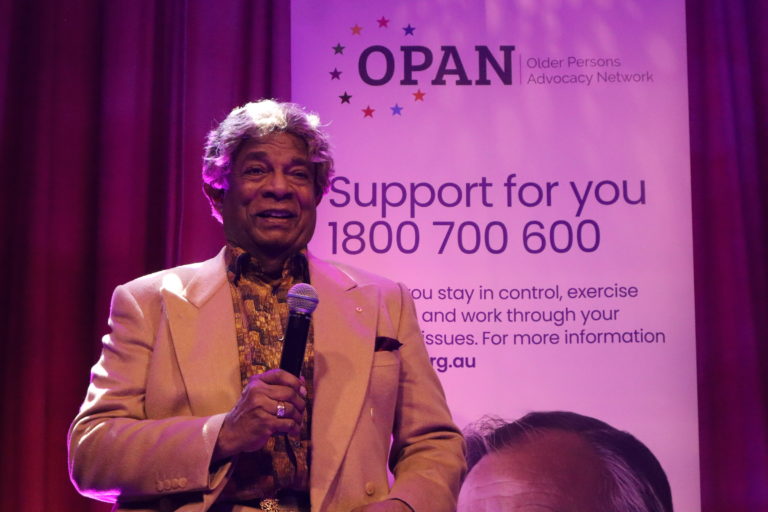
Join COTA NSW President To Discuss Older People Starting Businesses

AMA And RACGP Call For Urgent Reinstatement Of COVID-19 Telehealth Items
‘Will You Remember Being On This Show?’ New Series Of You Can’t Ask That Released
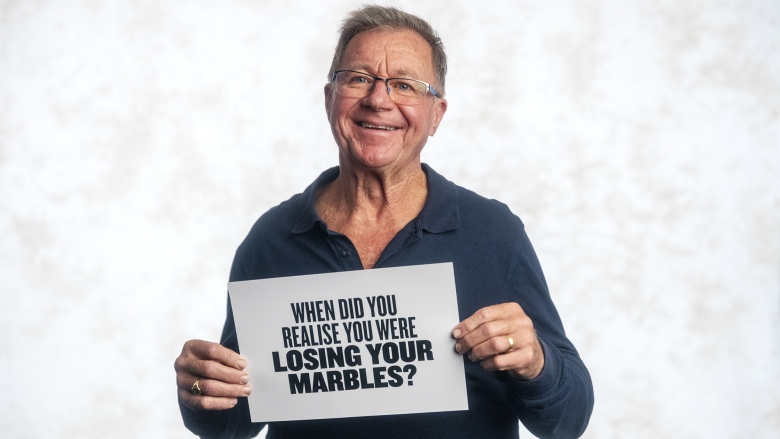
Revealing One Of The Driving Forces Of Alzheimer's
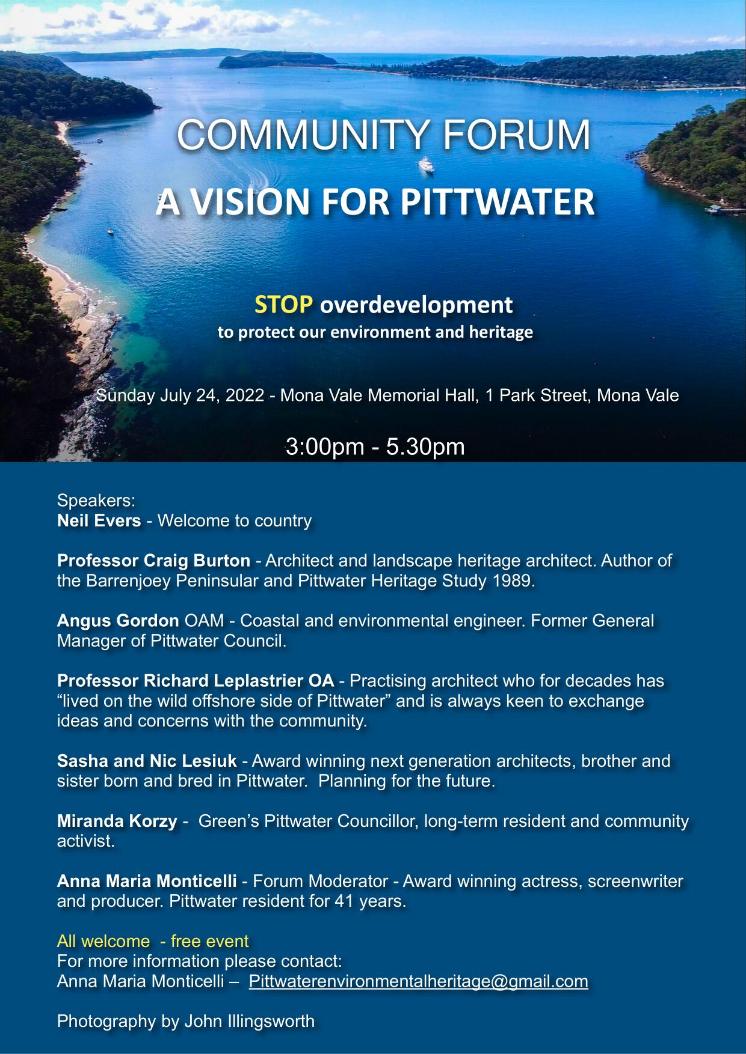

Australians lost $2b to fraud in 2021. This figure should sound alarm bells for the future

Australian consumers and businesses lost more than A$2 billion to scams in 2021, according to the Australian Competition and Consumer Commission’s (ACCC) annual Targeting Scams report released on Monday. This figure should sounds alarm bells – it’s more than double the $851 million reported lost in 2020.
The increase in losses was primarily driven by a doubling of investment fraud losses, from $328 million to $701 million, and a substantial increase in payment redirection fraud, from $128 million to $227 million. Scamwatch alone received more than 286,000 reports.
So what does the latest report tell us about the current state of play for fraud in Australia? And perhaps more importantly, what can be done?
The Rise Of Crypto Scams
Cryptocurrencies have played a major role in fraud losses this year. They’re largely responsible for the surge in investment fraud losses, with many victims being persuaded to invest their funds in fake or non-existent crypto schemes.
The request to invest funds in a crypto scheme raises fewer red flags than a request to directly send money to someone. In the former, the victim believes they’re potentially making genuine returns.

Cryptocurrencies have become the most popular payment method across all fraud types. This is likely due to the difficulty of tracking crypto payments.
Cryptocurrency is also having a significant impact on romance fraud. Romance fraud itself appears steady – with victims reporting $142 million lost in 2021, compared to $131 million in 2020.
However, offenders are increasingly using these fake online relationships as a recruitment mechanism for attracting investments in fraudulent crypto schemes. This is known as “romance baiting” or “cryptorom”.
Who Are The Victims?
Research indicates all demographics are vulnerable to fraud, but not all are equally vulnerable. 2021 saw increased losses for older people, Indigenous Australians, people from culturally and linguistically diverse (CALD) communities and those with a disability.
For example, people aged 65 and older reported $82 million lost, up from $38 million the year before. It’s clear the most vulnerable in society are being hugely impacted.
Businesses are also being decimated through payment redirection schemes, or “business email compromise fraud”. In these cases, offenders infiltrate businesses and intercept payments and invoices from customers and suppliers. This can result in severe financial losses, as seen in the real estate industry.
The Ongoing Impacts Of COVID
The COVID-19 pandemic has been a significant disruptor since March 2020. Lockdowns and isolation requirements have driven a global shift towards online activity. Cybercrime has flourished – and fraud is no exception.
The pandemic impacted fraud in several ways. There are COVID-themed frauds targeting Australians, with a focus on vaccines, personal protective equipment and contact tracing. There are also pet scams trying to capitalise on people’s desire to purchase furry, four-legged companions.
The pandemic also shifted the fraud profile of the Australian population. The continual state of anxiety that has characterised the past two-and-a-half years, coupled with financial and relational strain, has people worn-down.
This means fraud approaches that may not have worked prior to the pandemic are now more likely to succeed. And this provides a context to understanding the massive losses in 2021.
What Can We Expect Now?
Despite the magnitude of losses reported, the sad reality is very few of these reports will result in consumers getting their money back. Even fewer will result in a criminal justice outcome. This will leave most victims frustrated and angry with the legal system having not met their expectations.
Fraud poses distinct challenges for police and other agencies. Offenders don’t use their real identities and will often commit offences across multiple jurisdictions, making it difficult to catch and prosecute them.
Disruption and prevention are the key to making any inroads in reducing fraud losses. This is challenging work, and arguably more must be done given the recent escalation in losses.
A Collective Responsibility
It’s important to remember that behind the statistics are individuals who have lost money and, in many cases, suffered considerably. The impact of fraud isn’t restricted to financial loss; it reverberates across the physical, emotional and relational aspects of our lives.
Prevention advice for individuals is to remain vigilant, ask questions and do their own research. Having strong passwords and up-to-date software are important, but will do little to deter a motivated offender.
Fraud is largely a human problem. So we need to better understand the psychological techniques used by offenders and develop targeted ways to fight back.
It’s also time the government took fraud more seriously and invested resources and expertise into reducing losses to individuals, businesses and society at large. Australia currently has no current co-ordinated fraud strategy to mitigate, prevent or respond to losses.
There is a clear need to develop better education and prevention materials that account for the diversity in victimisation. Knowing that certain demographics are more likely to be victimised highlights the need to create resources tailored to these individuals.
The latest ACCC report should be an unmissable warning sign. On its current path, Australia is headed for even greater losses than the $2 billion mentioned above. At what point will we finally act?![]()
Cassandra Cross, Associate Dean (Learning & Teaching) Faculty of Creative Industries, Education and Social Justice, Queensland University of Technology
This article is republished from The Conversation under a Creative Commons license. Read the original article.
Gotcha4Life Cup 2022: Player Mental Fitness
Published July 14, 2022
Gus Worland, Gotcha4Life Founder chats to Manly Sea Eagles players Ben and Tom Trbojevic and Sydney Roosters Captain James Tedesco and player Sam Verrills about what it means to be mentally fit on and off the field.
NASA Reveals Webb Telescope’s First Images Of Unseen Universe: Details Of These Pictures
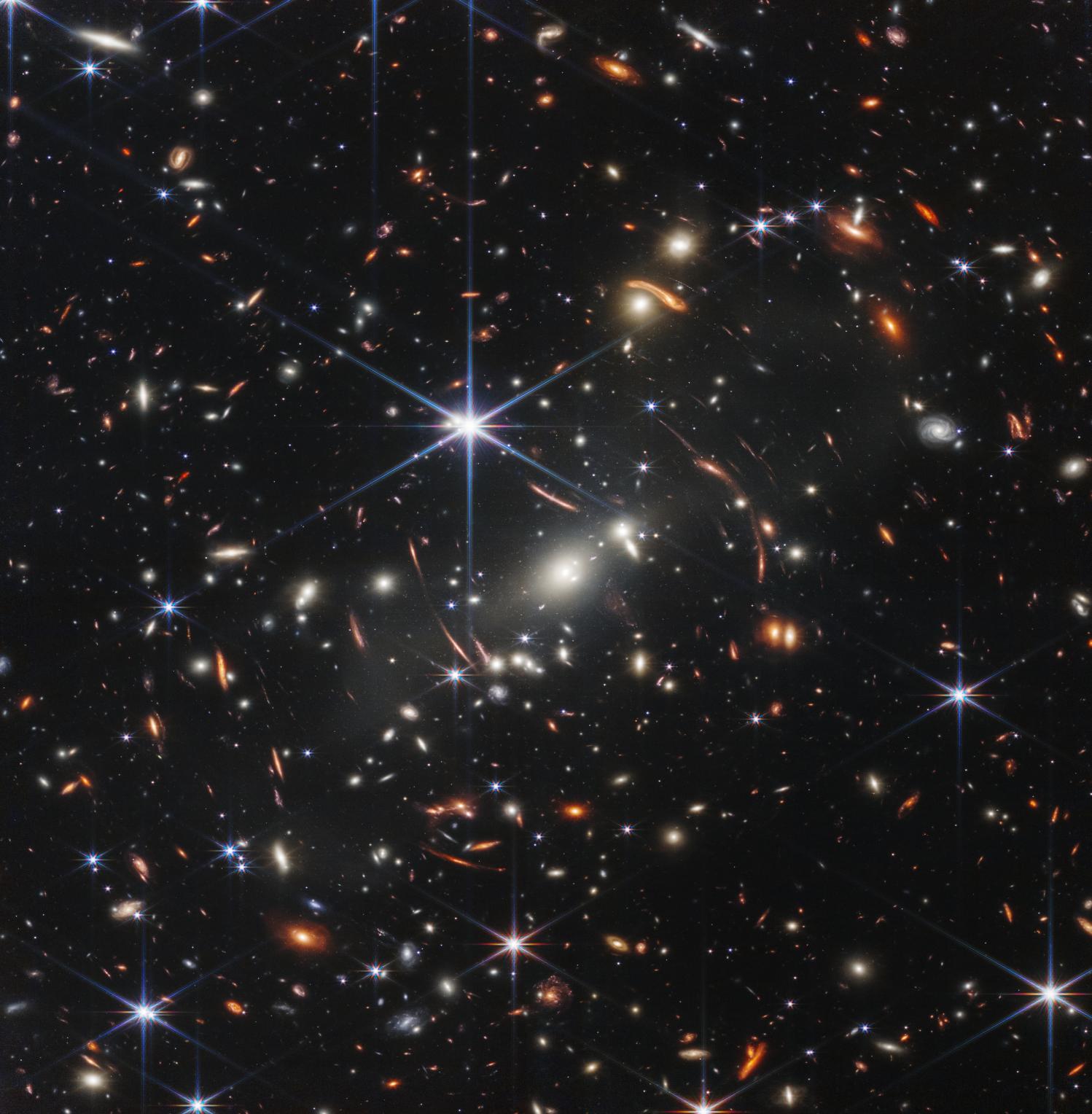
Image: NASA’s James Webb Space Telescope has produced the deepest and sharpest infrared image of the distant universe to date. Known as Webb’s First Deep Field, this image of galaxy cluster SMACS 0723 is overflowing with detail. Thousands of galaxies – including the faintest objects ever observed in the infrared – have appeared in Webb’s view for the first time. This slice of the vast universe covers a patch of sky approximately the size of a grain of sand held at arm’s length by someone on the ground.
President Joe Biden unveiled this image during a White House event Monday, July 11.
Credits: NASA, ESA, CSA, and STScI
June 12, 2022 - US Time - June 13, 2022 AEST
The dawn of a new era in astronomy is here as the world gets its first look at the full capabilities of NASA’s James Webb Space Telescope, a partnership with ESA (European Space Agency) and CSA (Canadian Space Agency).
The full set of the telescope’s first full-colour images and spectroscopic data, which uncover a collection of cosmic features elusive until now, released Tuesday, are available at:
https://www.nasa.gov/webbfirstimages
“Today, we present humanity with a ground-breaking new view of the cosmos from the James Webb Space Telescope – a view the world has never seen before,” said NASA Administrator Bill Nelson. “These images, including the deepest infrared view of our universe that has ever been taken, show us how Webb will help to uncover the answers to questions we don’t even yet know to ask; questions that will help us better understand our universe and humanity’s place within it.
“The Webb team’s incredible success is a reflection of what NASA does best. We take dreams and turn them into reality for the benefit of humanity. I can’t wait to see the discoveries that we uncover – the team is just getting started!”

NASA Administrator Bill Nelson delivers remarks ahead of the release of the first images from NASA’s James Webb Space Telescope, Tuesday, July 12, 2022, at NASA’s Goddard Space Flight Center in Greenbelt, Md. The first full-color images and spectroscopic data from the James Webb Space Telescope, a partnership with ESA (European Space Agency) and the Canadian Space Agency (CSA), are a demonstration of the power of Webb as the telescope begins its science mission to unfold the infrared universe. Photo Credit: (NASA/Taylor Mickal)
NASA explores the unknown in space for the benefit of all, and Webb’s first observations tell the story of the hidden universe through every phase of cosmic history – from neighbouring planets outside our solar system, known as exoplanets, to the most distant observable galaxies in the early universe.
“This is a singular and historic moment,” said Thomas Zurbuchen, associate administrator for NASA’s Science Mission Directorate. “It took decades of drive and perseverance to get us here, and I am immensely proud of the Webb team. These first images show us how much we can accomplish when we come together behind a shared goal, to solve the cosmic mysteries that connect us all. It’s a stunning glimpse of the insights yet to come.”
“We are elated to celebrate this extraordinary day with the world,” said Greg Robinson, Webb program director at NASA Headquarters. “The beautiful diversity and incredible detail of the Webb telescope’s images and data will have a profound impact on our understanding of the universe and inspire us to dream big."
Webb’s first observations were selected by a group of representatives from NASA, ESA, CSA, and the Space Telescope Science Institute. They reveal the capabilities of all four of Webb’s state-of-the-art scientific instruments:
SMACS 0723: Webb has delivered the deepest and sharpest infrared image of the distant universe so far – and in only 12.5 hours. For a person standing on Earth looking up, the field of view for this new image, a colour composite of multiple exposures each about two hours long, is approximately the size of a grain of sand held at arm’s length. This deep field uses a lensing galaxy cluster to find some of the most distant galaxies ever detected. This image only scratches the surface of Webb’s capabilities in studying deep fields and tracing galaxies back to the beginning of cosmic time.
WASP-96b (spectrum): Webb’s detailed observation of this hot, puffy planet outside our solar system reveals the clear signature of water, along with evidence of haze and clouds that previous studies of this planet did not detect. With Webb’s first detection of water in the atmosphere of an exoplanet, it will now set out to study hundreds of other systems to understand what other planetary atmospheres are made of.
Southern Ring Nebula: This planetary nebula, an expanding cloud of gas that surrounds a dying star, is approximately 2,000 light years away. Here, Webb’s powerful infrared eyes bring a second dying star into full view for the first time. From birth to death as a planetary nebula, Webb can explore the expelling shells of dust and gas of aging stars that may one day become a new star or planet.
Stephan’s Quintet: Webb’s view of this compact group of galaxies, located in the constellation Pegasus, pierced through the shroud of dust surrounding the center of one galaxy, to reveal the velocity and composition of the gas near its supermassive black hole. Now, scientists can get a rare look, in unprecedented detail, at how interacting galaxies are triggering star formation in each other and how the gas in these galaxies is being disturbed.
Carina Nebula: Webb’s look at the ‘Cosmic Cliffs’ in the Carina Nebula unveils the earliest, rapid phases of star formation that were previously hidden. Looking at this star-forming region in the southern constellation Carina, as well as others like it, Webb can see newly forming stars and study the gas and dust that made them.
“Absolutely thrilling!” said John Mather, Webb senior project scientist at NASA’s Goddard Space Flight Center in Greenbelt, Maryland. “The equipment is working perfectly, and nature is full of surprising beauty. Congratulations and thanks to our worldwide teams that made it possible.”
The release of Webb’s first images and spectra kicks off the beginning of Webb’s science operations, where astronomers around the world will have their chance to observe anything from objects within our solar system to the early universe using Webb’s four instruments.
The James Webb Space Telescope launched Dec. 25, 2021, on an Ariane 5 rocket from Europe’s Spaceport in French Guiana, South America. After completing a complex deployment sequence in space, Webb underwent months of commissioning where its mirrors were aligned, and its instruments were calibrated to its space environment and prepared for science.
The James Webb Space Telescope is the world's premier space science observatory. Webb will solve mysteries in our solar system, look beyond to distant worlds around other stars and probe the mysterious structures and origins of our universe and our place in it.
NASA Headquarters oversees the mission for the agency’s Science Mission Directorate. NASA’s Goddard Space Flight Center in Greenbelt, Maryland, manages Webb for the agency and oversees work on the mission performed by the Space Telescope Science Institute, Northrop Grumman, and other mission partners. In addition to Goddard, several NASA centers contributed to the project, including the agency’s Johnson Space Center in Houston, Jet Propulsion Laboratory in Southern California, Marshall Space Flight Center in Huntsville, Alabama, Ames Research Center in California’s Silicon Valley, and others.
For a full array of Webb’s first images and spectra, including downloadable files, visit: https://webbtelescope.org/news/first-images
Details of the first images released run in the Park Bench Philosopher's Page this week, along with those images themselves. Information written by NASA, and Editor: Rob Garner
Be The Boss: I Want To Be A Ship's Captain
Have you ever thought about what you want to do once you're all grown up?
Commencing this Issue we'd like to share a few insights into all the careers youngsters and their older siblings have told us they'd like to do once they're 'BIG'. First off we begin with being a Ship's Captain - a job some of you may have a few ideas about through going sailing and being the Skipper of a crew of two or three.
Before we do though, it's important to note that a ship is a large vessel and differs from a boat in that a boat can be put on a ship, they are so big, whereas you could not really put a ship into a boat. Someone once told me that - so we probably all best remember it. One way to do that would be to think of those lifeboats you see on the decks of big ships - these fit onto a ship, and obviously would not be big enough for us to put the ship itself into them:
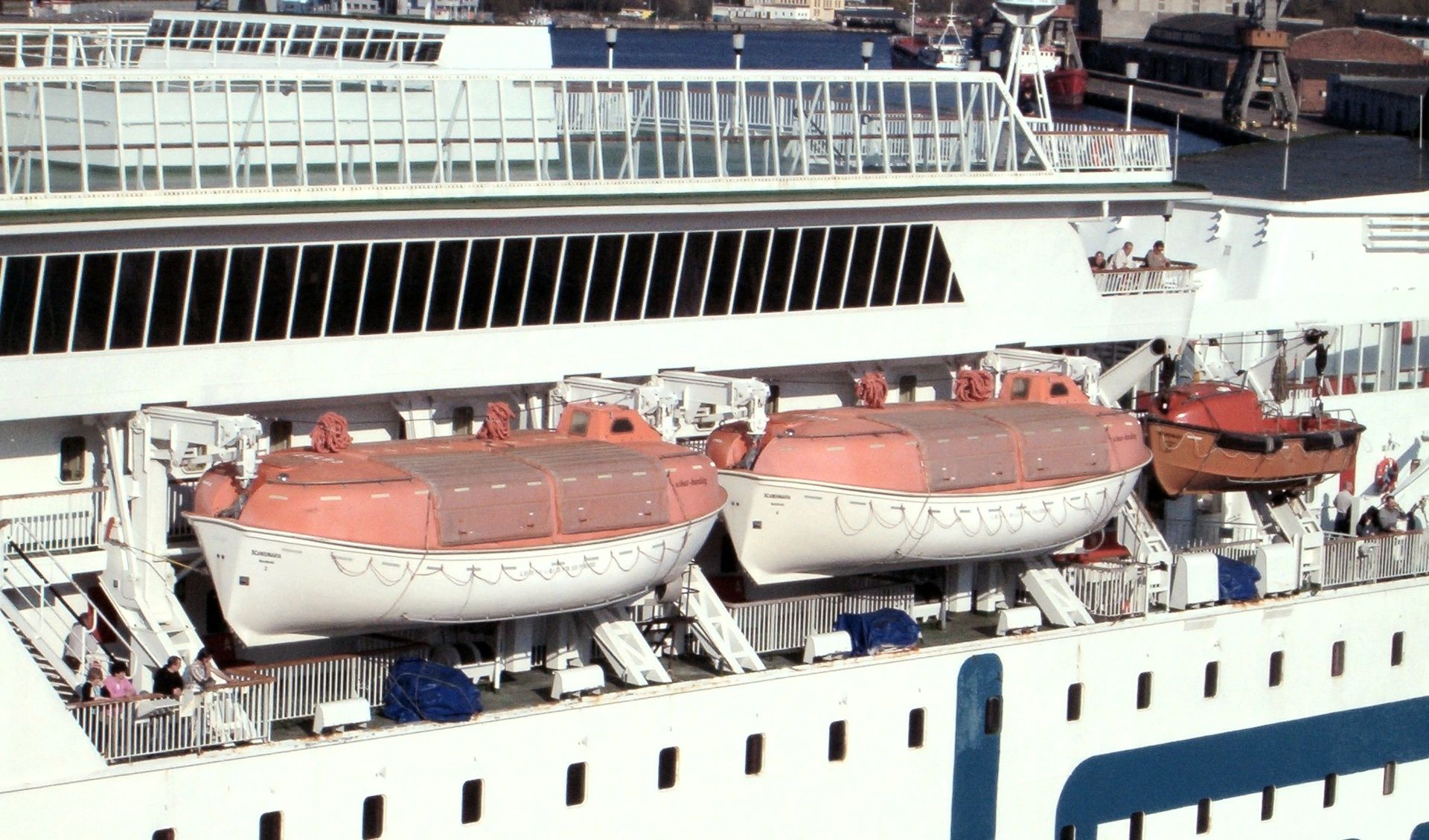
Partially enclosed lifeboats on a passenger liner - photo by Brosen
What Does A Ship's Captain Do?
A bit of research provided these answers:
The Ship Captain/Chief Mate is a licensed mariner who has overall command and control of the navigation, manoeuvring, cargo handling, stowage, communications and safe handling of the ship. He/She ensures that the ship complies with the local and international laws, as well as the port state and flag state policies. The Ship Captain/Chief Mate oversees operations and maintenance of all on-board equipment including machinery, engines and safety equipment and monitors the daily progress of the vessel to complete the voyage in a most efficient manner.
The Ship Captain/Chief Mate must adhere to the budget assigned for the voyage, and he/she is responsible for delivering the cargo safely. He/She oversees the crew in their tasks, monitoring the performance of all the crew and coordinating their work to ensure the voyage is completed. In the event of emergencies, the Ship Captain oversees search and rescue operations.
The Ship Captain/Chief Mate is an organised person with a strong eye for detail, and is astute to ascertain reasons why the vessel may not be seaworthy. He/She takes initiative and is able to work independently to resolve any problems effectively in the open sea. The Ship Captain/Chief Mate must pass the requirements of a colour vision test and must fulfil the requirements stipulated in the Standards of Training, Certification and Watchkeeping for Seafarers issued by the International Maritime Organisation.
Tasks:
- Assess reported defects and damage to cargo spaces, hatch covers and ballast tanks, and take appropriate action.
- Control adjustment of sail, stability and stress of ship.
- Coordinate search and rescue operations.
- Develop emergency and damage control plans, and handle emergency situations.
- Establish watch-keeping arrangements and procedures.
- Forecast weather and oceanographic conditions.
- Lead and manage the ship's crew.
- Maintain communications with relevant coastal states as per navigational passage.
- Manage carriage of dangerous goods.
- Manoeuvre and handle a ship in all conditions.
- Monitor and control compliance with legislative requirements and measures.
- Operate remote controls of propulsion plant and engineering systems and services.
- Organise and manage the provisions of medical care on board ships.
- Plan a voyage and conduct navigation.
- Plan and ensure safe loading, stowage, securing and care during the voyage and unloading of cargoes.
- Respond to navigational emergencies.
Another source of information found during doing our research tells us:
Ship captains tend to be predominantly enterprising individuals, which means that they are usually quite natural leaders who thrive at influencing and persuading others. They also tend to be realistic, which means that they often enjoy working outdoors or applying themselves to a hands-on project.
How Do You Become A Ship's Captain?
To be a ship captain requires several steps to gain appropriate education and experience relevant to the position. The training and licensing of maritime occupations is overseen by the International Maritime Organization, which regulates educational and licensing standards. Each organisation has a limited number of schools approved to train and prepare for the licensing exam. Qualifications for the licensing exam include earning a four year Bachelor of Science degree, with coursework in meteorology, navigation, and cargo management. After meeting these qualifications and passing a licensing exam, candidates may find work as a deck officer or third mate on board a ship.
The process of working up the ranks of the crew is strictly outlined in terms of time served as certain members of the crew. Once qualified to act as the third mate, a year of service is required to become the second mate. After becoming the second mate, another year of service, 13 weeks of classes, and the passing of multiple examinations are required to graduate to chief mate. And similarly, after becoming the chief mate, one more year of service is required to qualify for the master of vessels licensing, a vital step to becoming a ship captain.
The Navy (Royal Australian Navy) provides a second avenue in training to eventually become a ship captain, and often provides on-the-job training for positions that help you 'work your way up', such as officers, quartermasters, and ship operators. Training through the military typically requires a period of committed service and potential combat duties, following completion of the training period.
Beyond the basic outlined educational experience and licensing, becoming the captain of a ship also requires work experience and certain other licenses. A potential captain must be licensed to operate the particular size and type of boat they intend to supervise, and must have completed licensing in basic first aid and CPR training. Depending on the employer, they must also have logged a certain number of hours on a ship, and pass physical screenings.
Captains of ships typically have many years of experience in other roles before they assume the leadership position of captain. This helps them to build up their practical knowledge around the ship and understand how each crew member contributes to the smooth functioning of the ship when it sets sail. The best way to gain professional experience is by finding internships or volunteer positions while you're still at secondary school or university.
If you're in secondary school, your local community sailing clubs are places you can join to learn some hands-on experience. For university students, look for any extracurricular opportunities for boating. Alternatively, you may search for part-time job roles assisting a ship's captain as a crew member. Making the most of these opportunities can help to build your resume and knowledge while widening your 'industry network' - which is coming into contact with people who can share their knowledge with you.
Captain - Skipper
1 : the master of a ship especially : the master of a fishing, small trading, or pleasure boat. 2 : the captain or first pilot of an airplane. 3 : a person in a position of leadership especially : a baseball team's manager.
Coastal Pilot & Coast Waiter
Clearly there are lots of other maritime occupations you can think about as well. As a Coastal Pilot, you contribute to the safety of ships in particularly sensitive sea areas. To be qualified, the Australian Maritime Safety Authority (AMSA) need to verify your certificates. They also ask you to complete some additional qualifications.
You can find out more about that at: https://www.amsa.gov.au/qualifications-training/safety-and-navigation-training/how-become-coastal-pilot
As a Coast Waiter your work was defined as being a custom house officer who superintends the landing or shipping of goods for the coast trade.
Did you know that the house at the base of Barrenjoey Lighthouse and headland was actually originally the home of a local Coast Waiter? This is because, way back in the 1840's, when it was times where everyone sailed everywhere and to get to Australia, and Pittwater, you usually sailed a boat, people were smuggling goods into Australia via Pittwater!
Naughty!
This meant that those who were trying to look after everyone else had no way of checking on the quality of the goods they were smuggling in, and they may have poisoned someone, and they weren't paying any taxes or 'duties', and so hospitals to help the sick, or roads to get them to the hospitals, could not be built.
So in 1842 the Broken Bay Customs Station, at Barrenjoey, commenced. The 'Boss' was the Coast Waiter and they not only stopped the smuggling they also went out to help people who had problems during storms or because their ship was sinking. Other people do these jobs nowadays; a Coast Waiter is now called a Customs Official in a different department - while those who try to bring things into Australia illegally are usually dealt with by the Police and other officials, and those who need help while on the water have the Water Police and volunteers such as Marine Rescue Broken Bay deployed to save them.
One of Barrenjoey's-Broken Bay's longest serving Custom Waiters was a man called Albert Thomas Black. He and his wife Kate children were born at Barrenjoey while they were living there, serving as those who looked out for and after those in Pittwater. One of his great-grandsons, John, is still in Pittwater and one of the wonderful volunteers who keep youngsters sailing at Bayview Sailing Club - BYRA.
Albert Thomas Black, courtesy John Black, great grandson of A T Black.
Albert Black would also come aboard some of those BIG steamers that use to bring people to visit Pittwater for day trips during the 1860's and tell people about the places they were seeing - whether they were going up the Hawkesbury River or just cruising around Pittwater. He would also be keeping them safe from any changes he had seen since that steamer had last visited.
One great instance of Mr. Black helping out tourist visitors to our Pittwater, and this may be of interest to you who catch a ferry to Newport School and disembark at Newport Wharf, was in 1881 when future king and then Princes George and Albert visited Australia as youngsters.
Newport Wharf, the first version - which was then called 'Victoria Wharf' after these young princes grandmother - Queen Victoria, had just been completed, partly in anticipation of having these princes as guests and being able to take them on a scenic cruise around Pittwater and up the famed Hawkesbury aboard a steamer called the 'Pelican' - owned by the gentleman who had also built the wharf and the first version of the Newport Hotel.
The newspapers of then tells us they visited our area on Monday August 1st, 1881 - so around this time of year, but 141 years ago. That bit from that report reads:
Yesterday morning a party from Government House and the Detached Squadron made an excursion up the Hawkesbury, and fortunately the weather was so fine that every lovely scene on the river appeared to the best advantage.
The Royal Princes were of the party. At an early hour those engaging in the excursion left Man-o'-war Stairs, and proceeded in the steam launch Nea to Manly, whence they were conveyed by Mr. Boulton's coaches to Newport. There they were received by Mr. Jeannerett on board the steam launch Pelican. Barrenjoey was passed about 11 o'clock. At Barrenjoey Mr. A. T. Black and friends were invited on board the Pelican and the boat then proceeded up the river.
The day being beautifully clear, the scenery of the Hawkesbury was, seen to the best advantage, and was very much admired. Wiseman's Ferry was reached about 3 o'clock in the afternoon. The Pelican stopped at the wharf for a few minutes, and on the Princes appearing the residents assembled, and an address of royal welcome was read and presented to them by the master of the Public school, on behalf of the inhabitants of the village. The school children sang the " National Anthem," and those assembled then gave three hearty cheers for the Queen and the Princes. Prince Edward acknowledged the, compliment in a few appropriate words. The arrangements made by Mr. Jeannerett for the comfort and convenience of the party appeared to give great satisfaction. The Pelican resumed her journey, and we. up the river as far as Sackville Roach, at which spot the party disembarked, and drove thence to Windsor, returning from Windsor to Sydney by special train at night.
The Princes slept at Government House, and will probably remain guests of Lord Augustus Loftus for a few days, after which they will rejoin their old ship the Bacchante, which has now finished her coaling and provisioning.. THE DETACHED SQUADRON. (1881, August 2). The Sydney Morning Herald (NSW : 1842 - 1954), p. 5. Retrieved from http://nla.gov.au/nla.news-article13491533

HRH Prince Albert Victor Christian Edward, Duke of Clarence, and HRH Prince George Frederick Ernest Albert of Wales as midshipmen in the Royal Navy, 1881 / photographer J. Hubert Newman, Sydney - photo courtesy of the State Library of NSW
The Royal brothers were sent as naval cadets on a three-year world tour aboard HMS Bacchante. Albert Victor was rated midshipman on his sixteenth birthday. They toured the British Empire, visiting the Americas, the Falkland Islands, South Africa, Australia, Fiji, the Far East, Singapore, Ceylon, Aden, Egypt, the Holy Land and Greece. By the time they returned to the UK, Albert Victor was eighteen.

The Voyage of the Royal Cadets Round the World, Sketches on Board H.M.S. "Bacchante". Illustration for The Graphic, September 20, 1879. Captain's Cabin; Dining Room; Gun Deck; View from the Forecastle looking Aft; Quarter Deck; The Princes' and other Midshipmen's Berth called the Gun Room; Bow View; Captain's Retiring Room; the Princes' Bedroom; Stern View. By William Edward Atkins - The Graphic
Pretty cool huh?
For those who like to read more there's some pages in the magazine available for you:
- Broken Bay Customs Station At Barrenjoey
- From Telegraphs To Telephones - For All Ships At Sea And Those On Land
- Newport Wharf
- Albert Thomas Black 15th May, 1840 – 22nd August, 1890
- Barrenjoey Lighthouse - The Construction
You will find lots of others related to these subjects in the Contents page. Explore at will and whim - no exams here!
Next week - for those who like their lollies - I want to be a Confectioner!
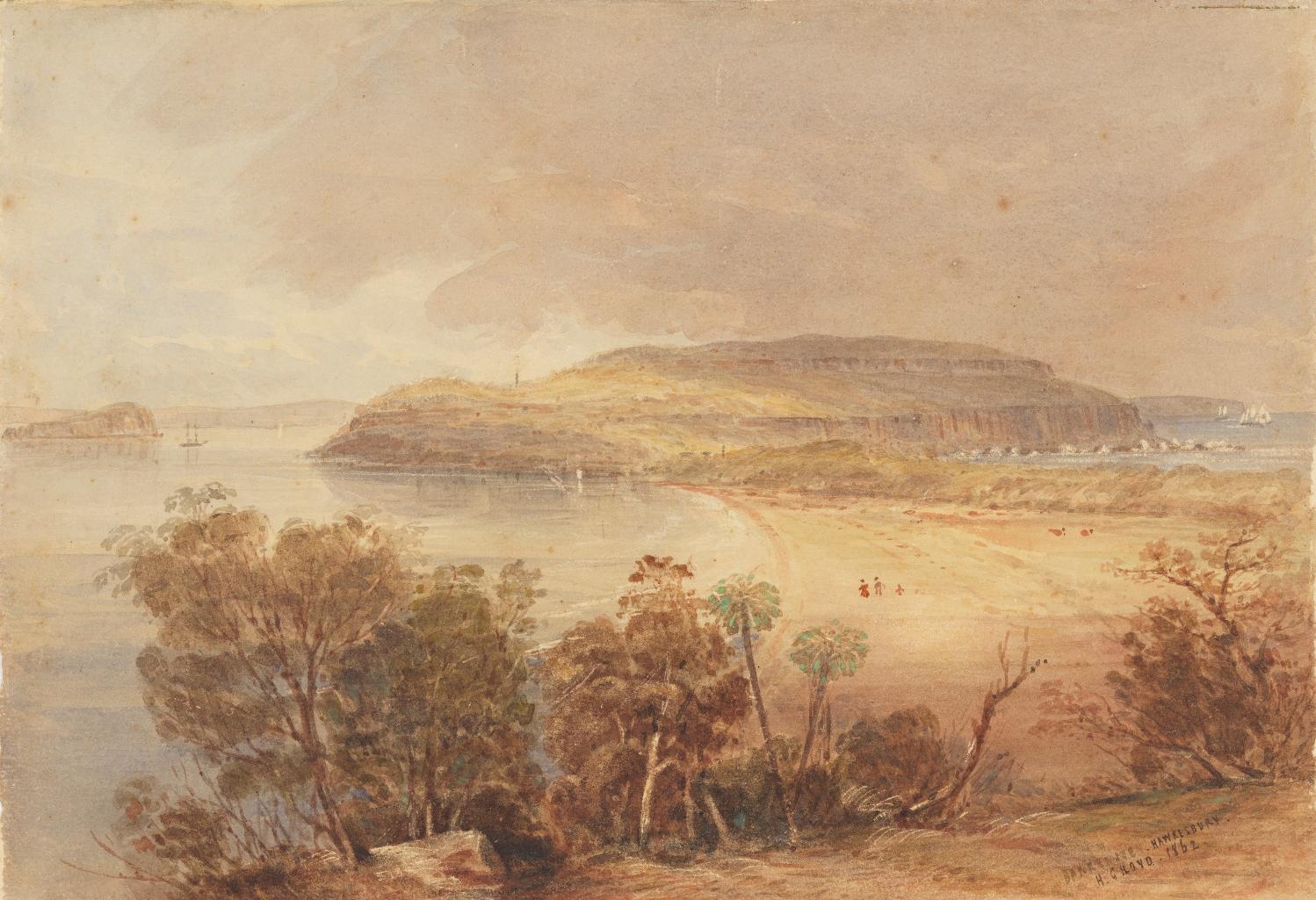
Birdsong Can Make You Happy: How To Make A Bird-Friendly Garden
Although we probably all knew this, scientists have found out through recent studies that birdsong is good for all our senses and for making happy thoughts. (The phantom chorus: birdsong boosts human well-being in protected areas).
How do we make sure we always have birdsong around us, whether in our own backyard, on the beach or estuary or walking through the bush?
By looking after their homes.
This lady is going to tell us more about how we can do that:
Coastal Collection – Starring 12 Charismatic Bird Species
By Birds in Backyards TV
These seaside scenes featuring 12 beautiful birds – Double-banded Plover (Charadrius bicinctus), Red-capped Plover (Charadrius ruficapillus), Pacific Golden Plover (Pluvialis fulva), Crested Tern (Thalasseus bergii), Red-necked Stint (Calidris ruficollis), Ruddy Turnstone (Arenaria interpres), Silver Gull (Chroicocephalus novaehollandiae), Kelp Gull (Larus dominicanus), Eastern Reef Egret (Egretta sacra), Sooty Oystercatcher (Haematopus fuliginosus), Little Pied Cormorant (Microcarbo melanoleucos) and Australian Raven (Corvus coronoides) – were captured across three autumn (2021) visits to Boat Harbour Aquatic Reserve, Kurnell (NSW, Australia). However our own wetlands, beaches and estuary foreshores are also great places to see birds!
Northern Beaches Youth Theatre At Warriewood: Christmas Play
Calling all 12-17 year olds!
Register now to be a part of our hilarious, fun and enchanting modern take on the old Dickens tale of the ghosts of Christmas past, present and future taking an old scrooge on a heartfelt awakening and the resulting realisation of all that makes a person good and wise. Mark Landon Smith's "Christmas Carol High School" is a play (not musical) with a modern take on the timeless classic. It uses a present day setting and a cast of cool, modern characters with throwbacks to old favourites for family-oriented fun.
We welcome any 12-17YO with the slightest, niggling interest in theatre to come along and have a go. There are many parts up for grabs and it's a great opportunity to give theatre a go if you're new, or put something on your resume if you're already honed and experienced. All while being part of an open, inclusive and warm community.
Rehearsals weekly Fridays 430-630pm
Show dates last week of November and first week of December with some extra rehearsals closer to show dates.
Sign up using the form (or bio link): https://form.jotform.com/221797029650865
Find out more at: https://www.facebook.com/NorthernBeachesYouthTheatre

Art Competition To Remember Our ANZACS
Word Of The Week: Barrenjoey
Barrenjoey, which means 'young kangaroo', is in the lands of the Garigal people. Midden sites have been found on the headland and nearby in Ku-ring-gai Chase National Park – there are also axe-grinding grooves, cave art and rock engravings.
This has also been spelt Barranjoey, Baranjuee, Barranyu and Barranjull.
As a descriptive word it would indicate this headland was populated by kangaroos and wallabies.
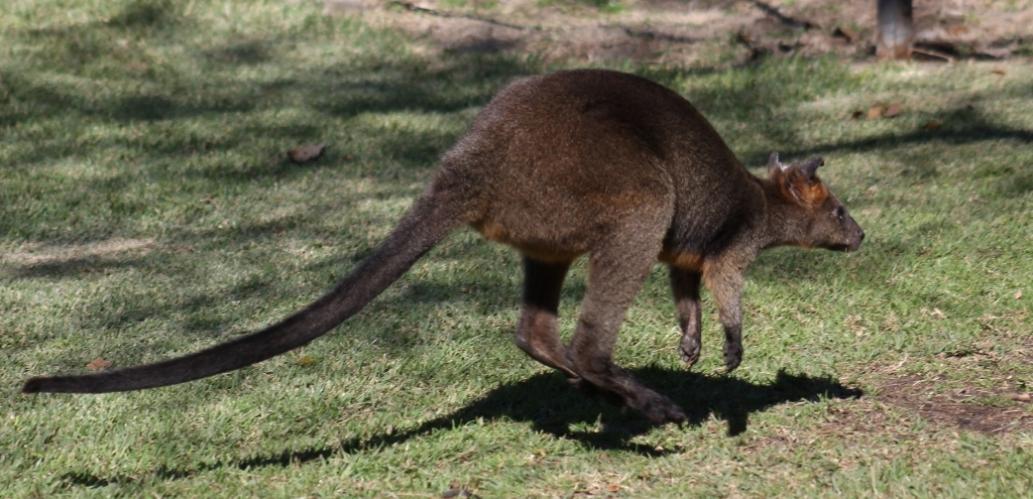
Cold Comfort Shipsterns In July
Published by SURFING VISIONS, July 8, 2022
Tim Bonython:
What we thought was a two day swell mission ended up being one. With a 15/16 second swell period, this day out at the world famous Aussie slab created some very entertaining rides/wipeouts especially with that step. There's only one wave on the planet that does this and its called Shipsterns Bluff. Featuring locals Danny Griffith, Marti Paradisis, Zeb Critchlow and up & coming 16 year old grommet Noah Hassett. Plus Sydney lads Wayne Cleveland & one of the best new surfers on the block, Max McGuigan. ENJOY
How the James Webb deep field images reminded me the divide between science and art is artificial

The first task I give photography students is to create a starscape.
To do this, I ask them to sweep the floor beneath them, collect the dust and dirt in a paper bag and then sprinkle it onto a sheet of 8x10 inch photo paper. Then, using the photographic enlarger, expose the detritus-covered paper to light. After removing the dust and dirt, the paper is submerged in a bath of chemical developer.
In less than two minutes, an image slowly emerges of a universe teeming with galaxies.
I love it when the darkroom fills with the sound of their astonishment the moment they realise the dust beneath their feet is transformed into a scene of scientific wonder.
I was reminded of this analogue exercise when NASA’s James Webb Space Telescope shared the first deep field images. The public expression of wonder is not unlike that of my students in the darkroom.
But unlike our makeshift starscapes, the Deep Field images capture an actual galaxy cluster, “the deepest, the sharpest infrared view of the universe to date.”
This imaging precision will help scientists to solve the mysteries in our solar system and our place in it.
But they will also inspire continued experiments by artists who address the subject of space, the universe and our fragile place in it.
Creating Art Of Space
Images of the cosmos afford considerable visual pleasure. I listen to scientists passionately describing the information stored in their saturated colours and amorphous shapes, what the luminosity and shadows are, and what lurks in the deep blacks that are spotted and speckled.
The mysteries of the universe are the stuff of science and of the imagination.
Throughout history, artists have imagined and created proxy universes: constructions that are lyrical and speculative, alternate worlds that are stand-ins for what we imagine, hope and fear is “out there”.
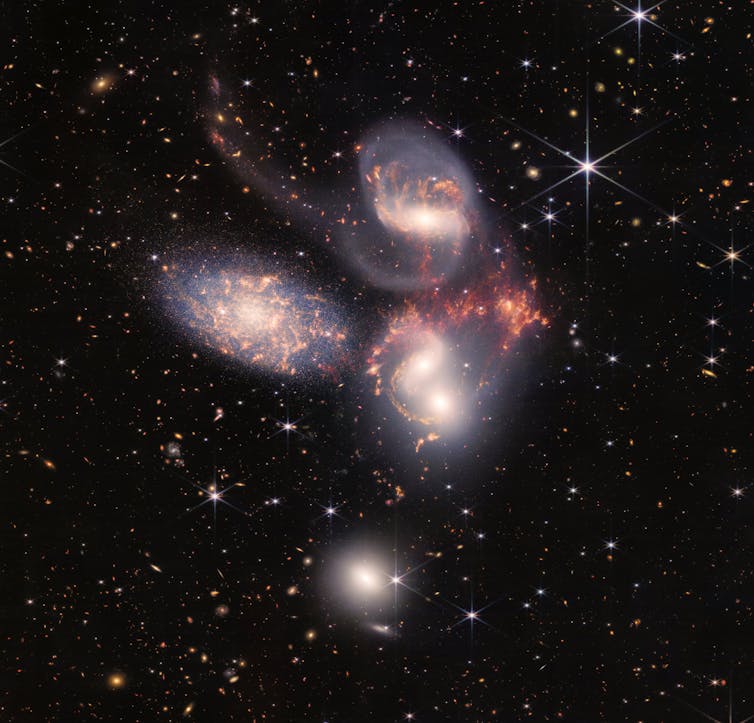
There are the photo-real drawings and paintings of Vija Celmins. The night sky painstakingly drawn or painted by hand with extraordinary detail and precision.
There is David Stephenson’s time lapse photographs that read as lyrical celestial drawings reminding us that we are on a moving planet. Yosuke Takeda’s ambiguous star bursts of colour and light. Thomas Ruff’s sensuous star photos made through the close cropping of the details of existing science images he bought after failing to be able to capture the cosmos with his own camera.
There’s also the incredible work of the Blue Mountains based duo Haines & Hinterding where polka dots become stars, black pigment is the night sky, bleeding coloured ink is a gas formation. They make rocks hum and harness the sun’s rays so we can hear and smell its energy.
These artworks highlight the creative drive to draw on science for the purposes of art. The divide between science and art is an artificial one.
Pictures Of Our Imaginations
The Webb telescope shows science’s capacity to bring us images that are aesthetically imaginative, expressive and technically accomplished but – strangely – they don’t make me feel anything.
Science tells me these shapes are galaxies and stars billions of years away, but it isn’t sinking in. Instead, I see a fabulously constructed landscape like James Nasmyth’s famous moon images from 1874.
In my imagination, I picture the Webb images as made of fairy lights, coloured gels, mirrors, black cloth, filters and photoshop.

Art’s stand-ins invade my psyche. When I look at the deep field and planetary nebula, I remember that even these “objective” machine made images are constructed. The rays of light, holes and gases are artistic experiments in photographic abstraction, examining what lies beyond vision.
Imaging technology always transforms what is “out there”, and how we see it is determined by what is “in here”: our own subjectivity; what we bring of ourselves and our lives to the reading of the image.
The telescope is a photographer crawling through the cosmos, making more of the unseen seen. Giving artists more references for appropriation, imagination and also critique.
While scientists see structure and detail, artists see aesthetic and performative possibilities for asking pressing questions that concern the politics of space and place.
Art In Space
Webb’s images present a renewed opportunity to reflect on the work of American artist Trevor Paglen, who sent the world’s first artwork into space.
Paglen’s work examines the political geography that is space and the ways in which governments aided by science use space for mass surveillance and data collection.
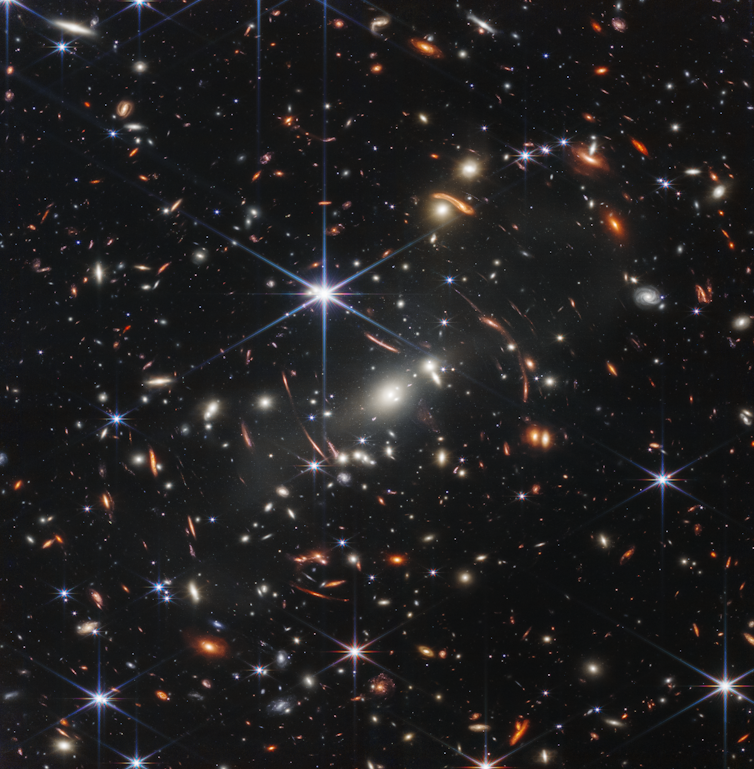
He created a 30 metre diamond-shaped balloon called the Orbital Reflector, supposed to open up into an enormous reflective balloon and be seen from Earth as a bright star. It was rocketed into space on a satellite, but the engineers could not complete the sculpture’s deployment due the unexpected government shutdown.
Paglen’s artwork was criticised by scientists.
Unlike astronomers, he wasn’t trying to unlock the mystery of the universe or our place in it. He was asking: is space a place for art? Who owns space, and who is space for?
Space is readily available to government, military, commercial and scientific interests. For the time being, Earth remains the place for art.![]()
Cherine Fahd, Associate Professor of Visual Communication in the School of Design, University of Technology Sydney
This article is republished from The Conversation under a Creative Commons license. Read the original article.
Enforcing adult chaperones of teens at Splendour in the Grass actually undermines public health

On Monday night, Splendour in the Grass, an annual three-day music festival in Byron, New South Wales, posted to social media the news that all patrons under the age of 18 “must be accompanied by a responsible adult at all times whilst at the event.”
The festival is due to begin on July 22. Prior to this new restriction from New South Wales Police, only people under the age of 16 had to be accompanied by an adult.
Changing the rules two weeks out from opening has the potential to be damaging to the livelihood of the event. Tickets start at $189 for a single day pass, and families will need to plan their days differently around the event, if they can afford additional tickets at all.
Festivals like Splendour have the opportunity to be a transformative event for young people: a unique experience with their friends, fostering social connectivity.
Events like Splendour help young people develop their own skills around healthy behaviour, but for this to happen we need to trust them – and their community.
What We Talk About When We Talk About Safety
“Safety” has become increasingly significant in the vocabulary of researchers, public bodies, event managers and police. Social health, mental well-being, physical safety and experiences are all central to successful events – even more so now with COVID.
But there is a lack of psychological understanding in how different forms of safety can intersect.
Event managers, police and medical teams all have different views of safety within an event. Too often, event safety is considered in silos. The police are making decisions independently of event managers, medical teams and those tasked with occupational health and safety.
Experienced event managers will tell you events like Splendour are intuitively designed through many years of personal experience. This new decision demonstrates a real lack of trust on behalf of the police.

This poor communication between the event managers and police is exacerbated by the lack of consistency and tools used to maintain safety around events.
Risk assessment gets trapped in a legislative environment which bumps up against what we want an event to be. We want events to be a place where people come together and work towards one cause – this should be as true for planning the safety of an event as for the enjoyment of the event itself.
Unidirectional decisions like this from the NSW Police shut the door on creative ideas on health and safety. And without any formal evaluation, we won’t know the impacts of this on these young people, their families and the event as a whole.
There is a real opportunity for events to promote health for their audiences and the community. Part of this means there is an ownership of risk among the attendees: an agreement from everyone involved that they will work together to take care of each other.
Information sharing between onsite care providers can lead to more targeted and effective strategies, such as how to manage inebriated patrons, crowd control and drug use. All parties need to have a debrief post event and evaluate the good, the bad and the ugly, and identify and address any issues.
Evaluation ensures we are not repeating mistakes, and good strategies are continued.
Splendour in the Grass actually has a strong track record in considering the health of attendees, offering free STI screenings on site. Sexually transmitted infections (STIs) are a health issue for all sexually active people; young people are at an increased risk due to the exploration of their own sexuality, and other risk-taking behaviours such as drug and alcohol consumption.
The success of this program has shown events can successfully engage young people in their health.
Learning How To Navigate The World
Young people learn a lot from their parents. For many young people, their family is their safety net. But at 16 and 17, young people are more attracted to their peer group. Events give young people a chance for freedom and experimentation in a controlled environment with established support.
Freedom doesn’t necessarily mean drugs and alcohol. Instead, it is about navigating a crowd, being safe and taking care of friends.
The event managers at Splendour in the Grass want their community to look out for each other. They want participants to drink water, recycle and get home safe. They have worked for years to establish a festival community which supports this.
This decision by the police creates turbulence around the event. Rather than tasking civic responsibility onto the community which gathers at Splendour, the police are announcing they have the responsibility – without creating an opportunity to create a shared space for risk reduction.

We should be asking festival goers to support young people. We want people to teach 16 and 17-year-olds how to behave safely at these events: how to make sensible choices around drugs, how to be safe around people who are drinking, when to ask for help.
By mandating these young people must be supervised, the impact the wider community can have is diminished.
Events like Splendour in the Grass can help young people develop their own skills around healthy behaviour. But messages need to be empowering. We can empower these young people by giving them knowledge and skills about navigating the world and giving them the space to make informed choices.
Saying they need to be accompanied by a “responsible adult” will undermine the independence young people are starting to feel, and they will miss opportunities to facilitate healthy behaviours when they go back out into the world. ![]()
Alison Hutton, Professor, University of Newcastle
This article is republished from The Conversation under a Creative Commons license. Read the original article.
Karl Marx: his philosophy explained

In 1845, Karl Marx declared: “philosophers have only interpreted the world in various ways; the point is to change it”.
Change it he did.
Political movements representing masses of new industrial workers, many inspired by his thought, reshaped the world in the 19th and 20th centuries through revolution and reform. His work influenced unions, labour parties and social democratic parties, and helped spark revolution via communist parties in Europe and beyond.
Around the world, “Marxist” governments were formed, who claimed to be committed to his principles, and who upheld dogmatic versions of his thought as part of their official doctrine.
Marx’s thought was groundbreaking. It came to stimulate arguments in every major language, in philosophy, history, politics and economics. It even helped to found the discipline of sociology.
Although his influence in the social sciences and humanities is not what it once was, his work continues to help theorists make sense of the complex social structures that shape our lives.
Economics
Marx was writing when mid-Victorian capitalism was at its Dickensian worst, analysing how the new industrialism was causing radical social upheaval and severe urban poverty. Of his many writings, perhaps the most well known and influential are the rather large Capital Volume 1 (1867) and the very small Communist Manifesto (1848), penned with his collaborator Frederick Engels.
On economics alone, he made important observations that influenced our understanding of the role of boom/bust cycles, the link between market competition and rapid technological advances, and the tendency of markets towards concentration and monopolies.
Marx also made prescient observations regarding what we now call “globalisation”. He emphasised “the newly created connections […] of the world market” and the important role of international trade.
At the time, property owners held the vast majority of wealth, and their wealth rapidly accumulated through the creation of factories.

The labour of the workers – the property-less masses – was bought and sold like any other commodity. The workers toiled for starvation wages, as “appendages of the machine[s]”, in Marx’s famous phrase. By holding them in this position, the owners grew ever richer, siphoning off the value created by this labour.
This would inevitably lead to militant international political organisation in response.
It is from this we get Marx’s famous call in 1848, the year of Europe-wide revolutions:
workers of the world unite!
Society
To do philosophy properly, Marx thought, we have to form theories that capture the concrete details of real people’s lives – to make theory fully grounded in practice.

His primary interest wasn’t simply capitalism. It was human existence and our potential.
His enduring philosophical contribution is an insightful, historically grounded perspective on human beings and industrial society.
Marx observed capitalism wasn’t only an economic system by which we produced food, clothing and shelter; it was also bound up with a system of social relations.
Work structured people’s lives and opportunities in different ways depending on their role in the production process: most people were either part of the “owning class” or “working class”. The interests of these classes were fundamentally opposed, which led inevitably to conflict between them.
On the basis of this, Marx predicted the inevitable collapse of capitalism leading to equally inevitable working-class revolutions. However, he seriously underestimated capitalism’s adaptability. In particular, the way that parliamentary democracy and the welfare state could moderate the excesses and instabilities of the economic system.
Innovation
Marx argued social change is driven by the tension created within an existing social order through technological and organisational innovations in production.
Technology-driven changes in production make new social forms possible, such that old social forms and classes become outmoded and displaced by new ones. Once, the dominant class were the land owning lords. But the new industrial system produced a new dominant class: the capitalists.

Against the philosophical trend to view human beings as simply organic machines, Marx saw us as a creative and productive type of being. Humanity uses these capacities to transform the natural world. However, in doing this we also, throughout history, transform ourselves in the process. This makes human life distinct from that of other animals.
History
The conditions under which people live deeply shape the way they see and understand the world. As Marx put it:
men make their own history [but] they do not make it under circumstances chosen by themselves.
Marx viewed human history as process of people progressively overcoming impediments to self-understanding and freedom. These impediments can be mental, material and institutional. He believed philosophy could offer ways we might realise our human potential in the world.
Theories, he said, were not just about “interpreting the world”, but “changing it”.
Individuals and groups are situated in social contexts inherited from the past which limit what they can do – but these social contexts afford us certain possibilities.
The present political situation that confronts us and the scope for actions we might take to improve it, is the result of our being situated in our unique place and time in history.
This approach has influenced thinkers across traditions and continents to better understand the complexities of the social and political world, and to think more concretely about prospects for change.
On the basis of his historical approach, Marx argued inequality is not a natural fact; it is socially created. He sought to show how economic systems such as feudalism or capitalism – despite being hugely complex historical developments – were ultimately our own creations.
Alienation And Freedom
By seeing the economic system and what it produces as objective and independent of humanity, this system comes to dominate us. When systematic exploitation is viewed as a product of the “natural order”, humans are, from a philosophical perspective, “enslaved” by their own creation.
What we have produced comes to be viewed as alien to us. Marx called this process “alienation”.
Despite having intrinsic creative capacities, most of humanity experience themselves as stifled by the conditions in which they work and live. They are alienated a) in the production process (“what” is produced and “how”); b) from others (with whom they constantly compete); and c) from their own creative potential.

For Marx, human beings intrinsically strive toward freedom, and we are not really free unless we control our own destiny.
Marx believed a rational social order could realise our human capacities as individuals as well as collectively, overcoming political and economic inequalities.
Writing in a period before workers could even vote (as voting was restricted to landowning males) Marx argued “the full and free development of every individual” – along with meaningful participation in the decisions that shaped their lives – would be realised through the creation of a “classless society [of] the free and equal”.
Ideology
Marx’s concept of ideology introduced an innovative way to critique how dominant beliefs and practices – commonly taken to be for the good of all – actually reflect the interests and reinforce the power of the “ruling” class.
For Marx, beliefs in philosophy, culture and economics often function to rationalise unfair advantages and privileges as “natural” when, in fact, the amount of change we see in history shows they are not.
He was not saying this is a conspiracy of the ruling class, where those in the dominant class believe things simply because they reinforce the present power structure.
Rather, it is because people are raised and learn how to think within a given social order. Through this, the views that seem eminently rational rather conveniently tend to uphold the distribution of power and wealth as they are.
Marx had always aspired to be a philosopher, but was unable to pursue it as a profession because his views were judged too radical for a university post in his native Prussia. Instead, he earned his living as a crusading journalist.
By any account, Marx was a giant of modern thought.
His influence was so far reaching that people are often unaware just how much his ideas have shaped their own thinking.![]()
Christopher Pollard, Tutor in Philosophy and Sociology, Deakin University
This article is republished from The Conversation under a Creative Commons license. Read the original article.
Low iron is a health risk made worse by COVID. How to get more without reaching for supplements

“Beauty is an iron mine,” once remarked the Australian mining magnate, Gina Reinhart. She was talking about a precious resource, but iron is also profoundly important to living organisms: from bacteria and fungi, to mammals like us.
Iron acts as a key to numerous metabolic functions within our bodies. But iron deficiency remains as one of the top global health risks recognised by the World Health Organization (WHO).
Iron deficiency has become the most prevalent micronutrient disorder worldwide, and COVID may be worsening the problem.
Iron Is Hard To Get
The type of iron we mine is different from the “free-form” iron that can be used biologically. Free-form iron has a propensity to jump between two chemical states, allowing it to bind to various molecules, and participate in all sorts of essential reactions within our bodies.
But we see a different story again during food digestion. Inside our upper small intestine where iron is most effectively absorbed, free-form iron tends to bind to oxygen, other minerals and food components. This often results in rock-like, insoluble clumps (which are like the ones we mine!). These are too big to pass through or between our cells.
This means that even when we consume enough iron, typically only ~15–35% of it is absorbed. It also means iron availability can be improved, or inhibited depending on how we eat it or what we eat it with.
For example, heme iron from animal flesh has a cage-like structure, which carries the iron in a soluble form that prevents it from clumping during absorption. In many Western countries, heme iron only accounts for 10% of the iron eaten, but two thirds of the total iron absorbed.
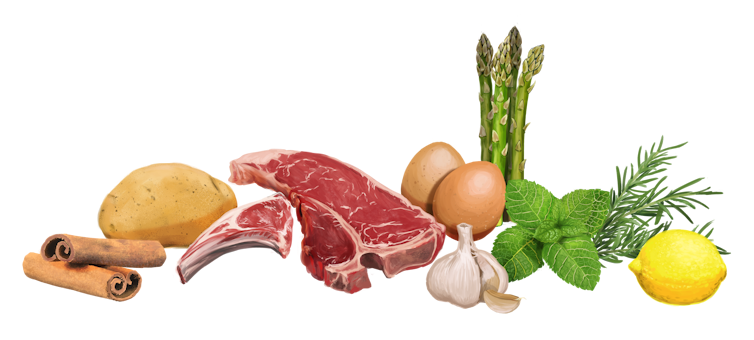
More Of Us Are At Risk Of Deficiency
Getting sufficient iron sounds like simple maths: we want to add enough to our dietary intake to make up for the iron being lost from the body, such as through faeces, skin shedding, menstruation (for women) and sweat. But the two sides of the equation can change depending on who and where we are throughout our lifetime.
Generally, iron deficiency occurs when our body’s stores of iron are depleted from not having consumed or absorbed enough iron to meet our needs.
This can happen when people restrict their diets, such as for religious, social or medical reasons. Some people also have a tough time keeping up when their iron needs increase, such as pregnant women and growing children.
But iron deficiency can also happen when the body has enough iron, but can’t effectively transport it into cells. This is common in those with both acute and chronic infections, heart and autoimmune conditions, and cancers. In these cases, the underlying disease needs to be treated first, rather than improving iron intake.
The table below summarises some common causes of iron deficiency. Sometimes multiple causes may occur simultaneously – for example, for many elite athletes (35% of women and 11% of men), iron deficiency results from reduced absorption due to inflammation, on top of increased loss through sweat and breakdown of blood cells.
COVID Hasn’t Helped
The ongoing COVID epidemic has also introduced multiple risk factors for iron deficiency.
We know severe infection with SARS-CoV-2 (the virus that causes COVID) may change the way some people metabolise iron, leading to lower iron levels up to two months after infection. This contributes to symptoms commonly reported after infection, such as fatigue and lethargy.
Recovery from the pandemic itself has also exacerbated food supply issues, as well as the rising global income inequality.
This means more people face barriers to food security – and the nutrient-dense foods that help boost our iron intake like red meat or leafy greens may be unavailable or unaffordable for them.
Before You Pick Up A Pill
It may be tempting to pick up one of the many widely available iron supplements to attempt to boost your intake. However, we have to keep in mind that conventional iron supplementation is associated with some negative side effects.
These include damage to our gut lining, nausea, diarrhoea and constipation. Iron supplementation has also been linked to changes in the gut microbiome, a critical determinant of health.
The WHO has recommended two other approaches: diet diversification and food fortification.
Diet diversification is exactly as it sounds: having a diet with a variety of wholefoods such as fruits and vegetables, grains and legumes, meat, dairy, and nuts and seeds.
This approach not only ensures sufficient levels of iron are found in the foods we eat, but also that they come with different forms or “vehicles” to improve absorption. This approach works even with plant-based foods.

Food fortification, where iron is added to processed foods, is also a fairly safe yet accessible option due to its lower dose. In Australia, iron is commonly fortified in products such as bread, cereals and ready-to-drink mixes.
It can be challenging to get the iron into our body and where it’s needed. But before turning to supplements, we must remind ourselves that food sources should always be first-in-line. In cases of diagnosed deficiencies, your healthcare professional will provide you with further information where supplements are necessary.![]()
Yianna Zhang, PhD Candidate, The University of Melbourne; Ken Ng, Senior Lecturer & Course Coordinator (Master of Food Science), The University of Melbourne, and Said Ajlouni, Associate Professor, The University of Melbourne
This article is republished from The Conversation under a Creative Commons license. Read the original article.
Four ways to stop thinking the worst will happen when you’re stressed

Imagine you have an interview for a new job tomorrow. Some people might think about what kind of questions they will be asked so that they can prepare, or imagine the interview going well. For others, the thought of an interview will cause them to toss and turn all night thinking of every worst case scenario possible – no matter how outlandish these may be. If you’re someone who has a tendency to do the latter, you are prone to catastrophising.
Catastrophising is a tendency to assume the worst will happen when imagining a future situation – even if you have evidence that this is not the most likely outcome. People who like to feel in control (and are therefore intolerant of uncertainty) are more likely to catastrophise. This has been linked to anxiety – suggesting that frequent catastrophising may be a factor in developing certain mental health problems.
Catastrophising comes from the belief that by imagining what might go wrong, we’re better able to protect ourselves from harm – both physical and mental. However, this tendency is only helpful if you’re able to correctly predict what will happen in a certain situation and how it will make you feel.
As we imagine future events, we experience an emotional reaction to the story we are creating – and we use this response to determine how we will feel in the future. But this way of predicting the future is often wrong since we’re not able to imagine everything that might happen. This can lead to us creating the wrong emotional response for future situations in our heads.
But our belief in what will happen in the future can have a big influence on our behaviour. For example, people who are optimistic (or even realistic) about the future are more likely to be willing to try new things. They are also likely to notice what has gone well in new situations. On the flip side, people who catastrophise about what might go wrong are less likely to try new things. And, when they do try something new, they are more likely to notice what has gone wrong. This will be stored in their memory and will add to the reasons why they we shouldn’t try new things in the future. As a result, catastrophising can lead to undue stress and anxiety and may stop you from doing the things you might enjoy or learn from.
If you’re someone who tends to catastrophise when stressed or anxious, there are a few things that you can do to help:
1. Make decisions in the morning
We often worry about the future at night. When we are asleep, activity in the rational part of our brain is reduced and activity in the more emotional part of our brain is increased. As a result, we tend to use our emotional brain to picture the future when we’re awake at night. Lack of sleep can also make us more sensitive to things we see as threatening. This can lead us to focus more on what might go wrong, and makes us more prone to catastrophising.

It can be helpful to remind yourself that you are not thinking rationally when you’re lying awake worrying about something. It can also be useful to wait until the morning to make decisions when your brain is rested.
2. Teach your inner critic to be more compassionate
Catastrophising can be driven by our inner critic, which may use harsh language that makes us emotional.
When this happens, try imagining your inner critic as if you were looking through someone else’s eyes. What language do you use and would you use this language when talking about someone else in a similar situation? Is the language your inner critic uses helpful or justified? Often the answers to these questions will be no. Be conscious of the language your inner critic is using when you’re worried or stressed. If it’s overly harsh, try to switch to a kinder way of speaking to yourself.
3. Make up a better story
Even if things have gone wrong in the past, this is unlikely to be the case in the future – despite what we might tell ourselves. If you have a tendency to catastrophise about future events, try to think instead about ways in which this event might go well, which may help you to feel less anxious.
Another strategy is to make up, not just one, but a number of plausible stories about what might happen. This may help to remind you that the stories you’re telling yourself are just that – stories. Choosing to focus on the stories with a positive outcome might also help you to feel less worried or stressed.
4. Be kind to yourself
Try to be more compassionate with yourself when considering your future. This is more difficult than you might imagine – even for people who are very compassionate and empathetic to others.
Compassion and empathy evolved to help us to interact well with others. As such, compassion and empathy aren’t really designed to be used for yourself. But small things – such as asking what advice you might give a friend in your situation – can help you to get in touch with your compassionate voice. Practising this often may even help you to see solutions where you might otherwise have only focused on the problem.
Planning for ways in which things might go wrong in the future does serve a purpose – and that is to keep us safe. But if you often find that you castrophise by thinking of all the worst case scenarios – especially to the detriment of your own mental health – it can be important to remind yourself that the things you’re worrying about may never happen, and, if they do, they will probably turn out much better than you think.![]()
Patricia Riddell, Professor of Applied Neuroscience, University of Reading
This article is republished from The Conversation under a Creative Commons license. Read the original article.
Concerns over TikTok feeding user data to Beijing are back – and there’s good evidence to support them

When English statesman Sir Francis Bacon famously said “knowledge is power”, he could hardly have foreseen the rise of ubiquitous social media some 500 years later.
Yet social media platforms are some of the world’s most powerful businesses – not least because they can collect massive amounts of user data, and use algorithms to turn the data into actionable knowledge.
Today, TikTok has some of the best algorithms in the business, and a suite of data-collection mechanisms.
This is how it manages to be so addictive, with some 1.2 billion users as of December 2021. This number is expected to rise to 1.8 billion by the end of the year.
It’s against the background of these huge numbers that the US Federal Communications Commission (FCC) wrote a strongly worded letter to the chief executives of Apple and Google last Tuesday, urging them to remove TikTok from their app stores on the grounds that the company – or more precisely its Chinese parent ByteDance – can’t be trusted with US users’ data.
What Are The Concerns?
In his letter, FCC commissioner Brendan Carr says:
TikTok is owned by Beijing-based ByteDance — an organisation that is beholden to the Communist Party of China and required by the Chinese law to comply with the PCR’s [(People’s Republic of China)] surveillance demands.
TikTok’s privacy policy says it won’t sell personal information to third parties, but reserves the right to use information internally for business development purposes. That internal use may include use by its parent company, ByteDance.
TikTok US has repeatedly denied breaching US data privacy regulations. It says user data are stored on US servers and not shared with ByteDance. But Carr says these measures fall short of guaranteeing the privacy of US users:
TikTok’s statement that ‘100% of US user traffic is being routed to Oracle’ (in the US) says nothing about where that data can be accessed from.
Following robust questioning by US senators, TikTok has admitted its US-stored data are in fact accessible from China, subject to unspecified security protocols at the US end.
Australian users also have their data stored on US servers, with backups in Singapore. But it’s not known whether these data – which could include users’ browsing habits, images, biographical information and location – are subject to the same safeguards as the US data.
Leaked Audio
The unusually blunt language from Carr may have been occasioned by leaked audio obtained by Buzzfeed from more than 80 internal TikTok meetings.
According to a Buzzfeed report from mid-June, China-based employees of ByteDance have repeatedly accessed non-public data about US TikTok users. The tapes overwhelmingly contradict TikTok’s earlier data privacy assurances.
For example, in a September 2021 meeting a senior US-based TikTok manager referred to a Beijing-based engineer as a “master admin” who “has access to everything”. That same month a US-based staffer in the Trust and Safety Department was heard saying “everything is seen in China”.
In short, the recordings corroborate the claim that China-based employees have often accessed US data, and more recently than earlier statements asserted.
Might It All Be Harmless?
On the one hand TikTok is in the business of entertaining users, with a goal to keep them on the platform and expose them to targeted advertising. On the other hand, TikTok can be used to spread misinformation and influence users to their detriment.
It has been shown to host COVID conspiracy theories and other medical misinformation, and was reportedly used with a goal to influence Kenya’s general elections coming up in August.
Seen in this weaponized context, the US government’s strenuous objections to TikTok come into clearer focus.
Moreover, past events have also raised good reason to suspect Chinese actors of mass data harvesting online.
In 2020, Australian media outlets reported on a data leak from Zhenhua Data, a Chinese company with clients including the Chinese government and the People’s Liberation Army.
The leak was said to contain data on more than 35,000 Australians – including dates of birth, addresses, marital status, photographs, political associations, relatives and social media accounts. This information was gathered from a range of sources, including TikTok.
Would Banning TikTok Be Effective?
Removing TikTok from Google’s and Apple’s app stores can only be done on a country-by-country basis. India banned the platform in June 2020.
If the Australian government were to make the TikTok domain inaccessible from Australia, it could still be accessed through a virtual private network (VPN). A VPN service allows users to create a secure private network within a public one, thus disguising their country of origin. It’s the same tool that allows file-sharing on Pirate Bay and access to other countries’ Netflix programs.
But even if TikTok was banned in Australia and had access removed, or if users mass-terminated their accounts, existing data on the company’s US and Singapore-based servers would remain there. And we now know these data are accessible to TikTok’s parent company, ByteDance, in Beijing.
What Should TikTok Users Do?
Like any technology, TikTok itself is neither good nor bad. But the way in which it’s used creates potential for both.
The best defence with any potentially dangerous technology is to approach it with healthy scepticism and share as little as possible. In the case of TikTok (and other social media) this may involve:
- not disclosing your full name
- not disclosing your age and birthday
- not disclosing your physical location (including through pictures or video)
- turning off the “suggest your account to others” setting.
You can also request an account deletion. But don’t expect TikTok to delete all the data associated with it. That’s TikTok’s data now, and you agreed to handing it over when you signed up. ![]()
David Tuffley, Senior Lecturer in Applied Ethics & CyberSecurity, Griffith University
This article is republished from The Conversation under a Creative Commons license. Read the original article.
Equivalent to 1,800 tonnes of TNT: what we now know about the meteor that lit up the daytime sky above New Zealand
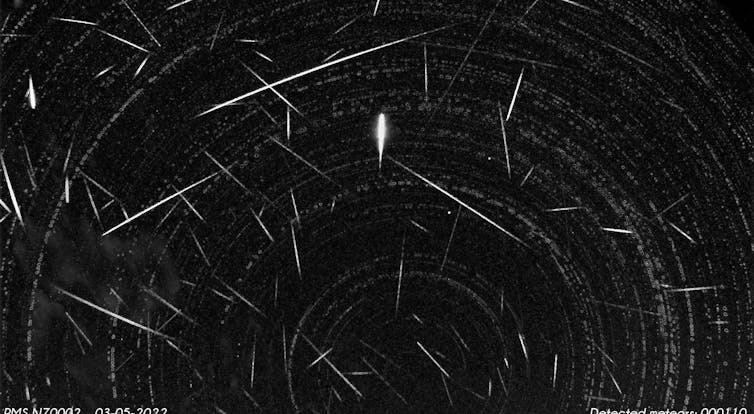
Meteorites hit New Zealand three or four times a year, but the fireball that shot across the sky above Cook Strait last week was unusual.
It had the explosive power of 1,800 tonnes of TNT and was captured from space by US satellites. It set off a sonic boom heard throughout the southern parts of the North Island.
Witnesses described a “giant bright orange fireball” and a flash that left a “trail of smoke that hung around for a few minutes”.
The fireball was most likely caused by a small meteor, up to a few metres in diameter, traversing Earth’s atmosphere. It was one of only five impacts of greater than a thousand tonnes of energy globally in the past year. Most meteors are tiny, creating “shooting stars” that only briefly skim the atmosphere.
The fragmentation of the meteor produced a shock wave strong enough to be picked up by GeoNet, a network of earthquake seismometers, with a flash bright enough to be recorded by a global lightning-tracking satellite. The Metservice’s Wellington radar picked up the leftover smoke trail south of the tip of the North Island.
But what is the chance of finding any of the its fragments, or meteorites, that dropped to Earth?
As part of Fireballs Aotearoa, a recently established collaboration between the universities of Otago and Canterbury and the astronomy community to track down freshly fallen meteorites, we are deploying specialised night-sky meteor cameras across New Zealand.
Fireballs Aotearoa’s meteor cameras only operate at night, but the compiled witness reports reveal the July 7 fireball travelled from northwest to southeast and most likely fragmented over the ocean. Unfortunately, any meteorites are therefore probably inaccessible.
Meteorites On Earth
Earth mainly gets meteorites from the asteroid belt, the Moon and Mars. They range from those only visible with a microscope to gigantic ones, such as the roughly 10km-wide meteorite that triggered the extinction of dinosaurs 65 million years ago.
Meteorites are scientific goldmines. Some contain material from before the Sun formed. Others tell us about the history of the young Sun’s planet-forming disk, when dust circulating around it began to clump into larger rocks and, eventually, planets.
Lunar meteorites show the Moon originated from the collision of a small planet with Earth. Martian meteorites tell us about the surface and interior of our closest planet. We don’t even need to send a spaceship.
If a meteor is recorded by several night-sky cameras, then its trajectory can be calculated and any resulting meteorites potentially located. The trajectory also tells us the meteor’s pre-impact orbit, allowing us to estimate where in the Solar System it originated.
How To Help Find A Meteorite
New Zealand has nine known meteorites. Although the fireball wasn’t seen, the most recent was the Auckland meteorite that crashed through an Ellerslie roof in 2003. Our analysis shows this rock belongs to the ordinary chondrite group and therefore was part of a small asteroid only slightly younger than the Sun.
Last year, the British citizen-led fireball network UKFall captured footage of an enormous fireball over southern England. The debris was located on a driveway in Winchcombe, Gloucestershire – where the owner initially assumed someone had emptied their barbecue.
Now on display in the Natural History Museum in London, the Winchcombe meteorite turned out to be a type incredibly rare on Earth.
It is similar to the 5g of material returned in 2020 from asteroid Ryugu by the Hayabusa 2 spacecraft, except the meteorite gave scientists a hundred times as much to work with.
Although the Wellington fireball on July 7 probably didn’t drop a meteorite on land, the next one might. And you can join the meteorite hunt by reporting any sightings to Fireballs Aotearoa.
We would like to acknowledge Jim Rowe and Jeremy Taylor, our colleagues at Fireballs Aotearoa, for help with compiling this article.![]()
James Scott, Associate Professor in Geology, University of Otago and Michele Bannister, Lecturer in Astronomy, School of Physical and Chemical Sciences Te Kura Matū, University of Canterbury
This article is republished from The Conversation under a Creative Commons license. Read the original article.
Photos from the field: diving with Tasmania’s rare and elusive red handfish, your new favourite animal

Environmental scientists see flora, fauna and phenomena the rest of us rarely do. In this series, we’ve invited them to share their unique photos from the field.
On the surface, it looks like any other bay near Hobart. But beneath the calm waters live a small population of one of the rarest and most endangered fish in the world: the red handfish.
I was diving in early 2020 with a small crew of some of the best handfish hunters on the planet, people who had monitored and nurtured knowledge of this tiny creature over recent years.
We laid out a series of “swim lanes” using survey tapes, which we would then search painstakingly in our wetsuits and SCUBA gear. We would take perhaps an hour to drift along each 50 metre lane, carefully moving seaweed and peering into each little nook for elusive handfish.

Towards the end of my first lane, I found one. Nestled between two seagrass plants, the little fish with its seemingly oversized hands stared up at me.
I marked it with a bright yellow flag so the research team could record the little critter in all its glory. This involved collecting essential scientific information, such as length and photographs of both sides of the fish, all the while avoiding disruption to it and its environment.

There are just two small areas near Hobart, and therefore in the world, where the red handfish is known to still live, amounting to a wild population of around 100 adults.
Earlier this year, the species was thankfully earmarked for federal conservation funding, but more must be done to stop this otherworldly creature from continuing to vanish.
Red Handfish Are Cryptic And Bizarre
Red handfish (Thymichthys politus) are a contradiction – this species is just several centimetres long, partly camouflaged yet trimmed by flashes of bright red. They are cryptic, and use their enlarged pectoral fins resembling human hands to walk across the seafloor, rather than swimming in the water column.
Handfish are a type of anglerfish. They are ambush predators, which means they prefer to sit and wait among seaweed, sponges and other cover for their prey to swim past, before they strike.
To help attract their prey – such as small fish and invertebrates – they have a fluffy lure on their forehead.

With so few left, the red handfish is extremely vulnerable to any pressures impacting the two areas it’s found in.
This includes habitat loss (driven largely by a boom in native urchins overgrazing seaweed), pollution and other urban impacts.
Direct disturbance by humans such as boating, anchoring and possibly diving are also potential threats, particularly during breeding season. And climate change impacts, such as warming waters, also play a big role in the decline of the species.


The red handfish aren’t Australia’s only handfish, with the southeast of the continent home to 14 different species.
One, the Ziebell’s handfish, lives deeper than the red handfish and we know even less about its conservation status. Another, the spotted handfish, lives in the Derwent estuary and nearby, with a population of fewer than 3,000 individuals.
Both of these species, along with the red handfish, are critically endangered.


How We’re Protecting Them
Recent government funding will help build resilience against threats to wild red handfish populations. This conservation effort includes re-building wild populations through a captive-rearing and release program known as “head-starting”.
This strategy involves collecting eggs from the wild, and nurturing the young in captivity. There, they have unlimited food, and they’re protected from predators and harsh conditions.


Once big enough, handfish are released back into the wild, and monitored through dive surveys which identify individual fish through their unique pattern of spots, similar to the way we use fingerprints.
As well as using this finger-printing technique, we’re also using ultra-sound to help us identify fish gender, which we’re otherwise unable to do by sight alone. This information will help us implement a captive-breeding program so we can continue our re-wilding program, and will also allow us to establish a captive insurance population.

We’re also working on restoring the fish’s habitat and mitigating direct disturbances through a SCUBA diver/snorkeller education and awareness program, called Handfish Guardians.
Early habitat restoration efforts have included working with divers to remove urchins, but we now plan to couple this with seaweed restoration trials. Through these efforts, researchers hope to halt the decline of red handfish.
But to truly safeguard this species from extinction and increase their numbers, we need longer-term efforts. This includes ongoing mitigation of urban impacts and restoration of ecosystem balance that can only be achieved through improved habitat management.![]()
John Turnbull, Postdoctoral Research Associate, UNSW Sydney and Jemina Stuart-Smith, Research Fellow, University of Tasmania
This article is republished from The Conversation under a Creative Commons license. Read the original article.
The next breakthrough tool in biology? It’s maths. Here are some ways mathematical biology is helping change the world

Biology is rich in patterns. You’ll find them everywhere – from the number of petals on a flower (which generally correspond to a number in the Fibonacci sequence), to the number of vertebrae in mammals (giraffes, humans and quokkas all have seven neck vertebrae). Even many viruses follow patterns and have symmetry in their shells.
Mathematics is, at its core, the science of patterns. Patterns can be subtle. So without using maths to formally describe and understand them, we could miss them completely.
For a long time, biological research had largely progressed without the advanced mathematical modelling that has now become core to physics, engineering and climate science. But this is changing.
Mathematical biology is a growing field which promises to revolutionise microbiology, biotechnology, evolutionary biology and health care. With maths, scientific breakthroughs that previously required years of trial-and-error experimentation (and tonnes of waste) can be achieved in a fraction of the time.
Here are some of the latest advances being made in mathematical biology.
Viruses And The Natural World
As children, most of us would have played rock, paper, scissors, that game where rock crushes scissors, scissors cut paper and paper covers rock.
Well, the same maths we use to describe rock, paper, scissors can also be used to predict the cycle of dominance between animal species in a region that allows their coexistence. For example, there are three varieties of side-blotched lizards in south-western United States. Each variety has an advantage over one of the others, and a disadvantage to the third.
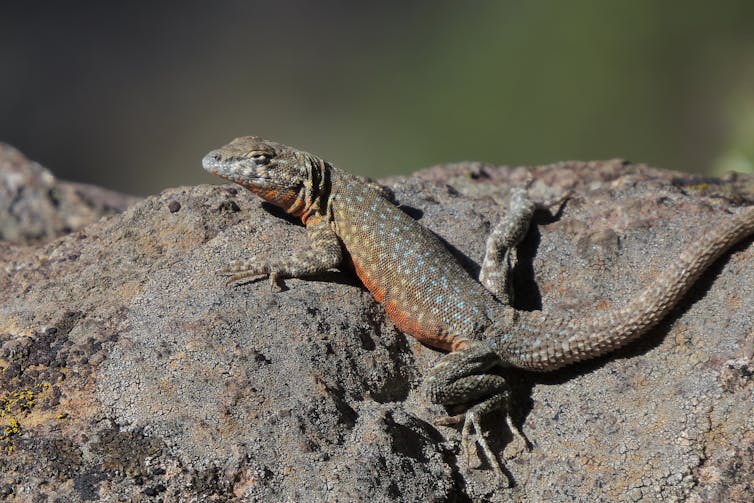
Maths has also been at the forefront of our fight against COVID-19. If you watch the news you’ve probably heard of R0, a mathematical concept that indicates if an epidemic will occur. When R0 is greater than 1 the number of infections rises. With R0 less than 1 the epidemic will eventually die out.
This crucial concept in infectious disease epidemiology is a result of the power of maths and statistics to detect patterns in data that are too subtle to notice otherwise. It has been the key to predicting and managing the spread of the COVID-19 virus. What’s perhaps less well known is maths is also being used to:
- design viruses to kill cancer cells, such as by making combination therapies to treat ovarian cancer
- design interventions to help eliminate malaria
- identify the cause of antimicrobial resistance
- create clean drinking water for developing nations and arid regions
- unlock the inner workings of living cells.
Whole Cell Models
We’re now at the onset of a new era in biology – one in which we can build mathematical models to comprehensively describe an individual biological cell in order to predict its fate. This is called the “whole cell model”. It allows us to compute the life of a cell and is helping us understand how the human body works.
One writer for The New Yorker magazine called the quest to understand the intracellular world the “final frontier”. And despite the field still being in its infancy, potential applications are everywhere.
Imagine for a moment if we could build a mathematical replica model of the inner cellular workings of the Methicillin-resistant Staphylococcus aureus (MRSA), a bacterial superbug that doesn’t respond to standard antibiotics.
With a whole cell model of MSRA, we could use computer simulations informed by biological experiments to engineer new ways of both preventing and treating MRSA bacterial infections. This would add another layer of defence in our fight against resistant superbugs.
The benefit of whole cell modelling extends to cancer treatment too. For example, cancer immunotherapy relies on using a patient’s own immune system to fight the cancer. If we had a complete cell model of immune cells, we could fine-tune specific anti-tumour responses to improve therapies against cancer – and do so without any invasive exploration of the patient.
Clean Water
Beyond health care, whole cell models are giving us methods to provide clean water for agriculture and food production. Effective water treatment produces high-quality water by removing microorganisms, organic matter and micropollutants.
However, buildup of the removed biological matter will cause the filters to become blocked by a layer of biological material, or “biofilm”. The biofilm must be removed for the filtration process to work again. In water desalination plants, around one-quarter of the running costs are attributed to the removal of biofilms — it’s a big problem.
Whole cell models will allow us to dissect the mechanisms underpinning how biofilms form. We’ll then be able to identify suitable targets to inhibit biofilm formation in the first place, or destroy biofilms once they’re created, to restore the integrity of the water supply.
This is just one of many examples. Being able to understand, predict and control the behaviour of cells will fast-track discoveries in biotechnology and health care, ensuring a healthier, more secure and prosperous future for everyone. ![]()
Jennifer Flegg, Associate Professor in Applied Mathematics, The University of Melbourne and Michael P.H. Stumpf, Professor for Theoretical Systems Biology, The University of Melbourne
This article is republished from The Conversation under a Creative Commons license. Read the original article.
New Genetic Research On Remote Pacific Islands Yields Surprising Findings On World's Earliest Seafarers
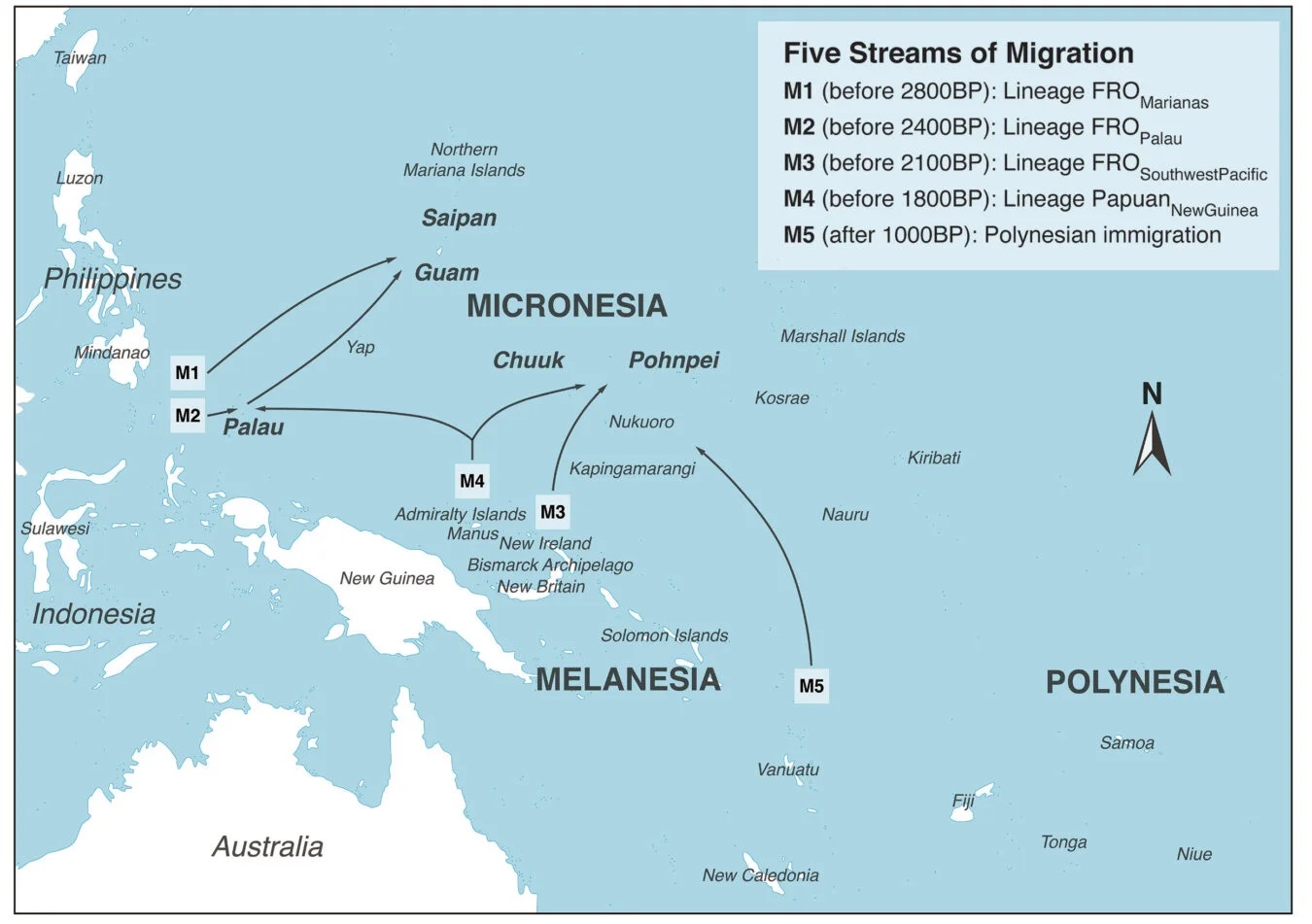
Road Injuries Are Killing Young People; And It's Hardly Slowing Down
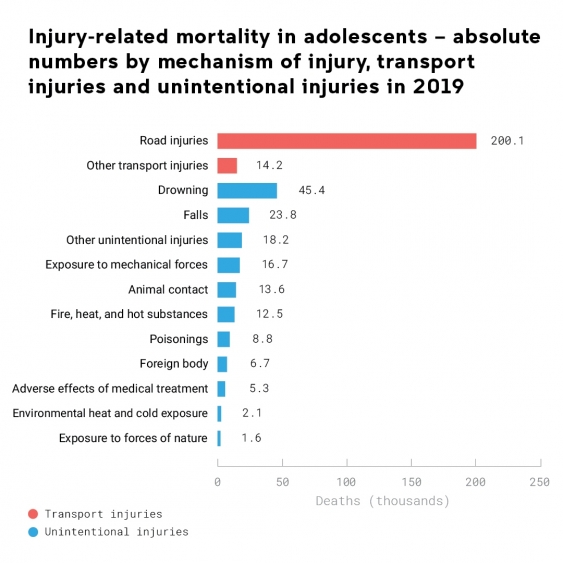
It Takes Three: The Genetic Mutations That Made Rice Cultivation Possible
- The researchers discovered the causal mutation in the qSH3 gene that is necessary to prevent rice seeds from falling (referred to as seed shattering).
- In the qSH3 gene mutation, there is a single nucleotide substitution on the gene (YABBY). This mutation is found in the vast majority of cultivars for the world's most widely farmed rice species (indica and japonica).
- The researchers found that plants with only the qSH3 gene mutation dropped their seeds naturally. However when the qSH3 mutation was combined with the previously reported sh4 gene mutation, the abscission layer (which is required for seed shattering) was partially inhibited.
- Seeds still fell with the qSH3 and sh4 mutation-mediated partial inhibition of the abscission layer, however the addition of a mutation at SPR3 that causes closed panicle structure resulted in the majority of seeds remaining on the plant, thus increasing the crop yield.
- An analysis of structural mechanics was performed to determine the relationship between panicle opening and closing and inhibition of the abscission layer. The results showed that with all three mutations present, shattering was suppressed and the seeds remained stably attached to the panicles.
- It is thought that our hunter-gatherer ancestors happened to observe the visual characteristics (i.e. closed panicles) of certain rice plants that had a higher yield and began to cultivate them, paving the way for rice to become a staple crop.
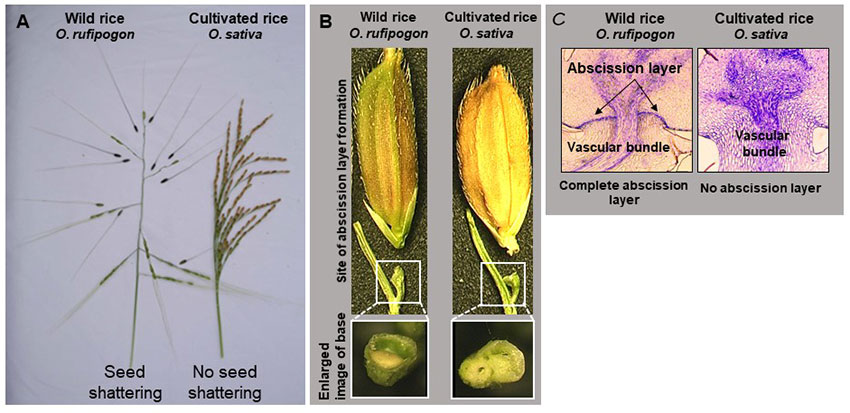
Discovery Could Inspire New Way To Detect Brain Abnormalities


Tooth Isotopes Offer Window Into South Australia's Early Colonial History
Grave Health Of Our Pioneer Settlers

Electric Vehicles Pass The Remote Road Test
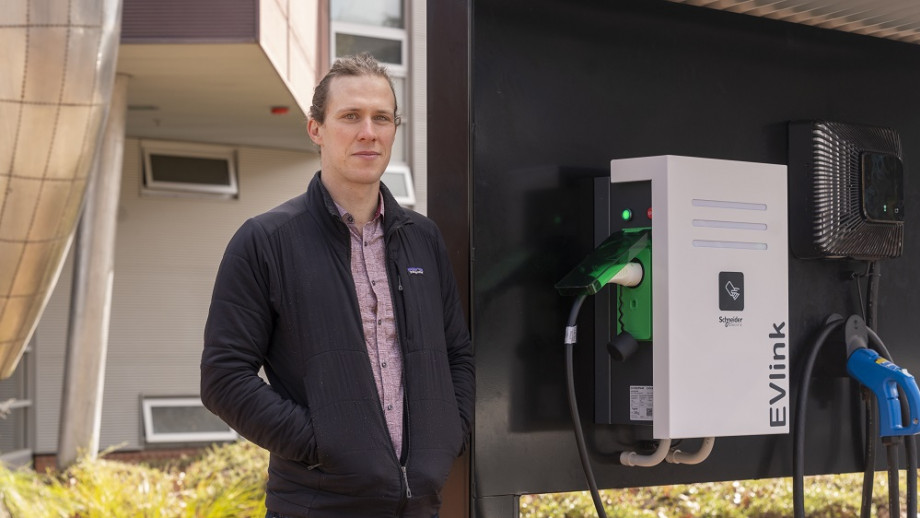
Long Term High-Fat Diet Expands Waistline And Shrinks Brain
Hospital Readmissions For Asthma On The Rise Among Children

Disclaimer: These articles are not intended to provide medical advice, diagnosis or treatment. Views expressed here do not necessarily reflect those of Pittwater Online News or its staff.
